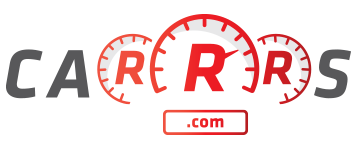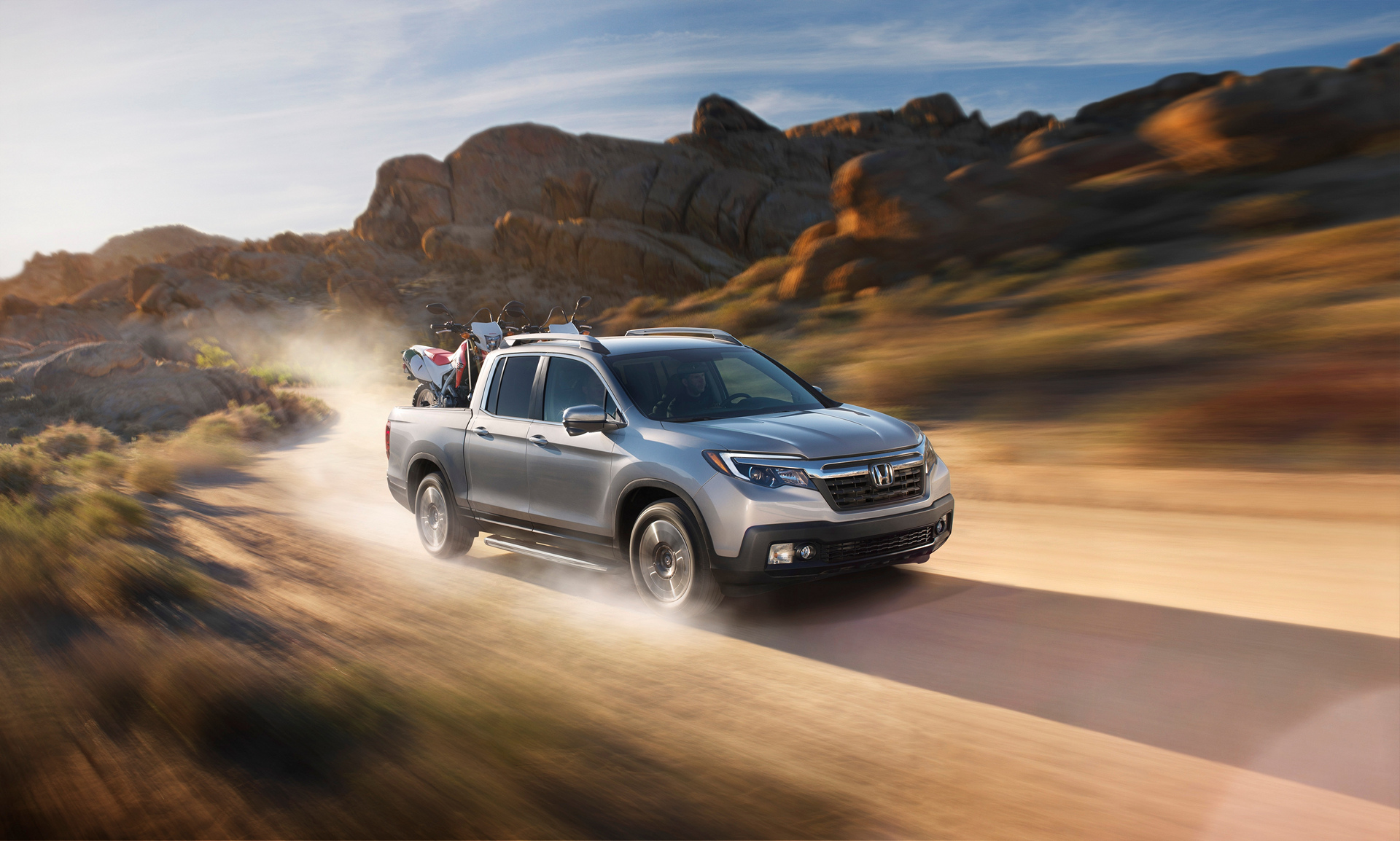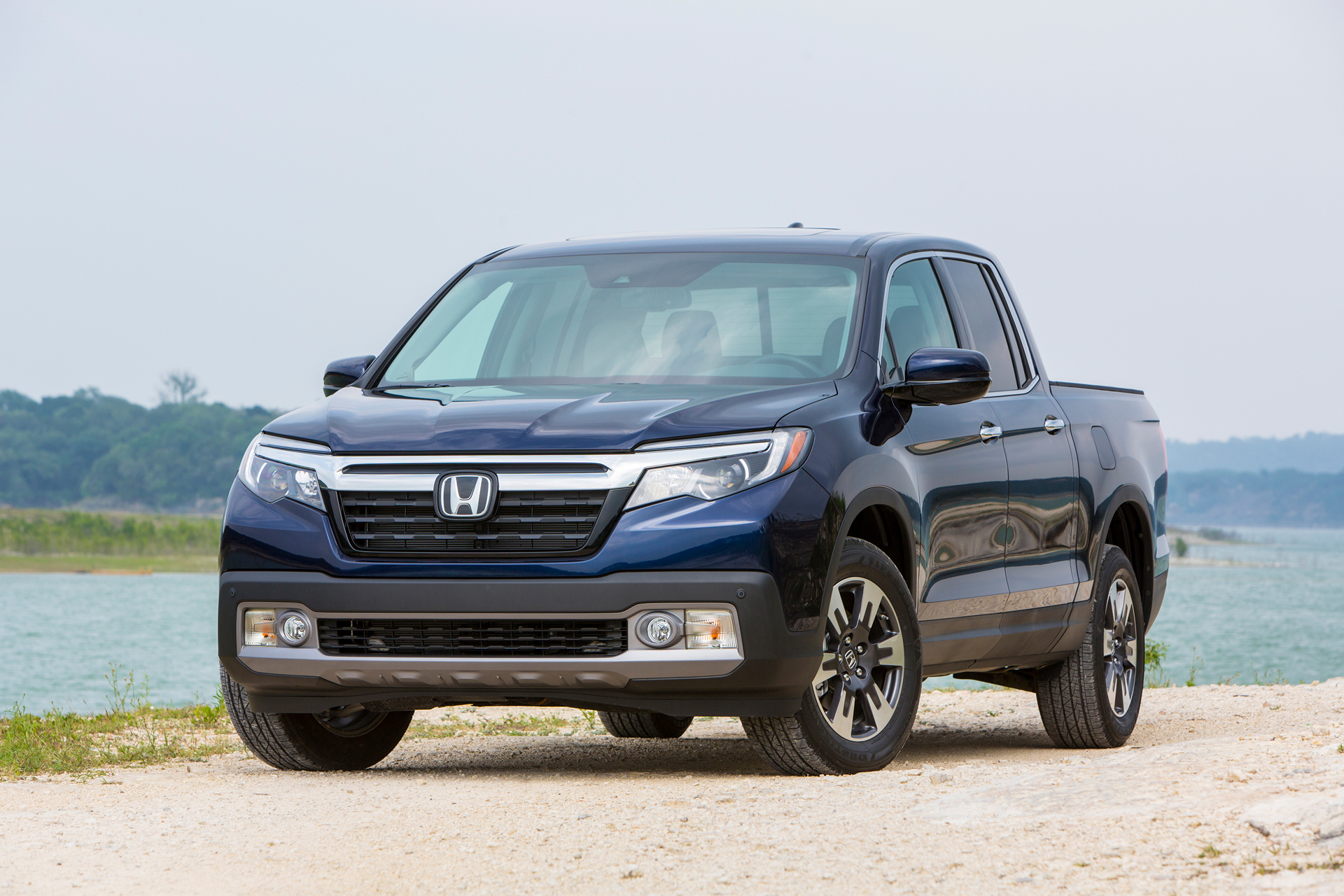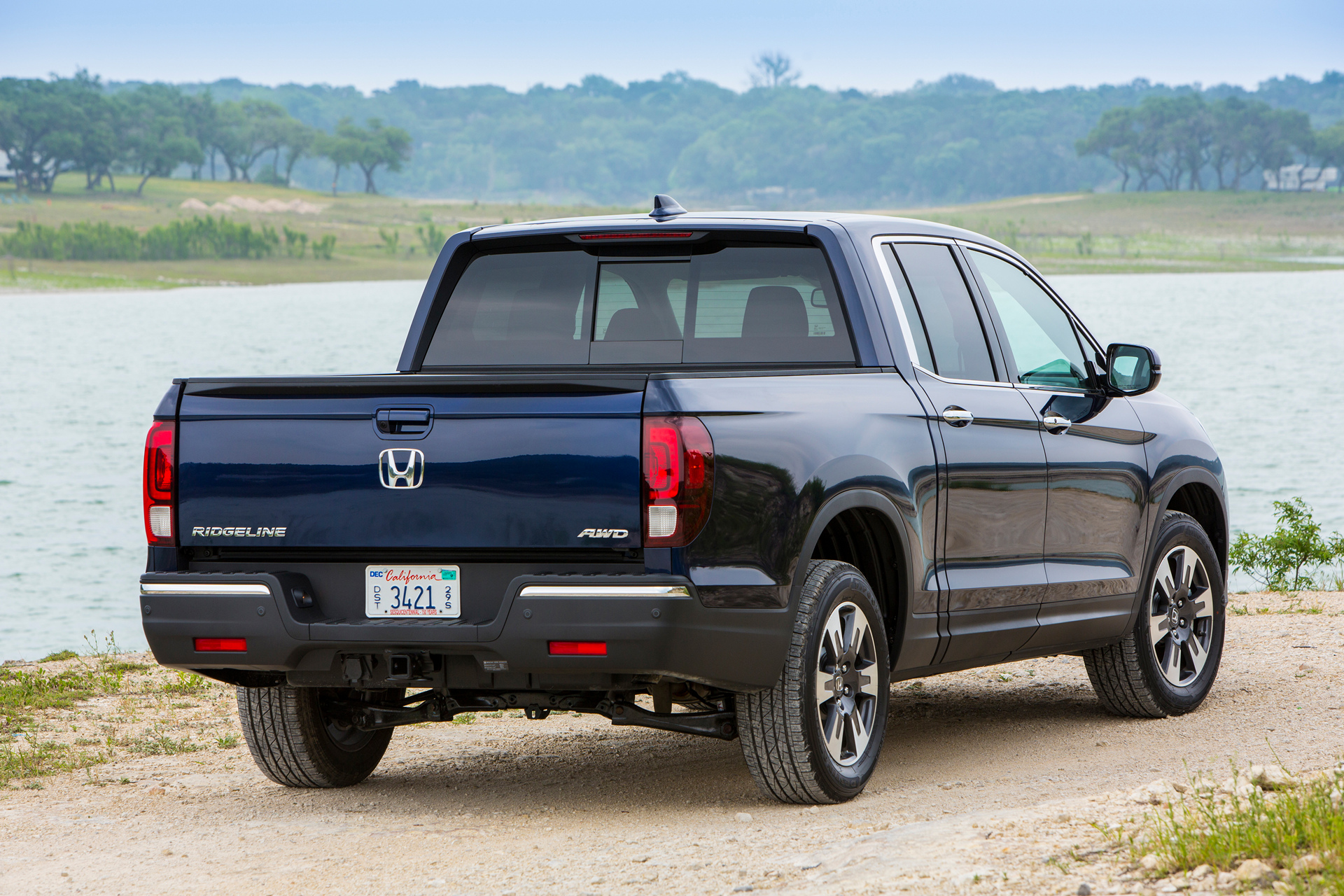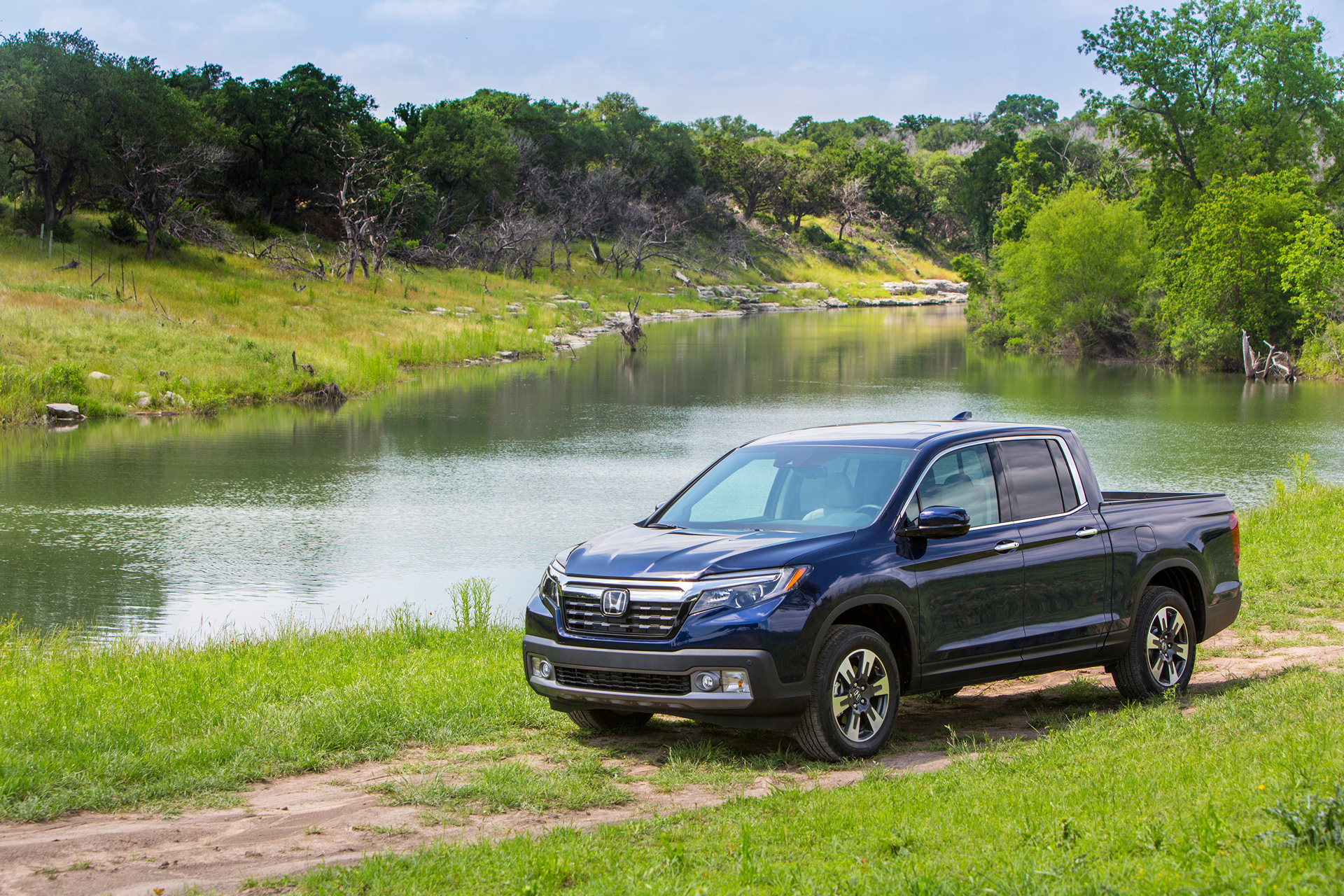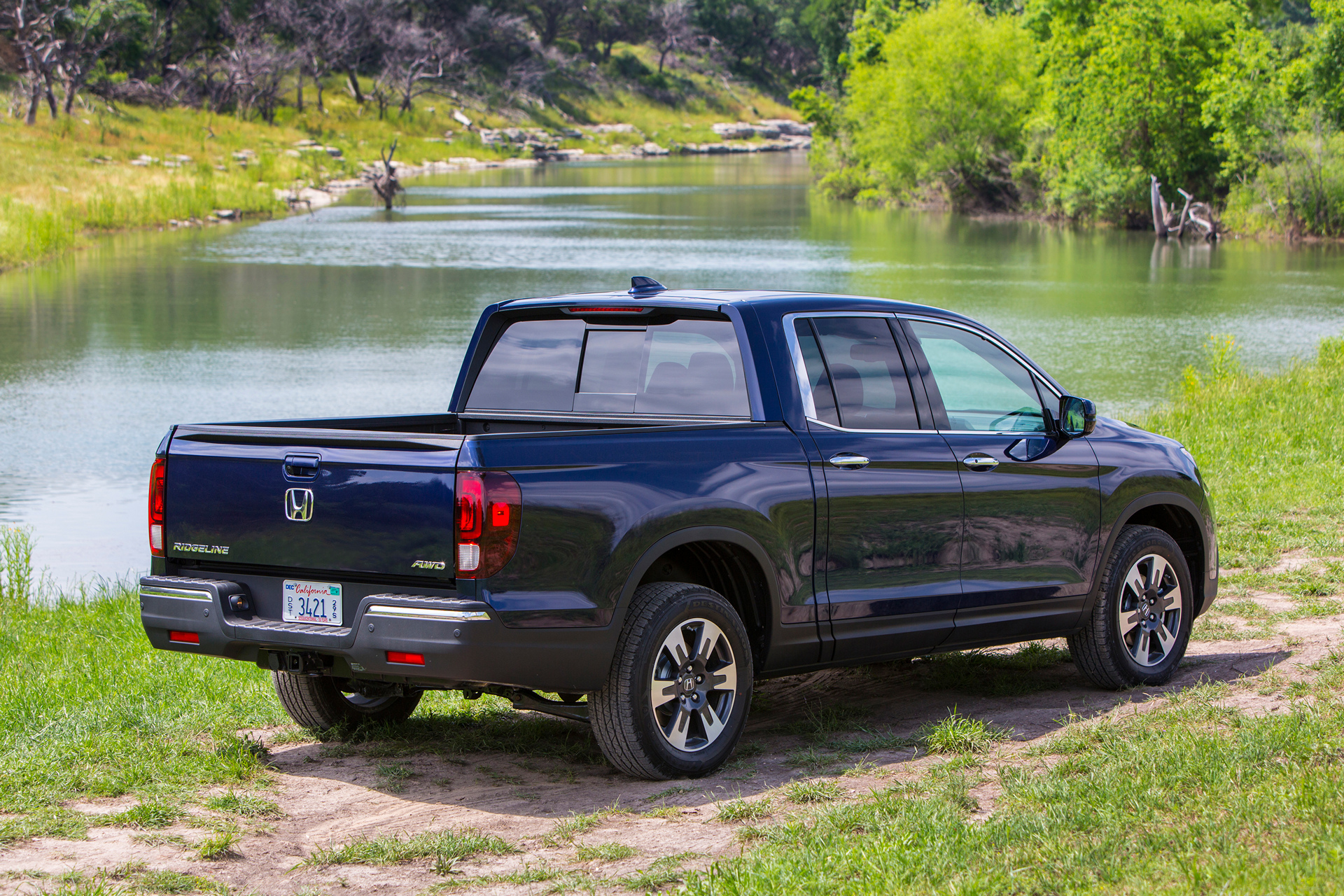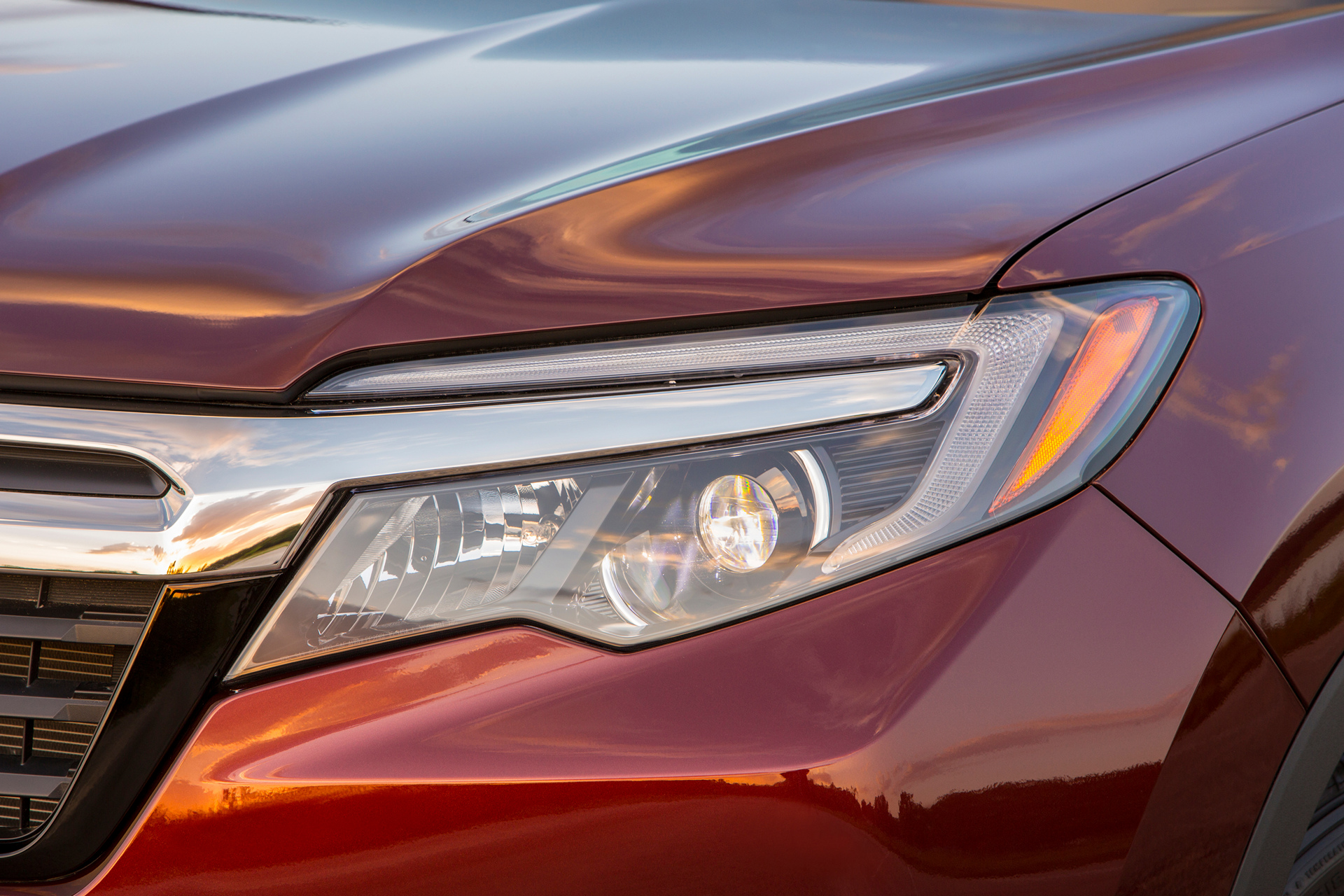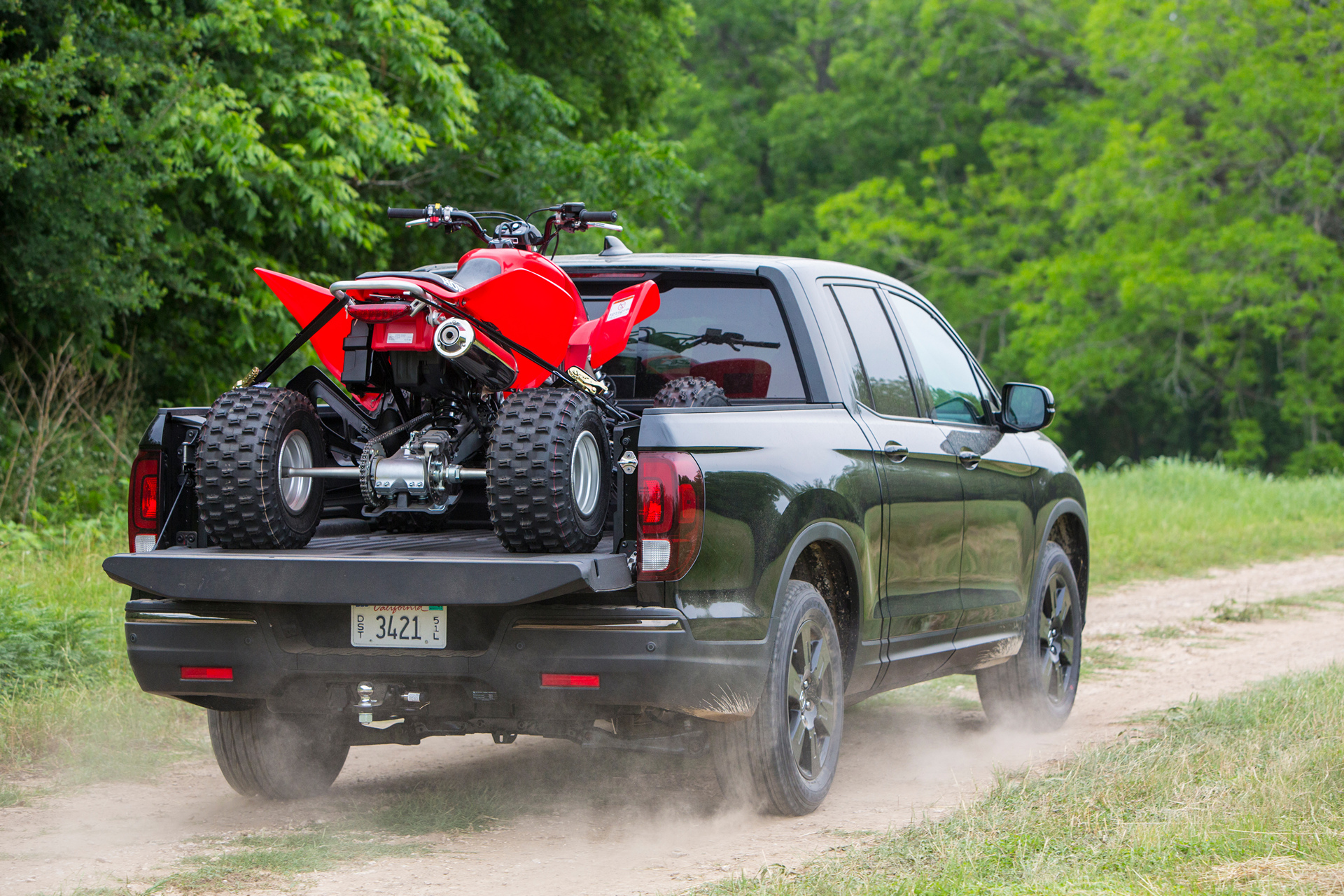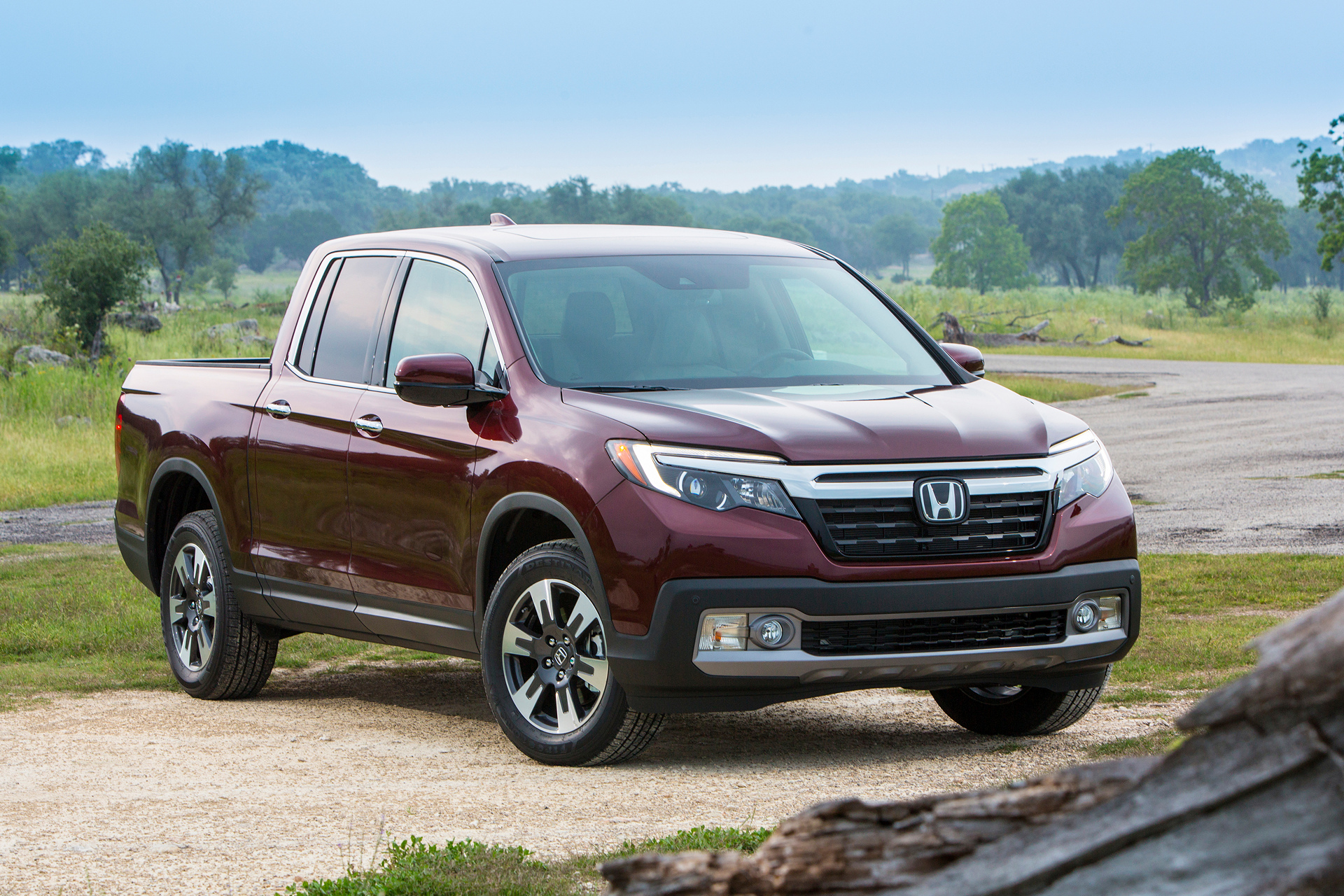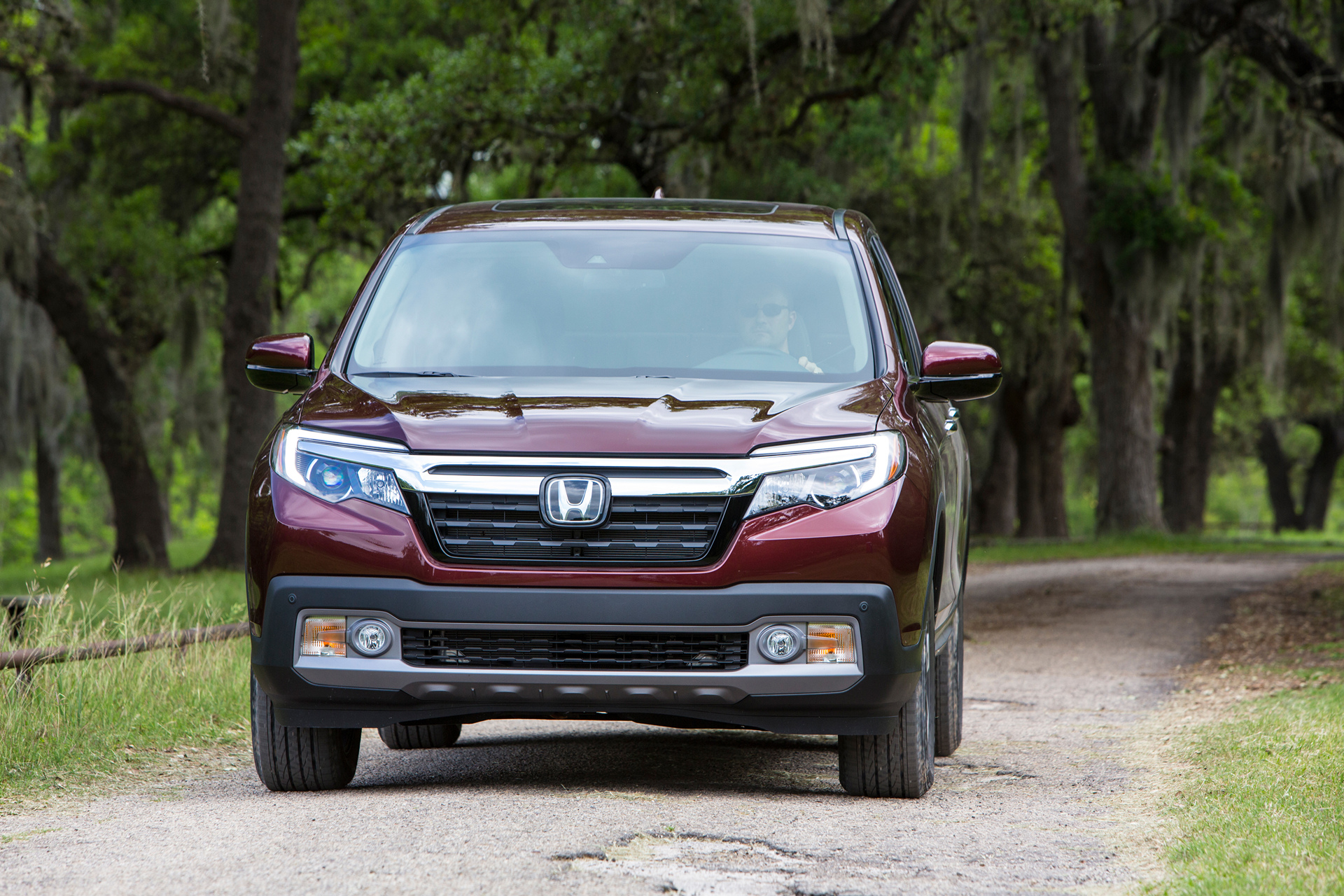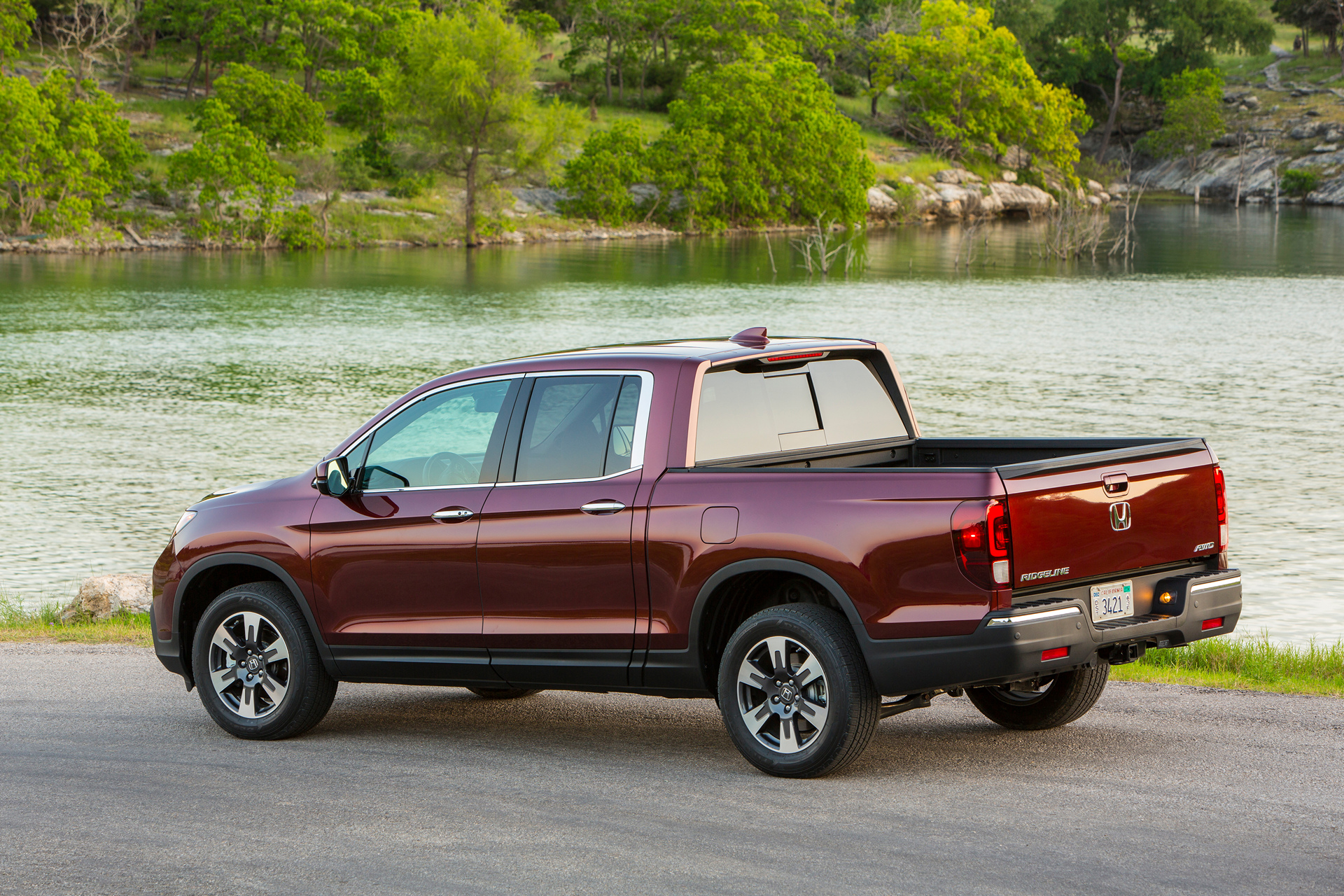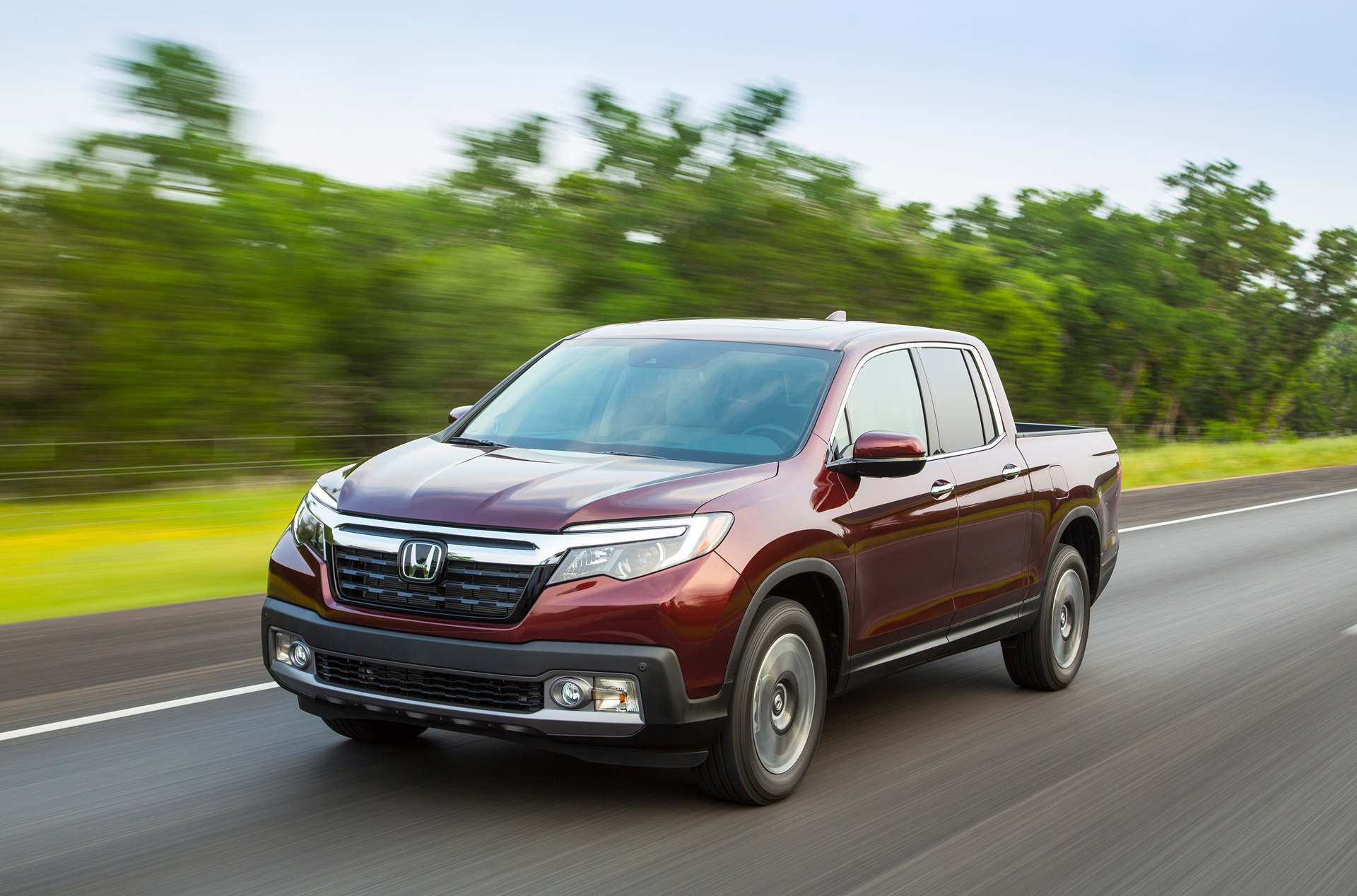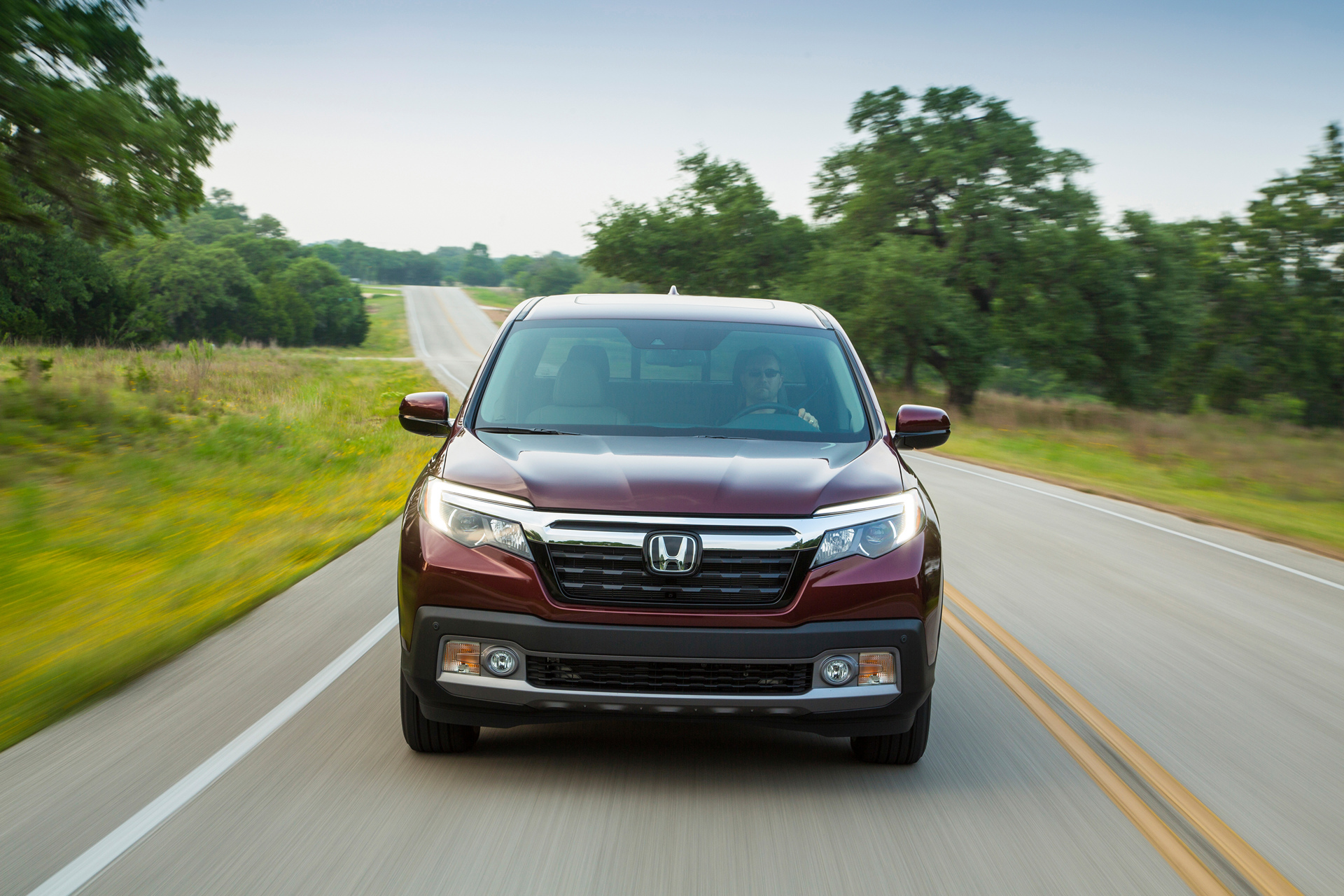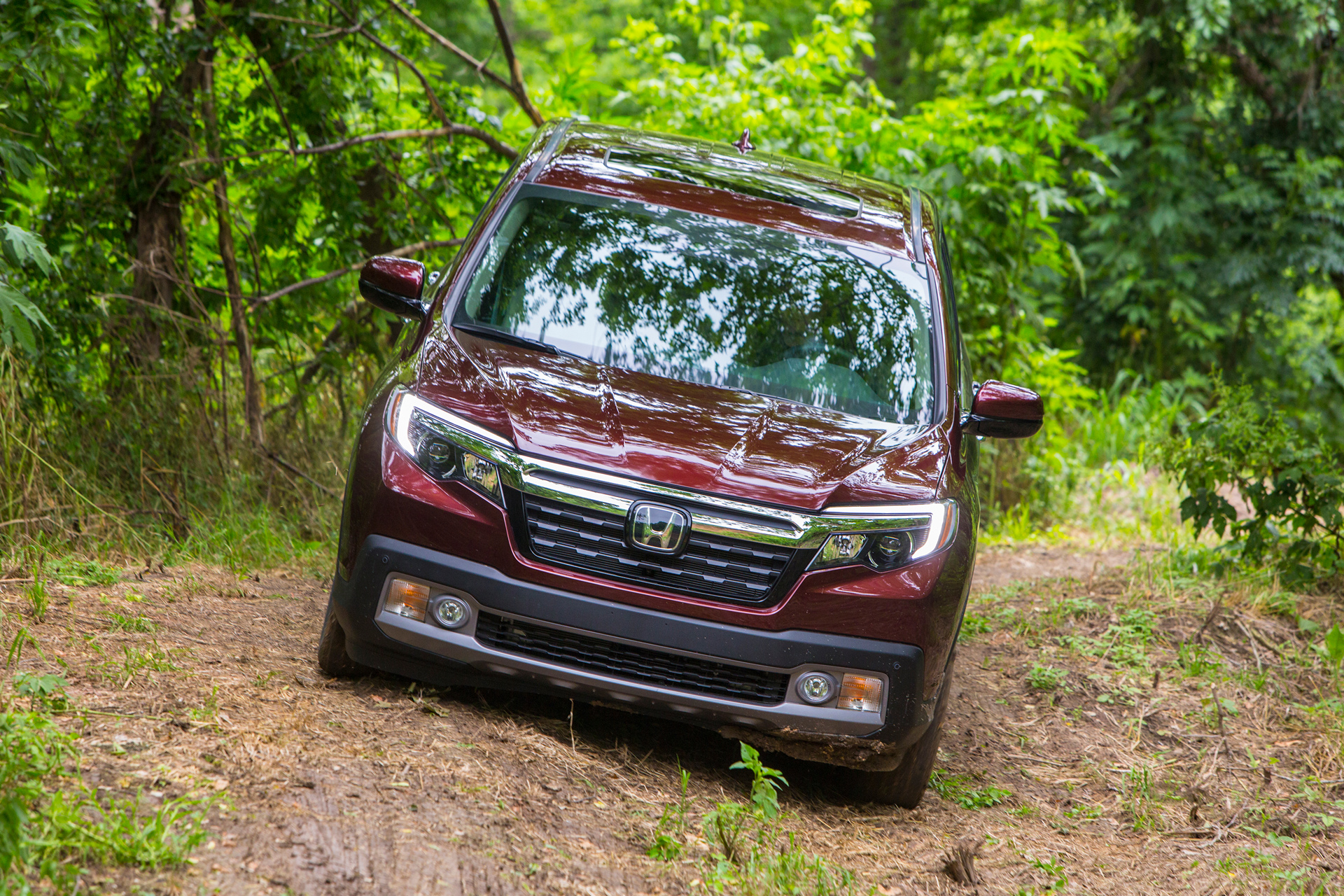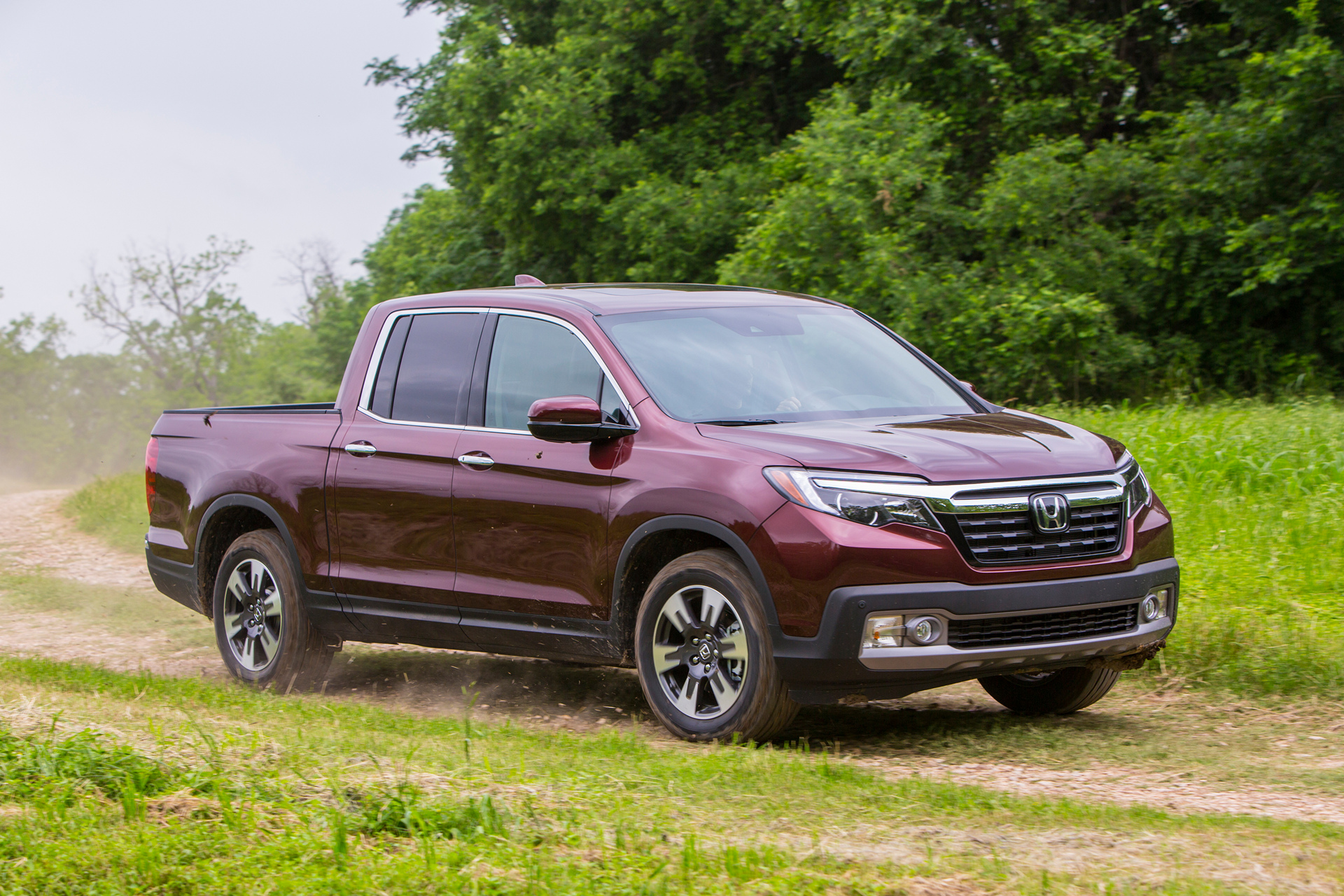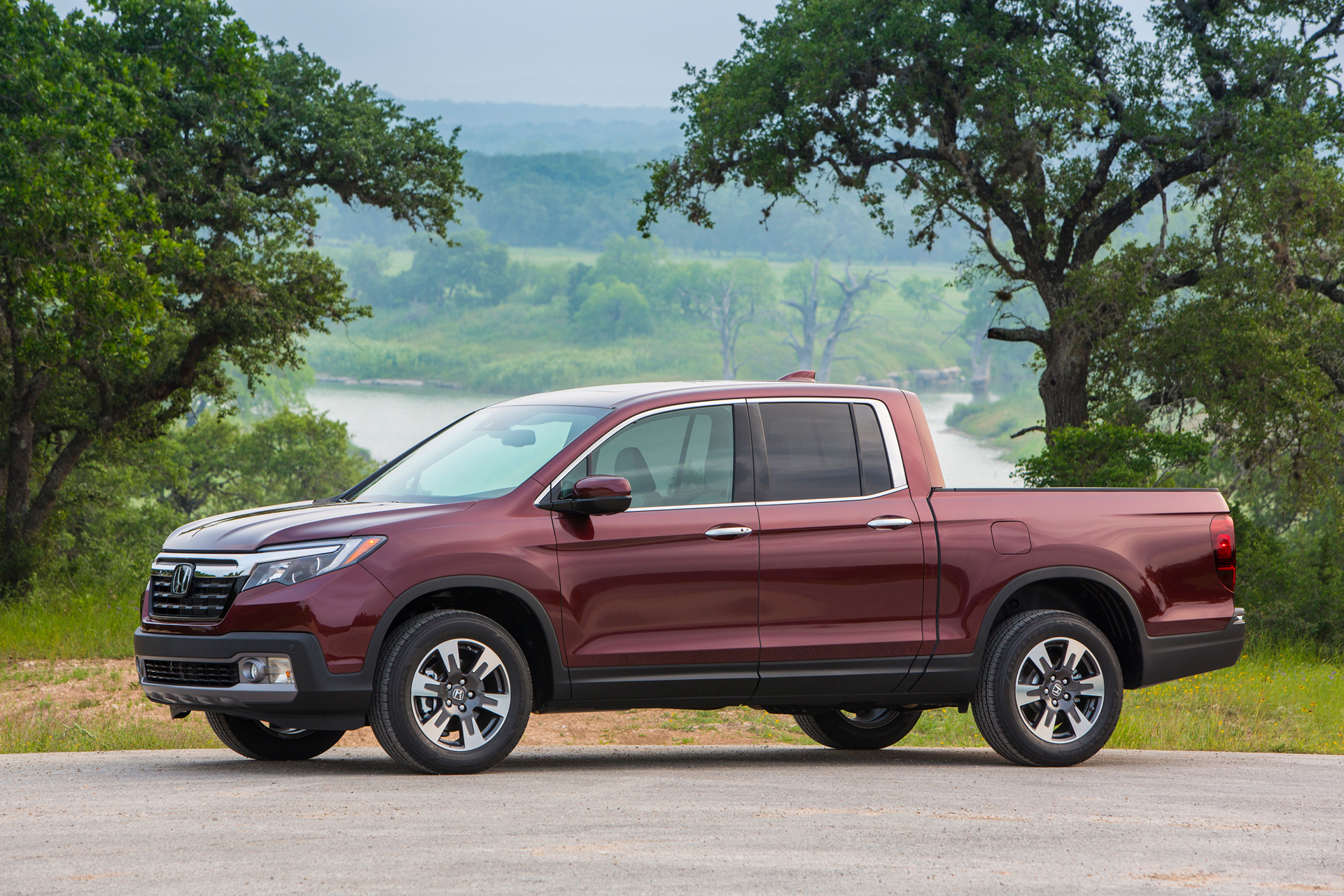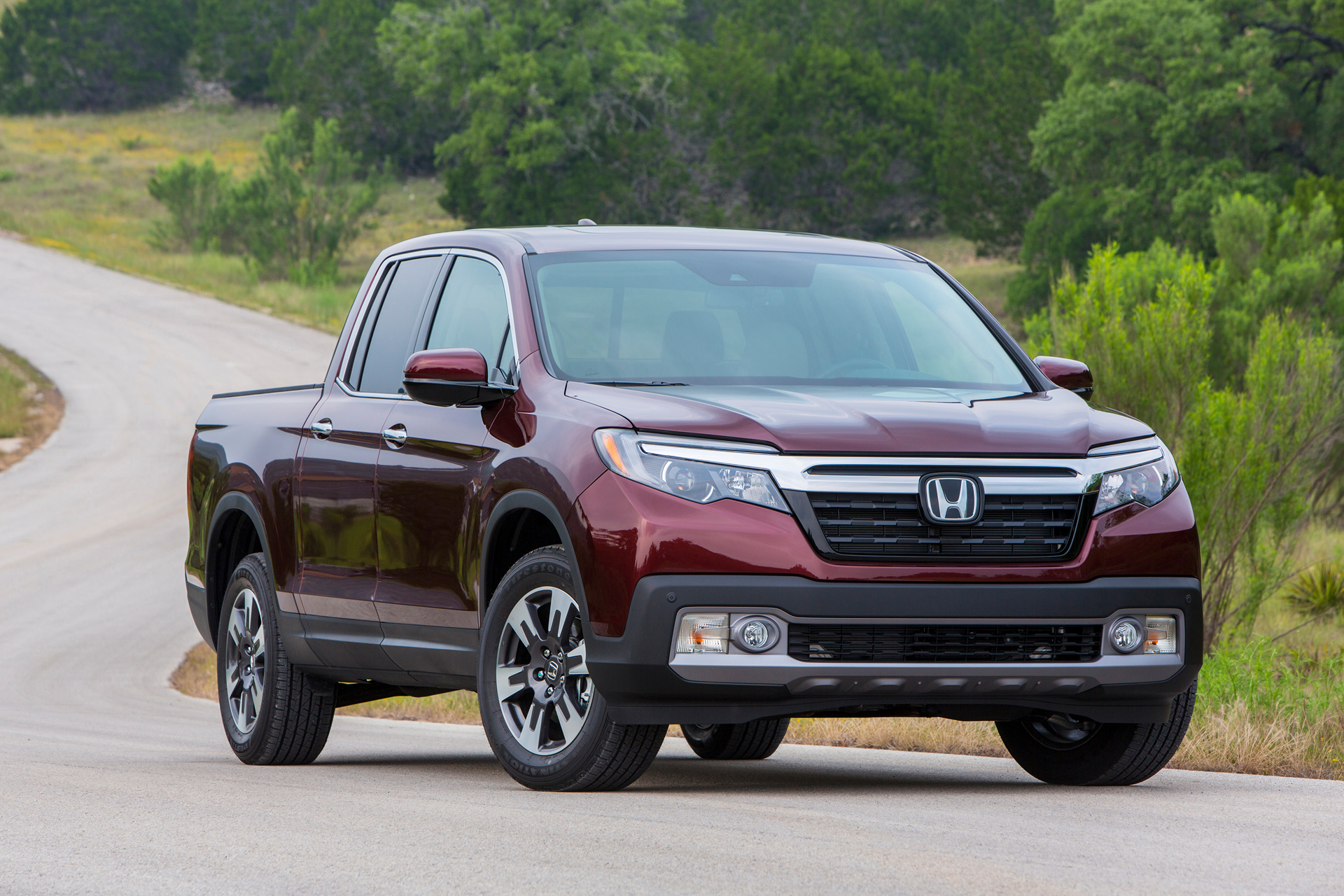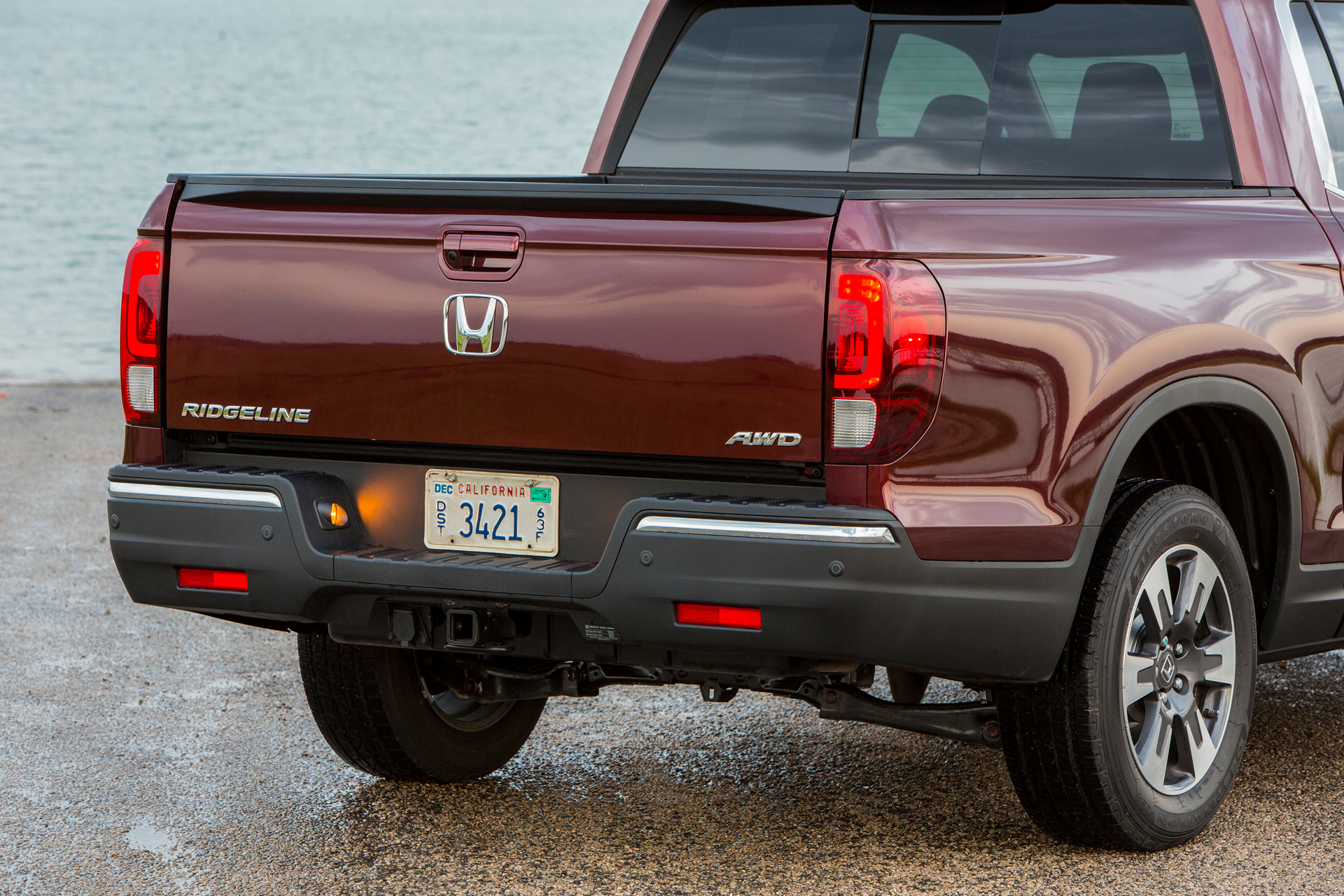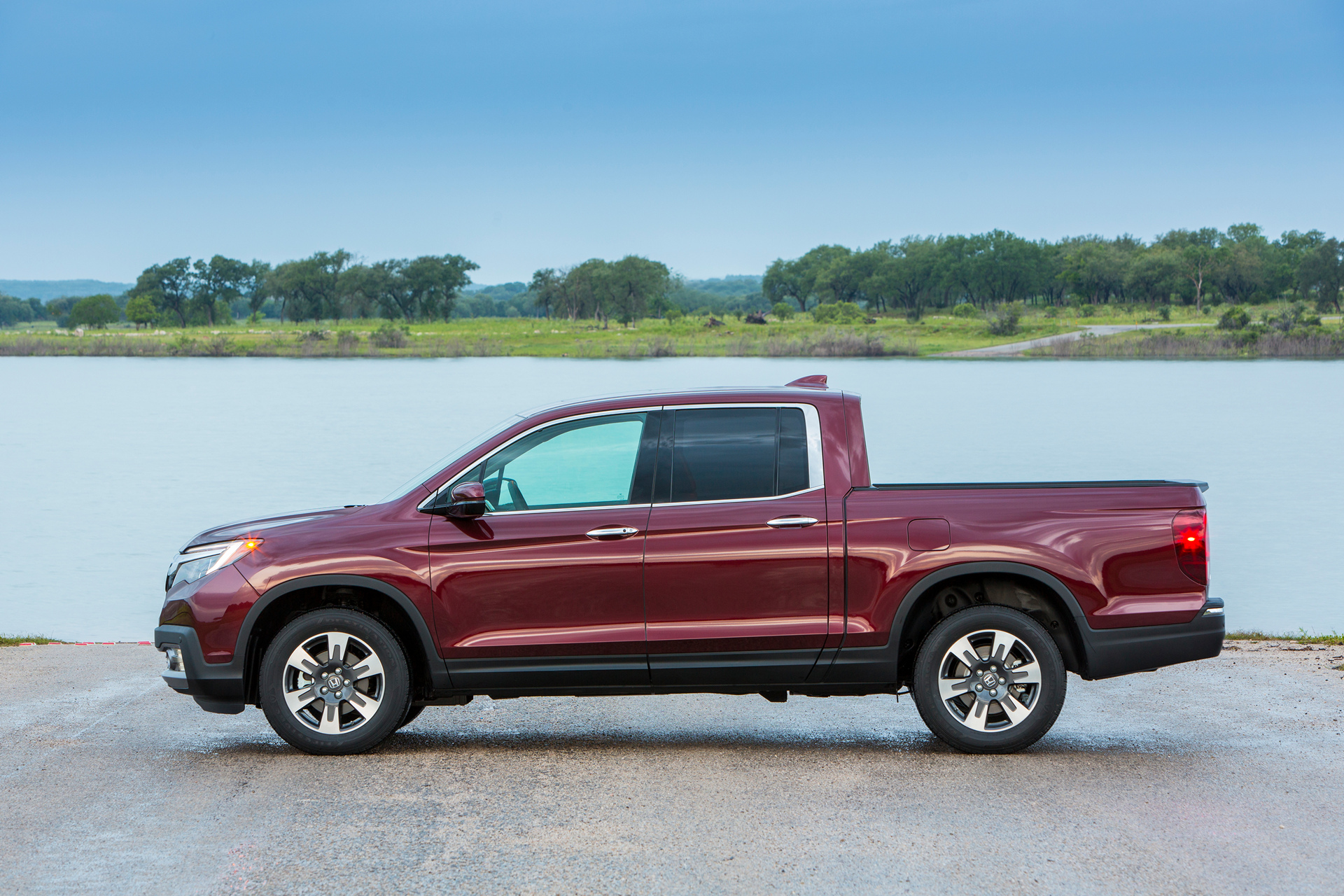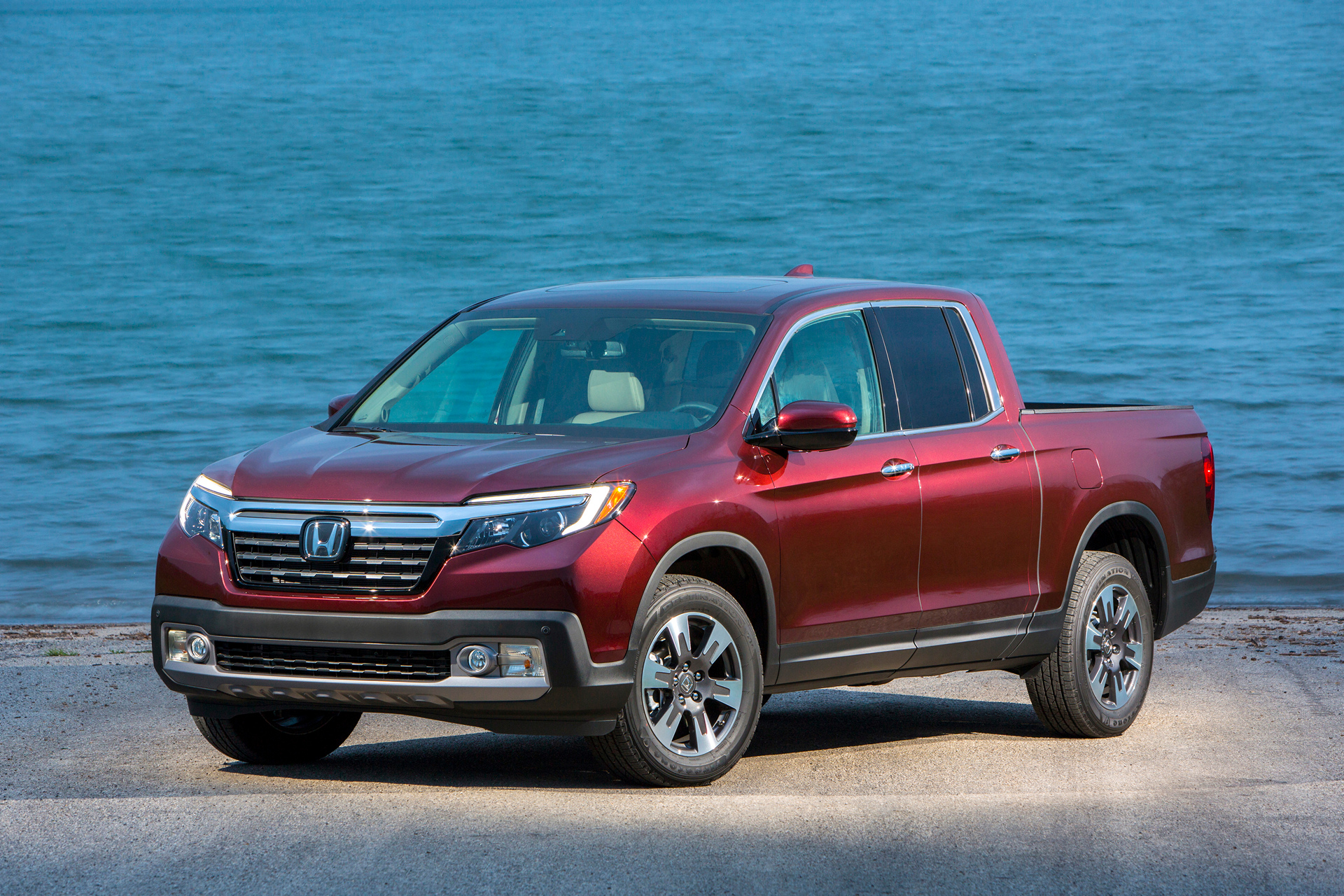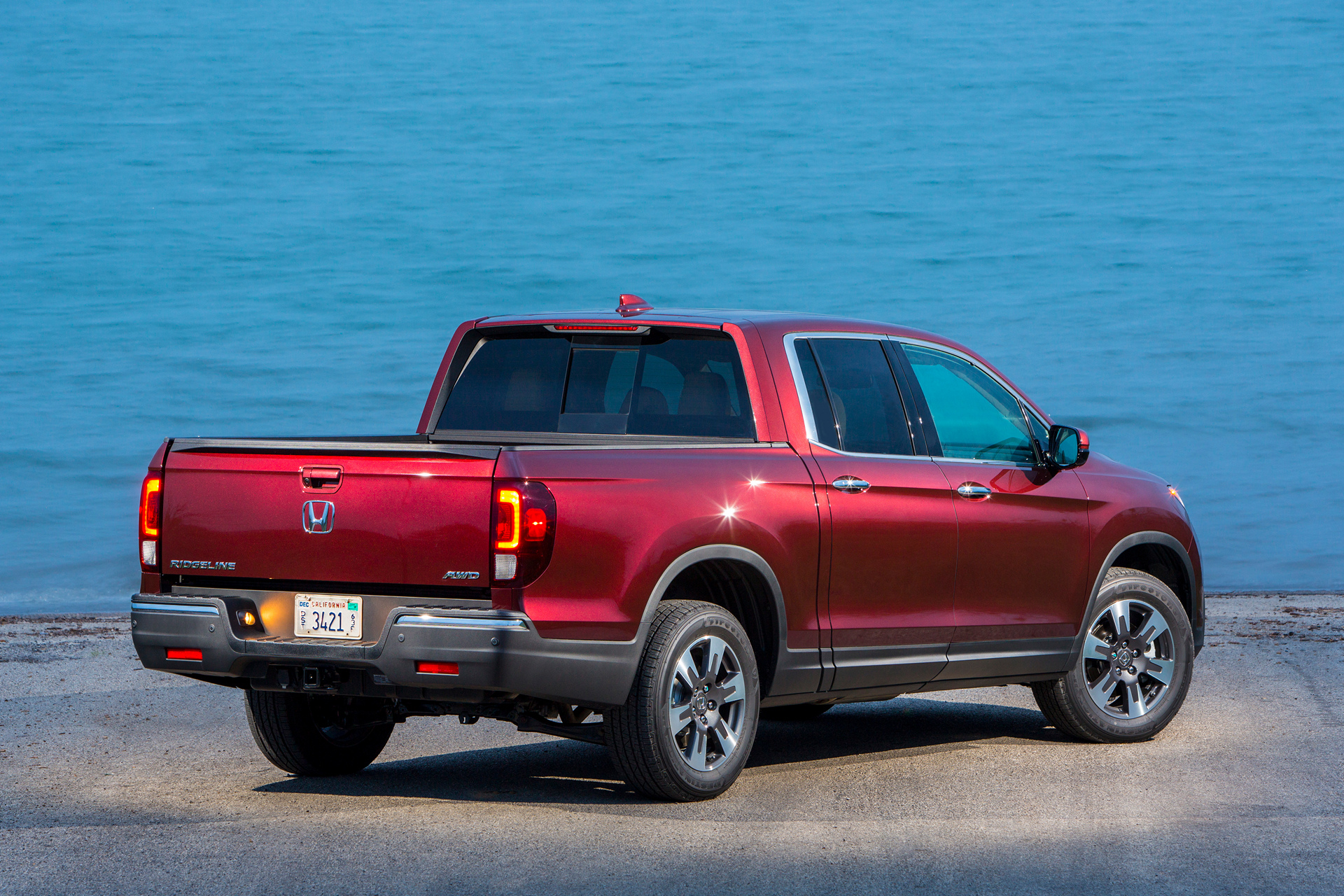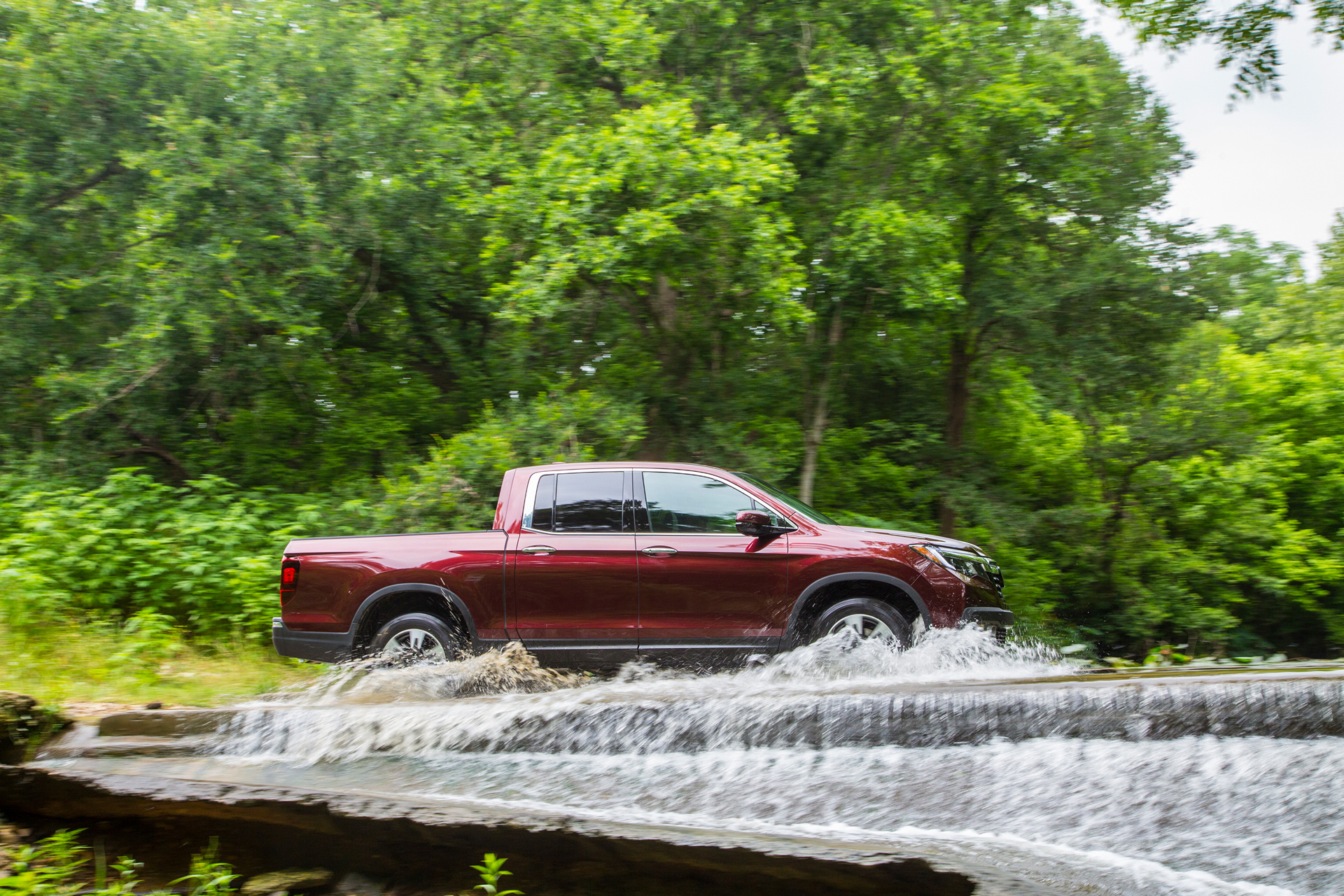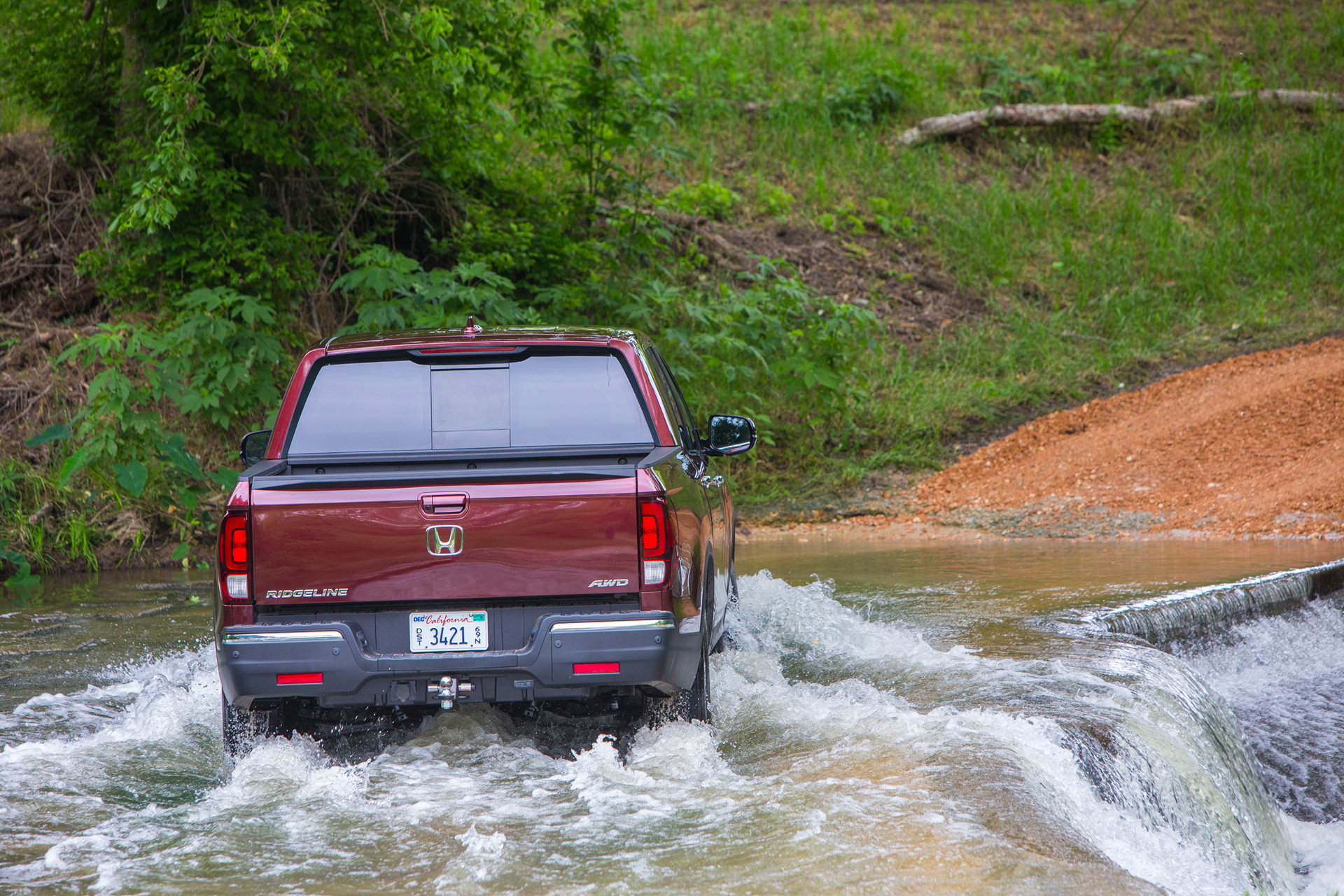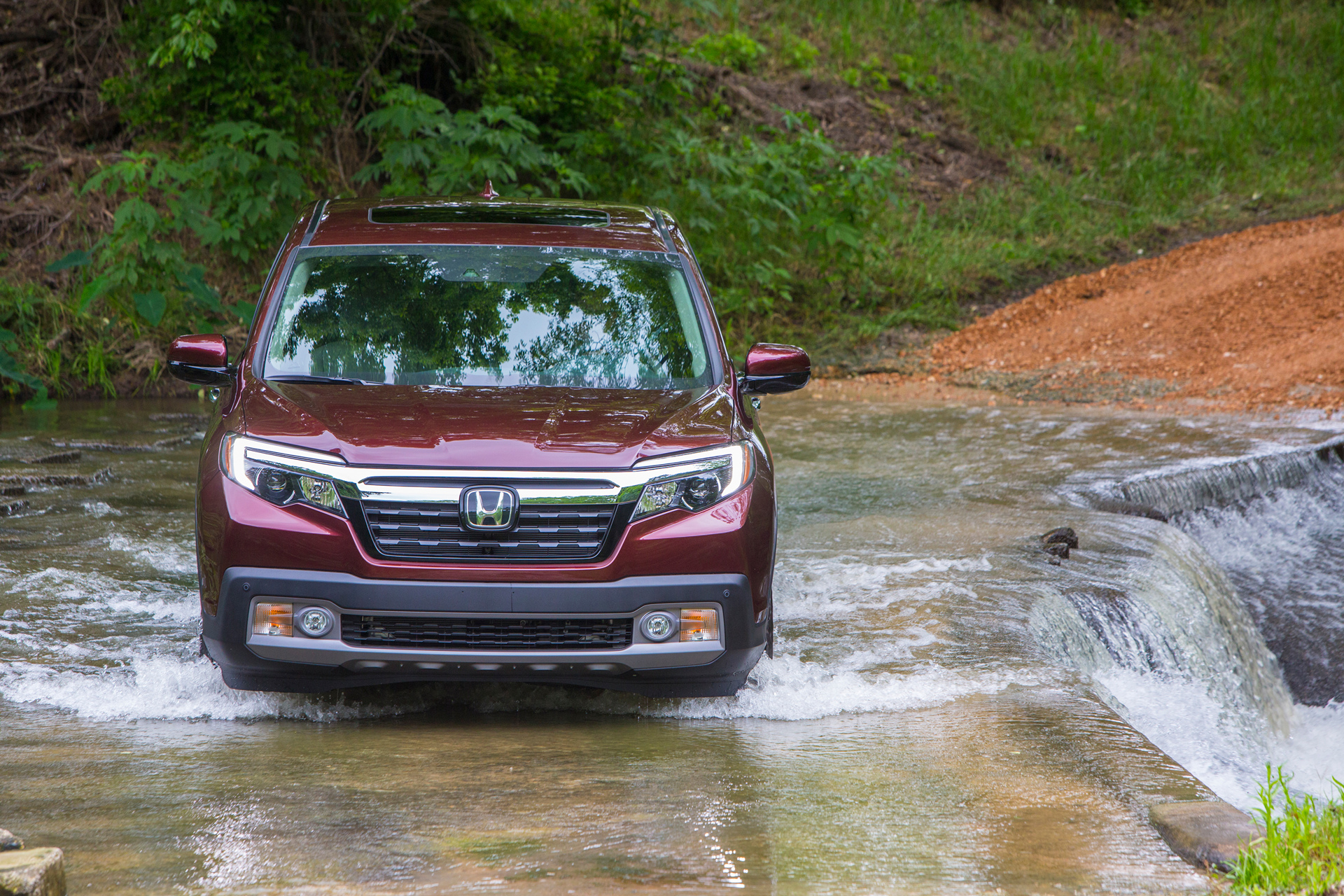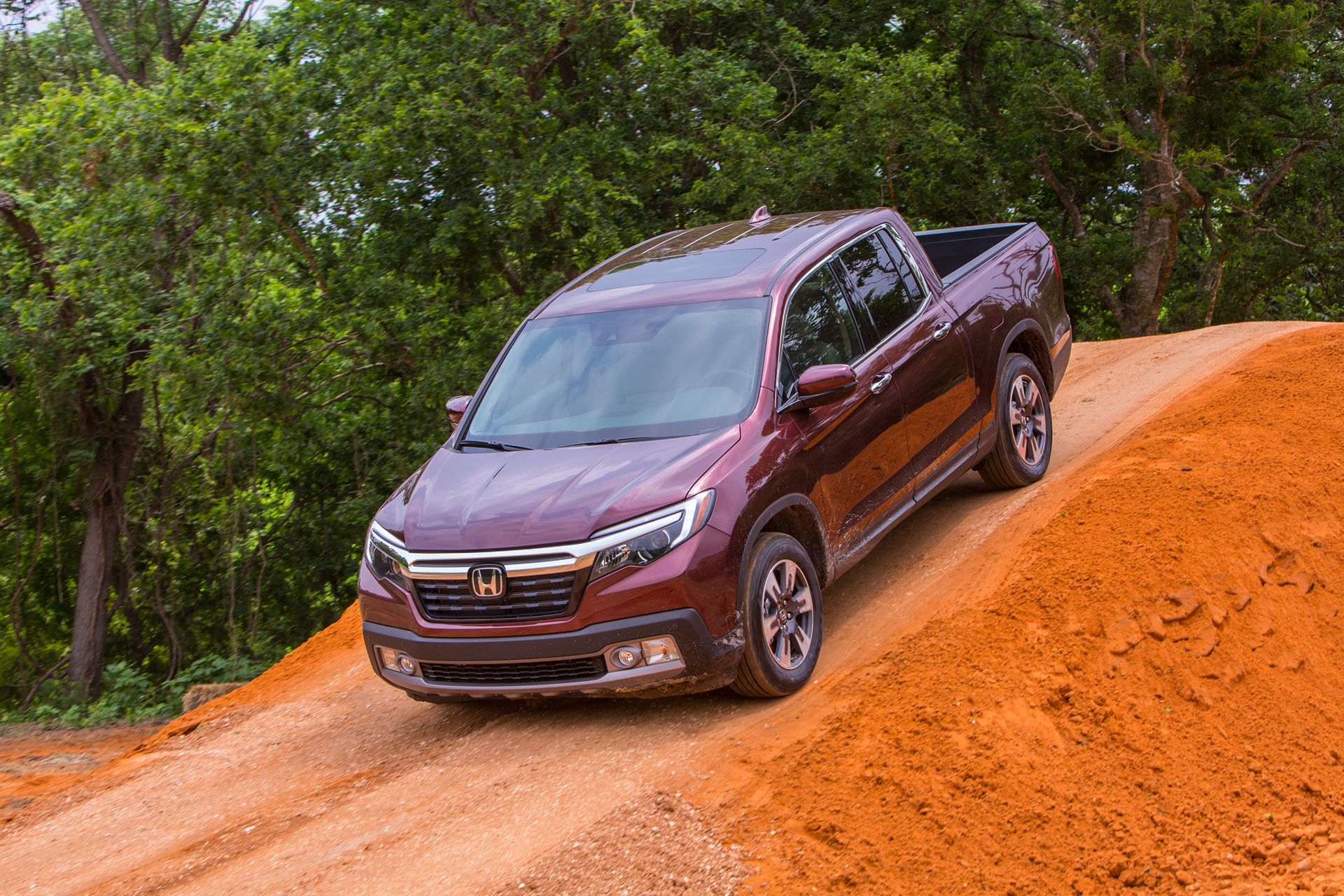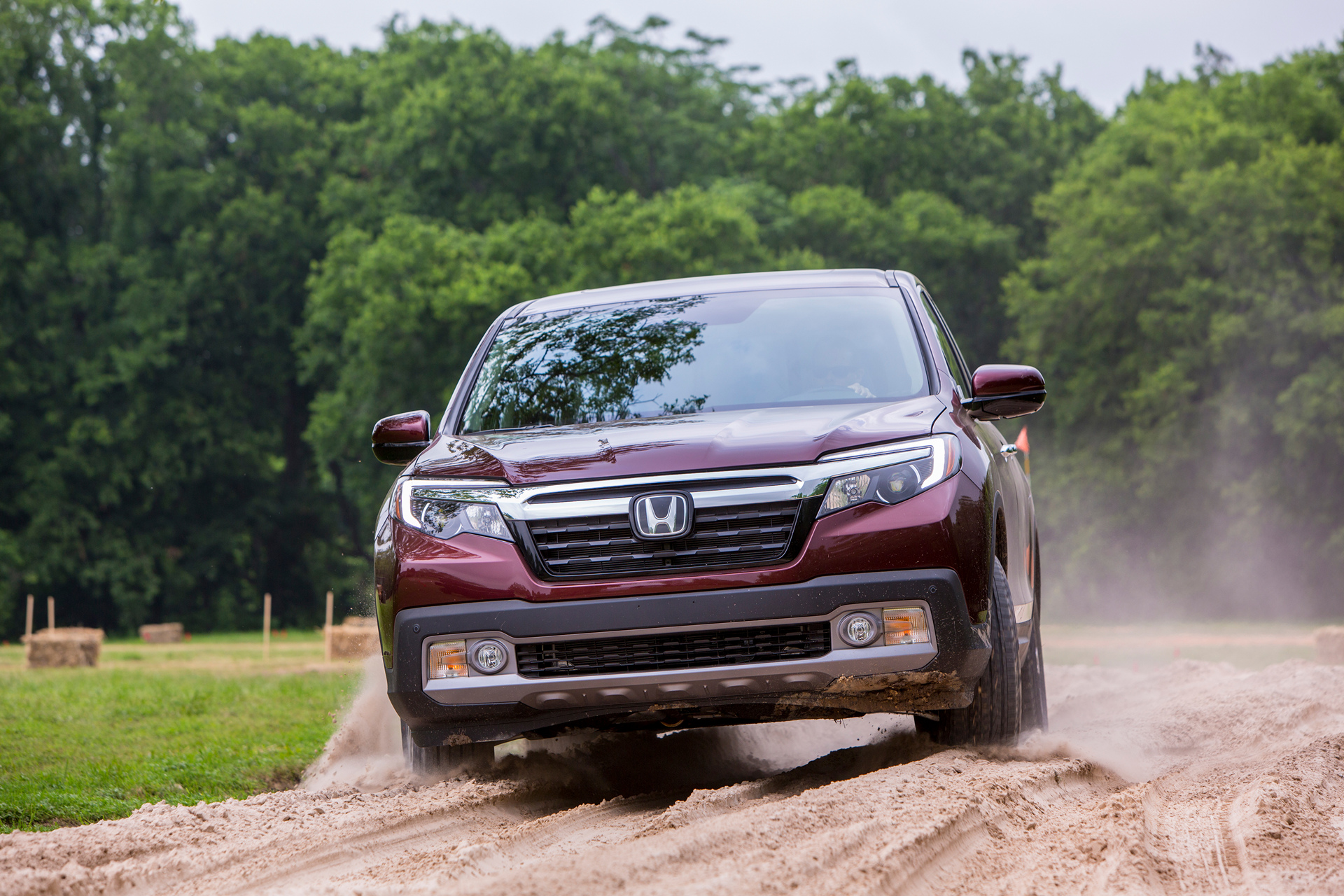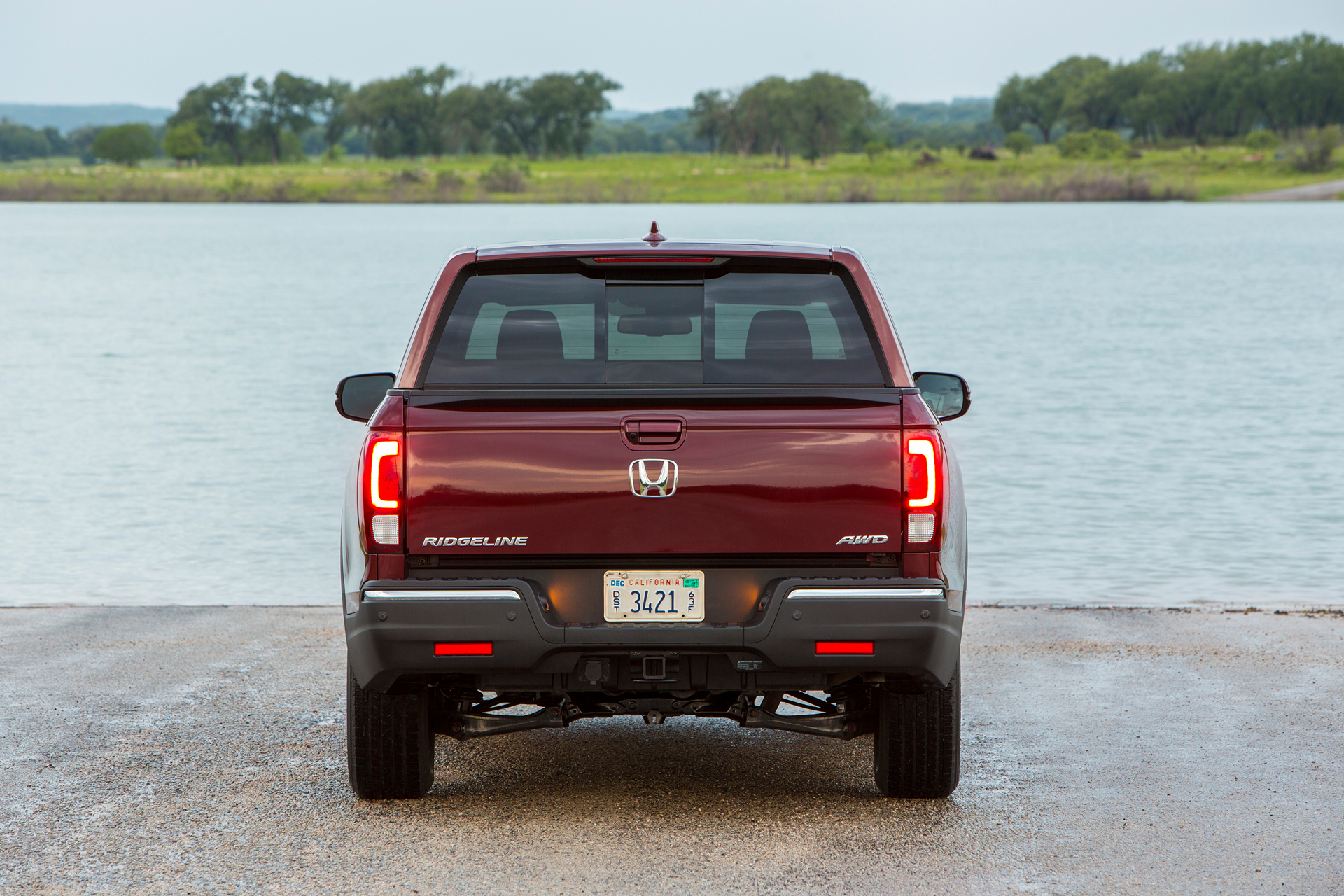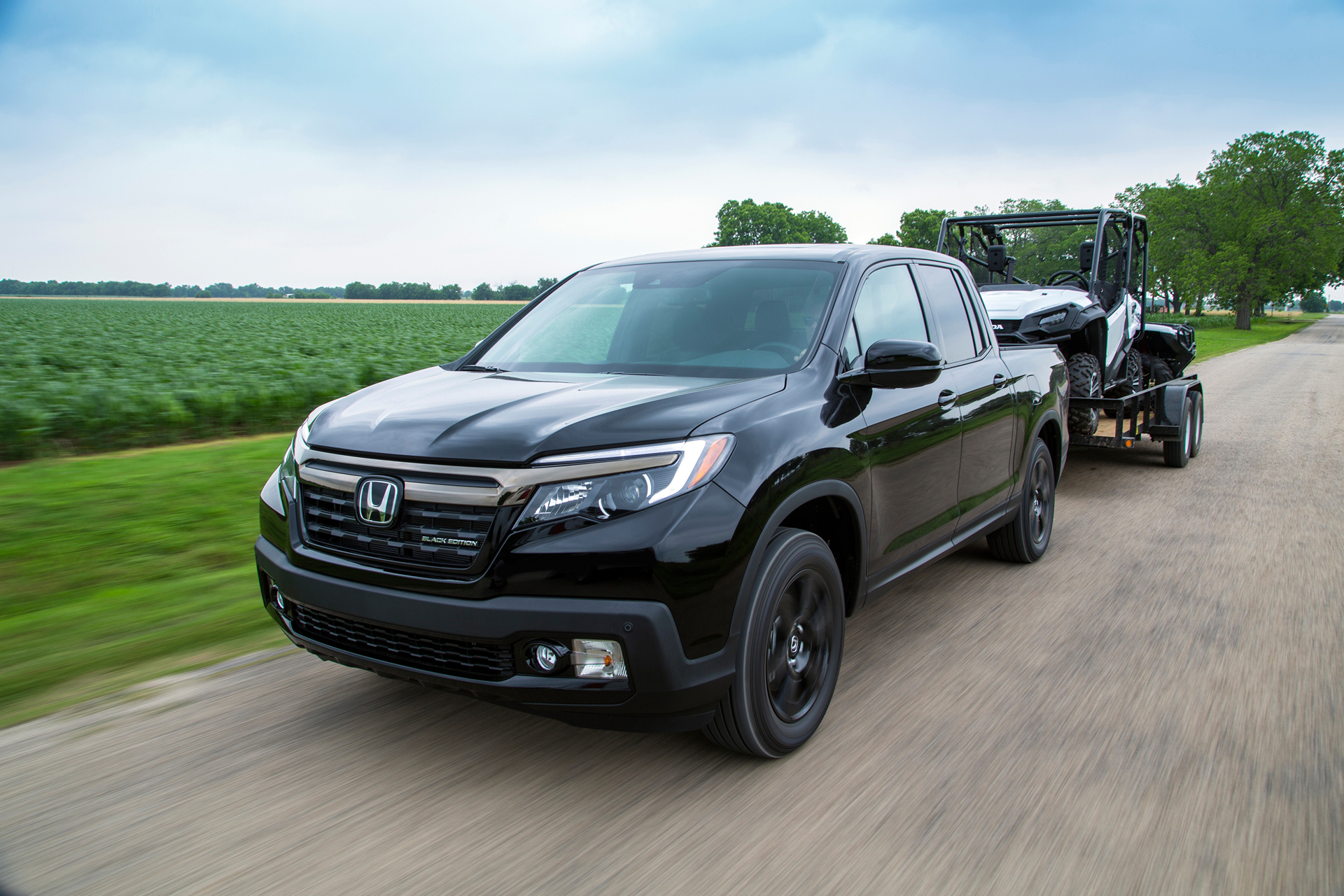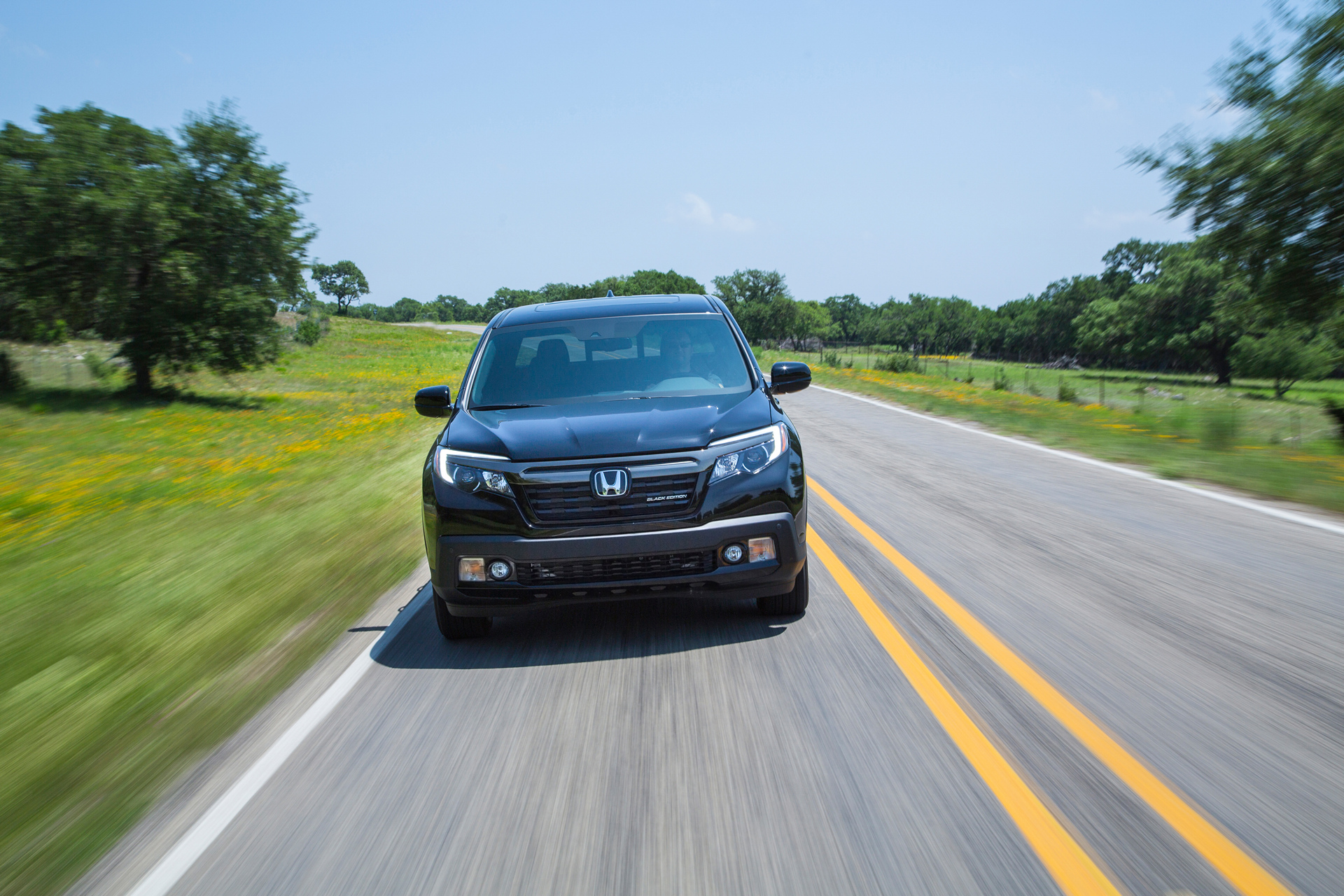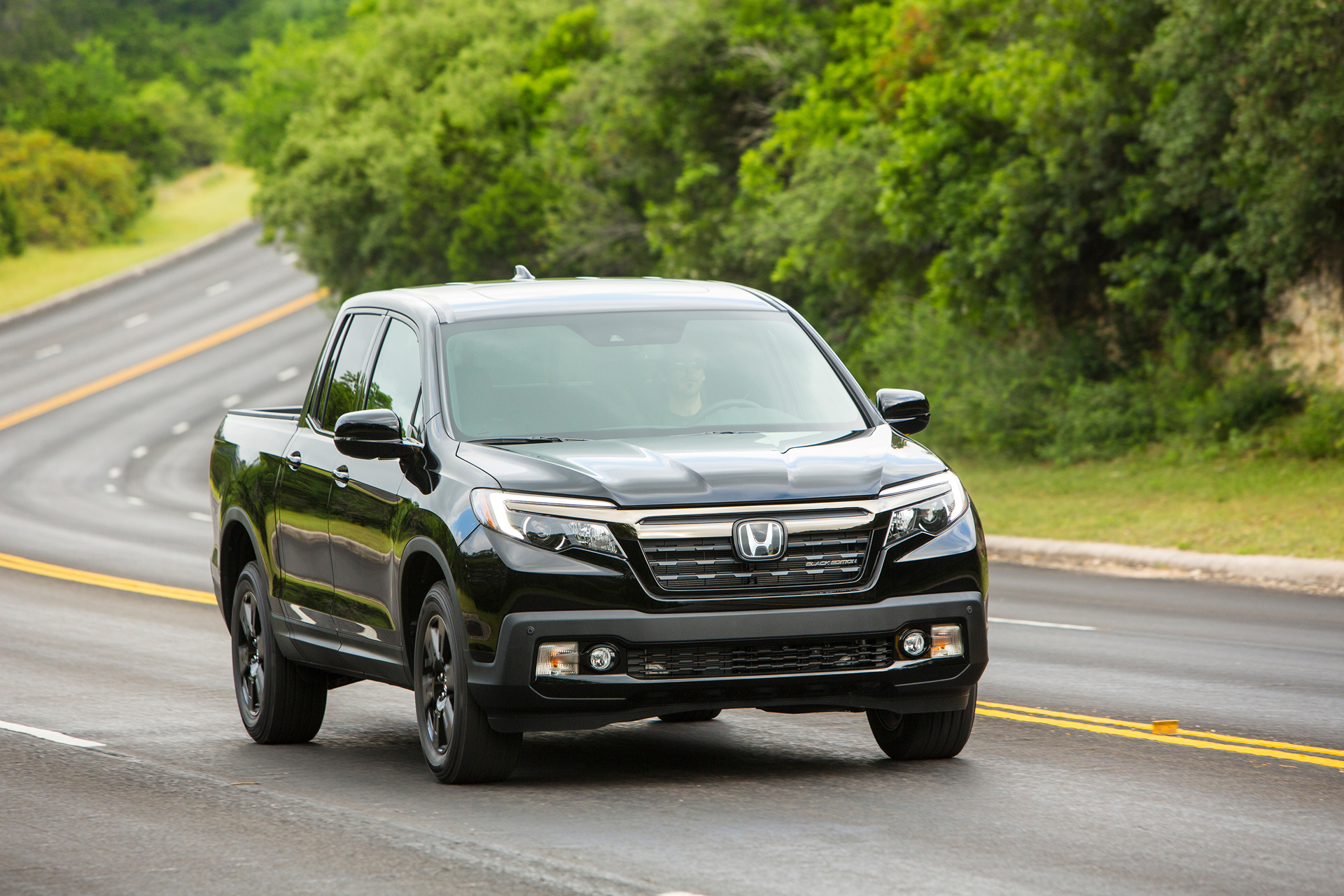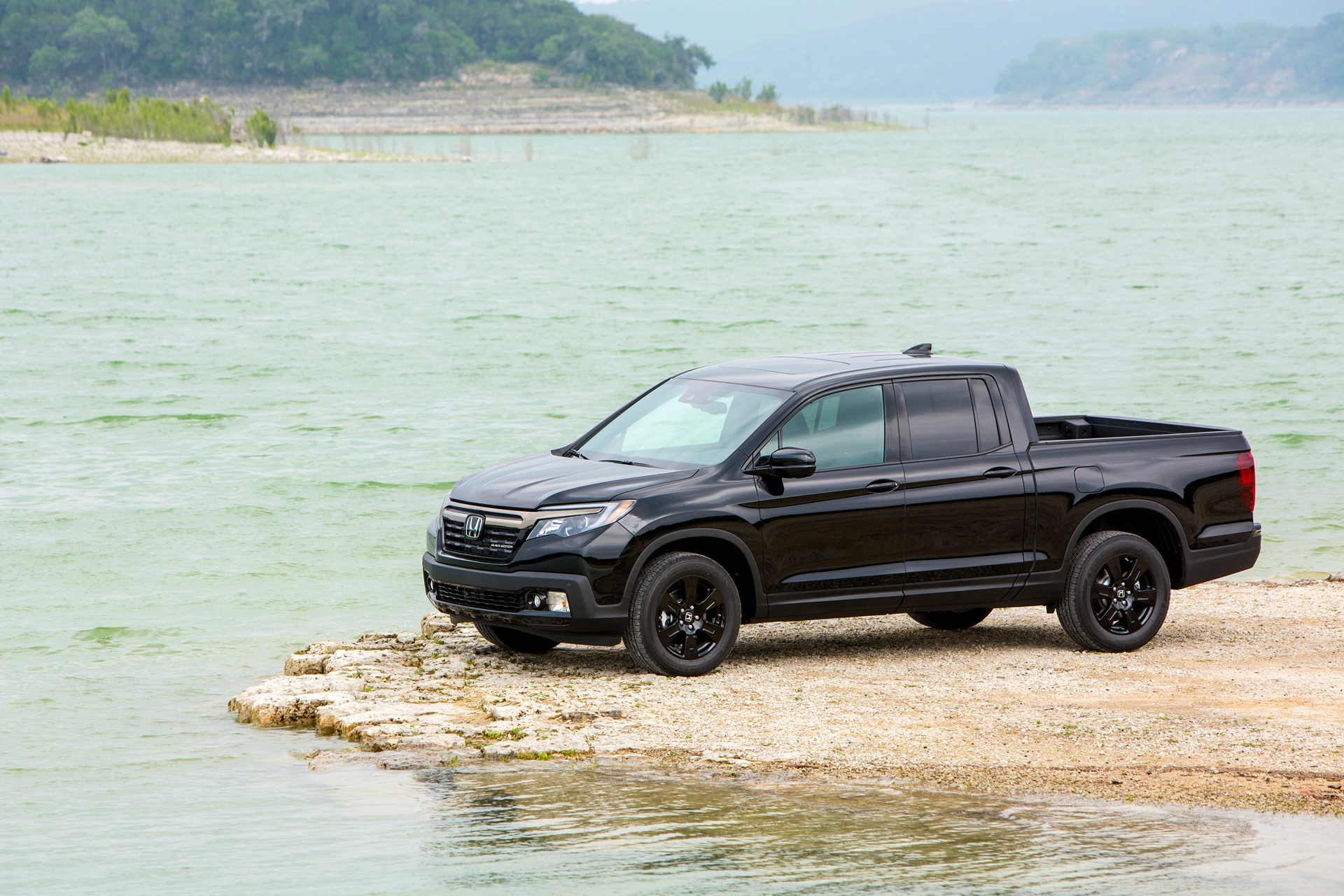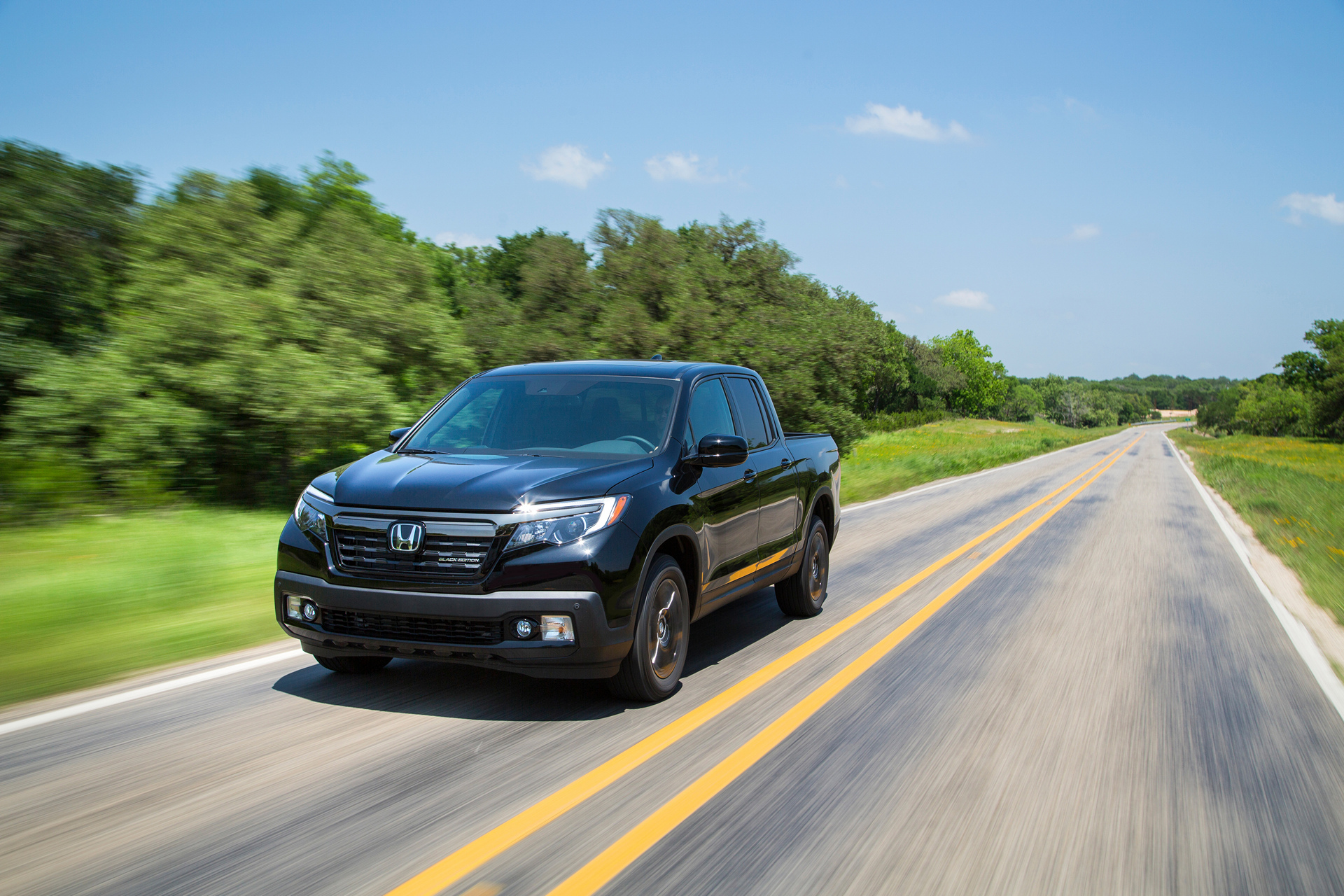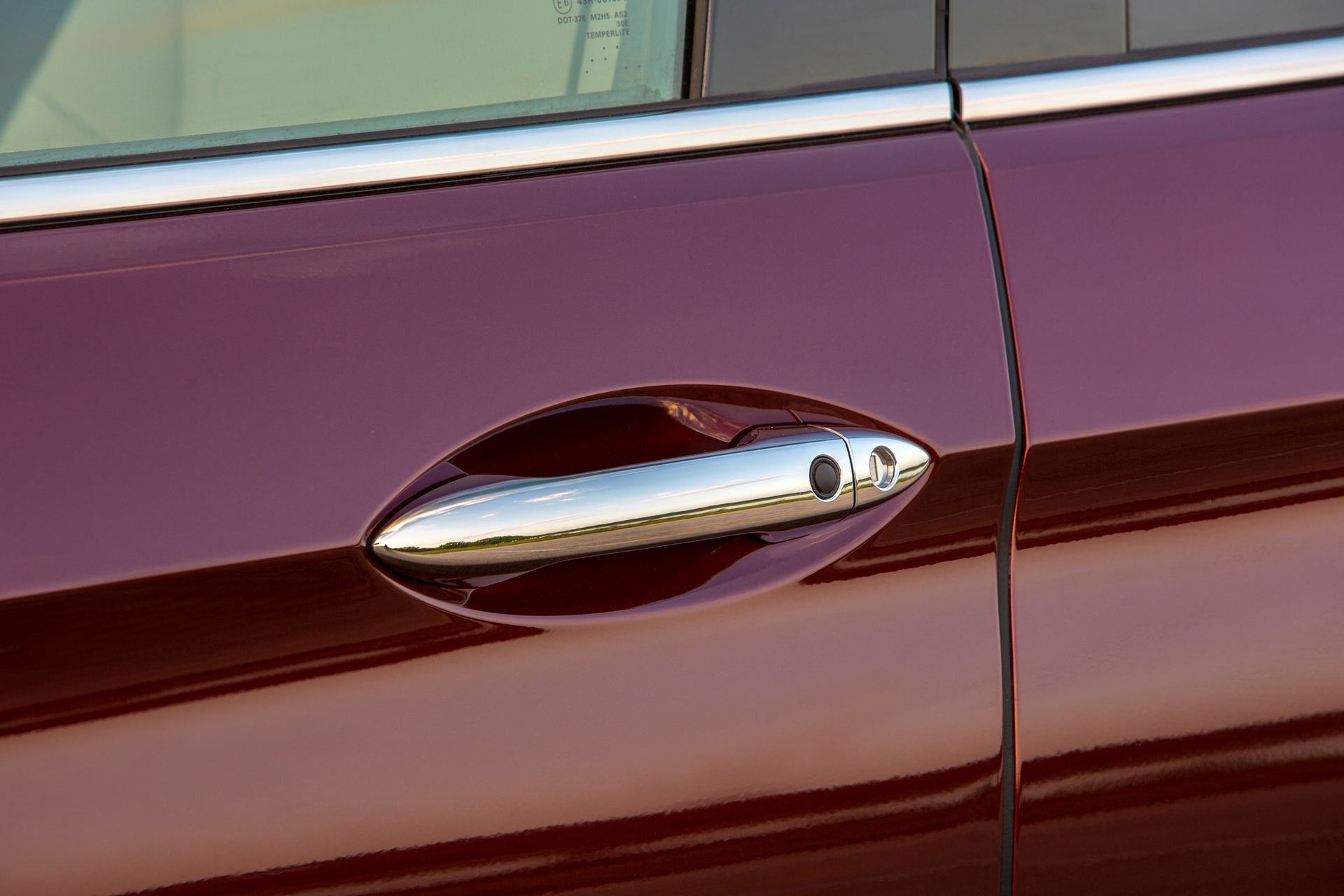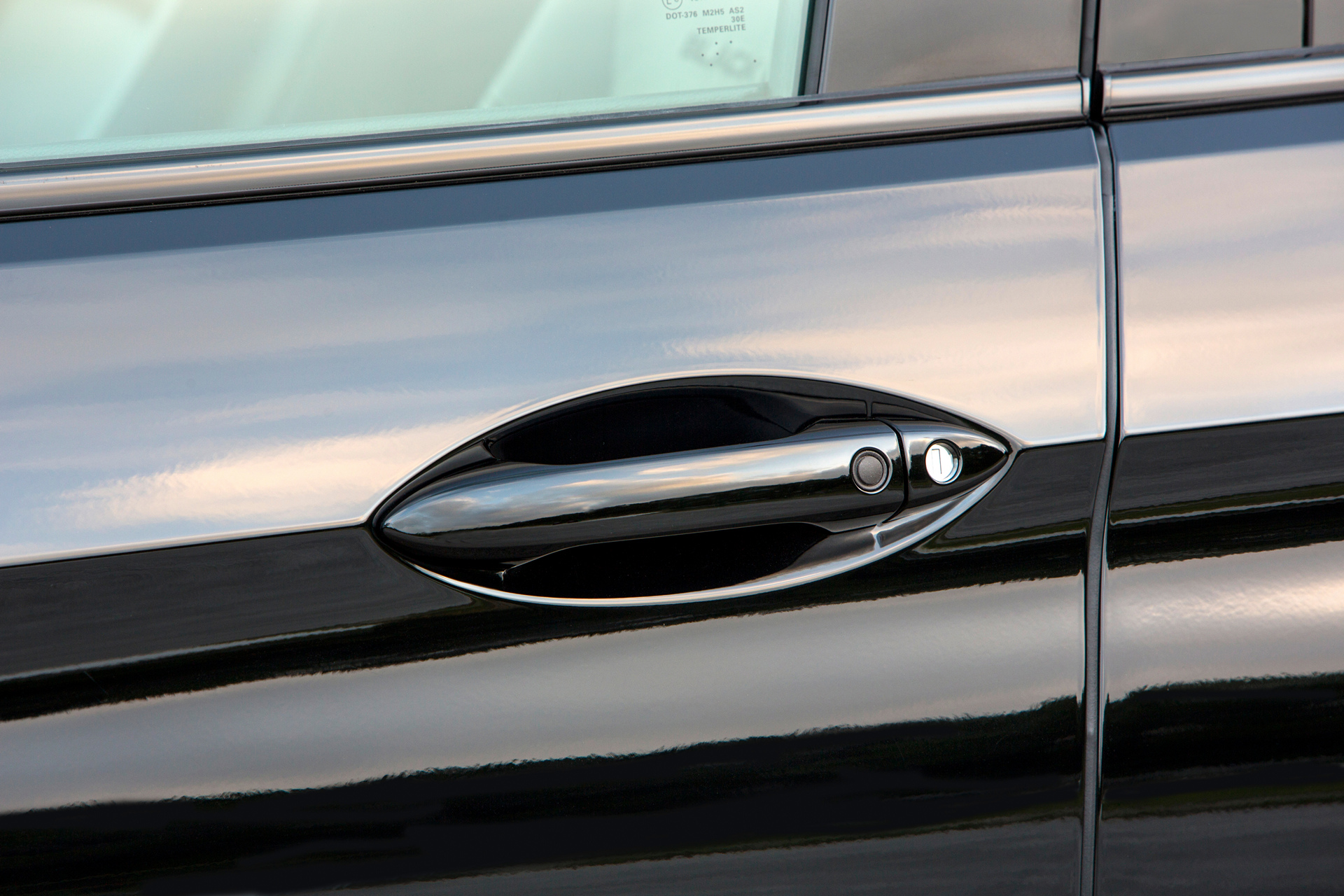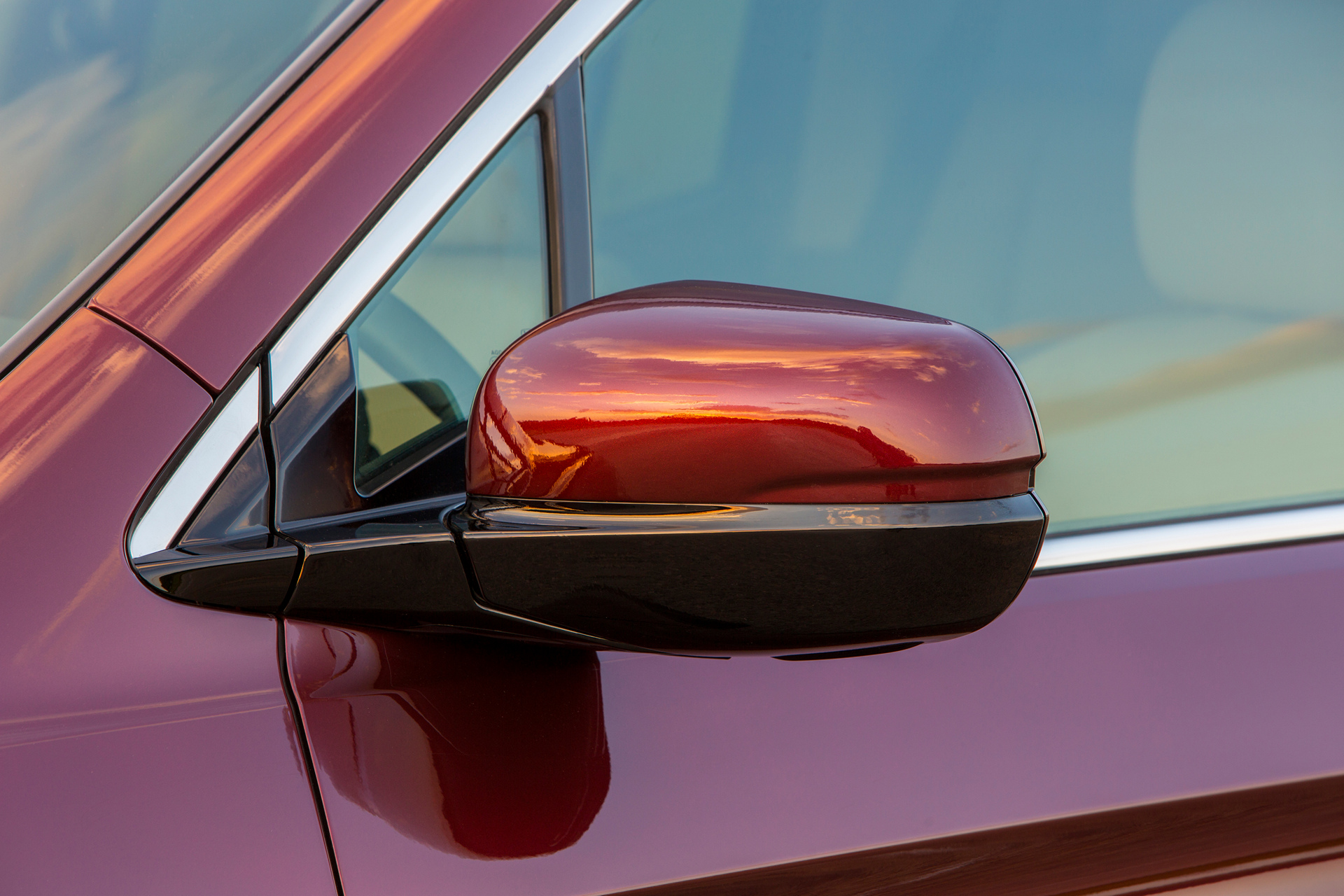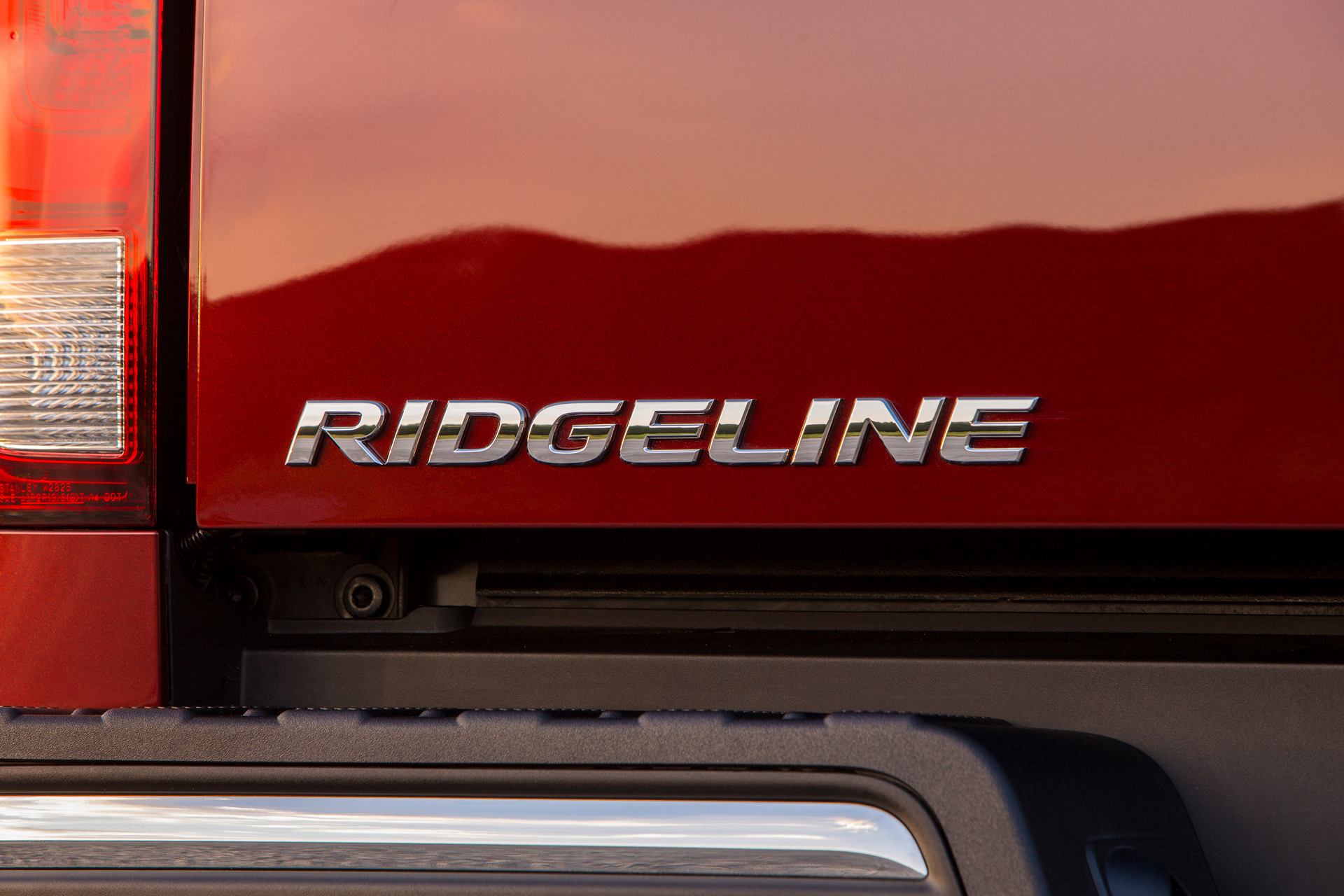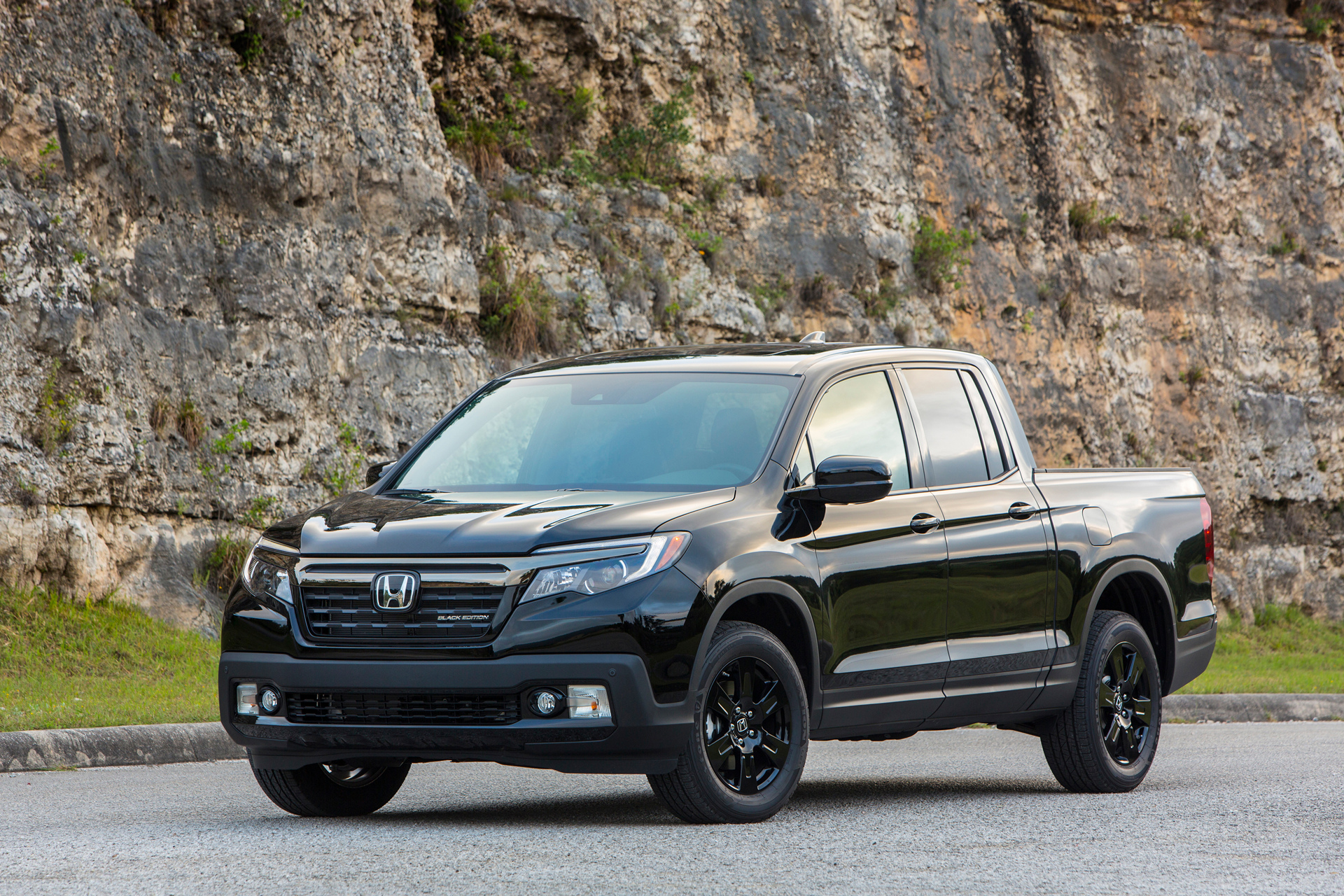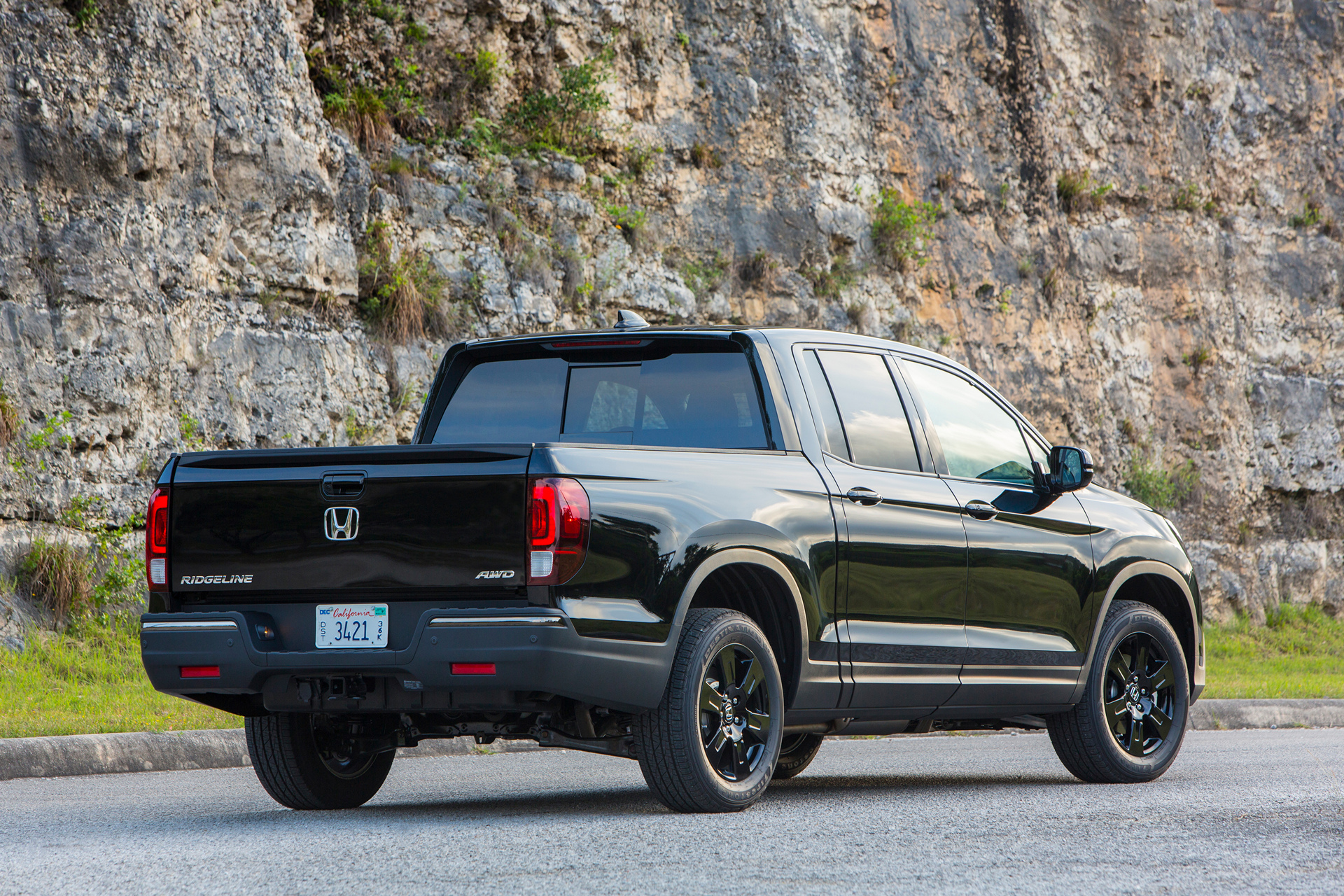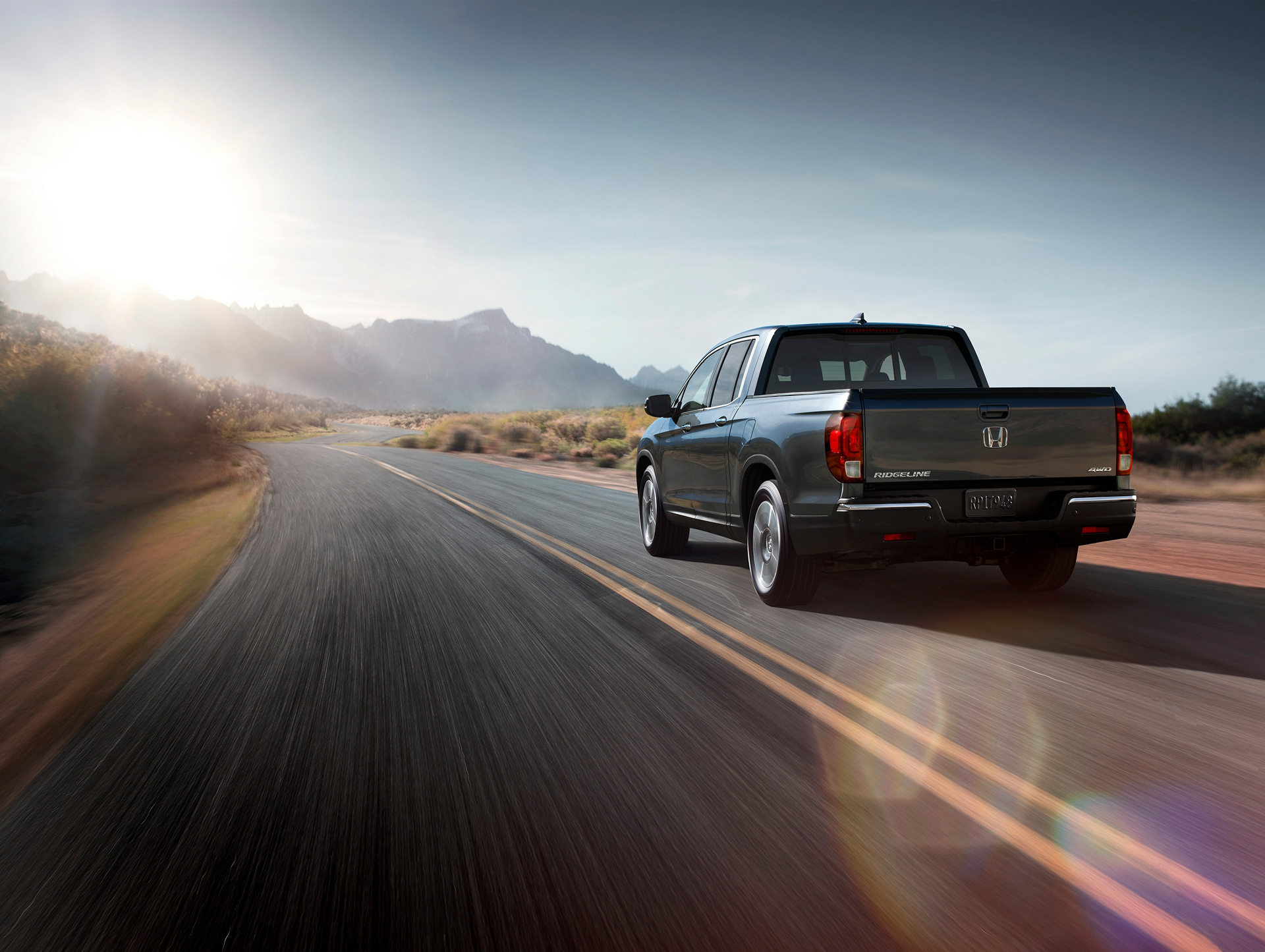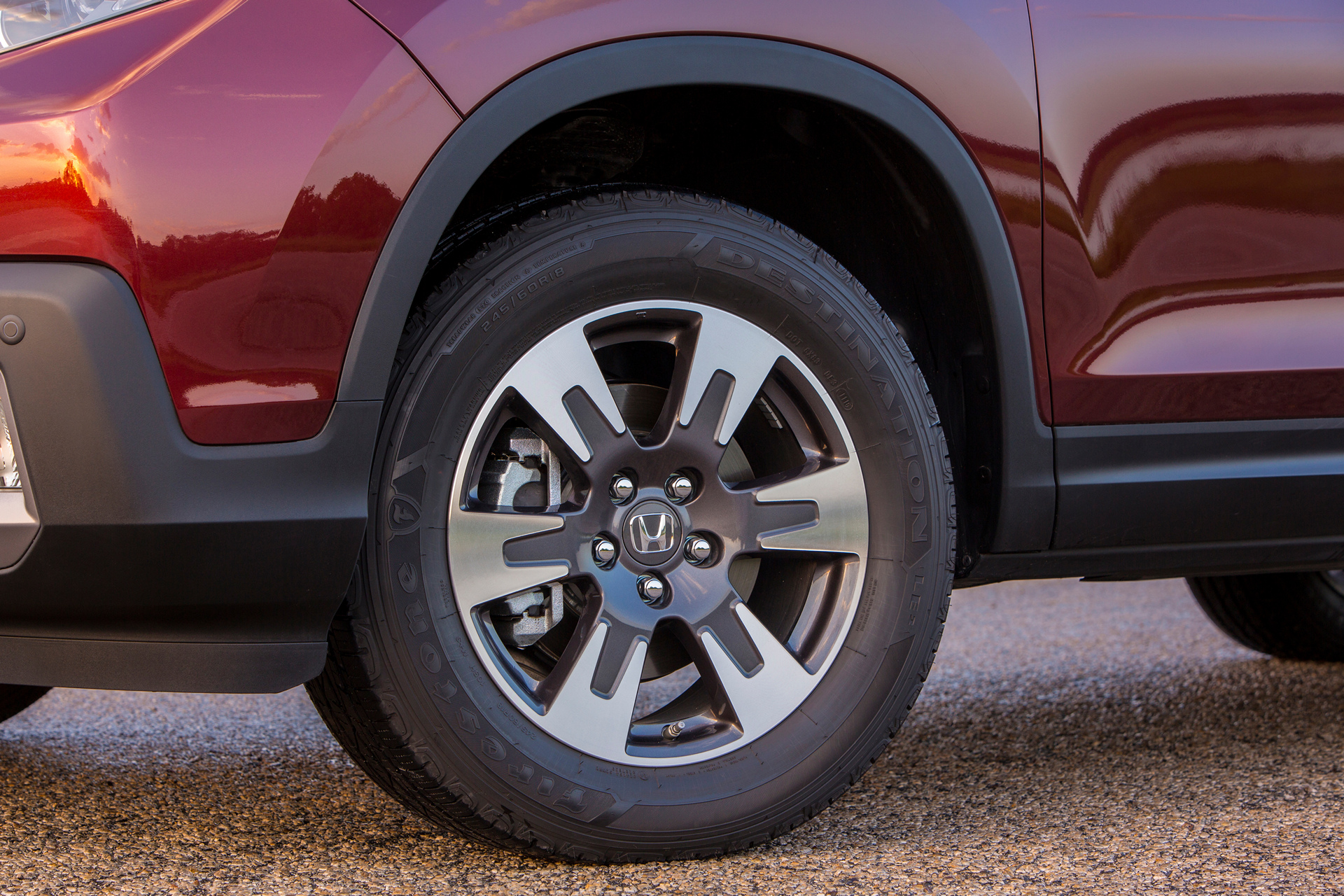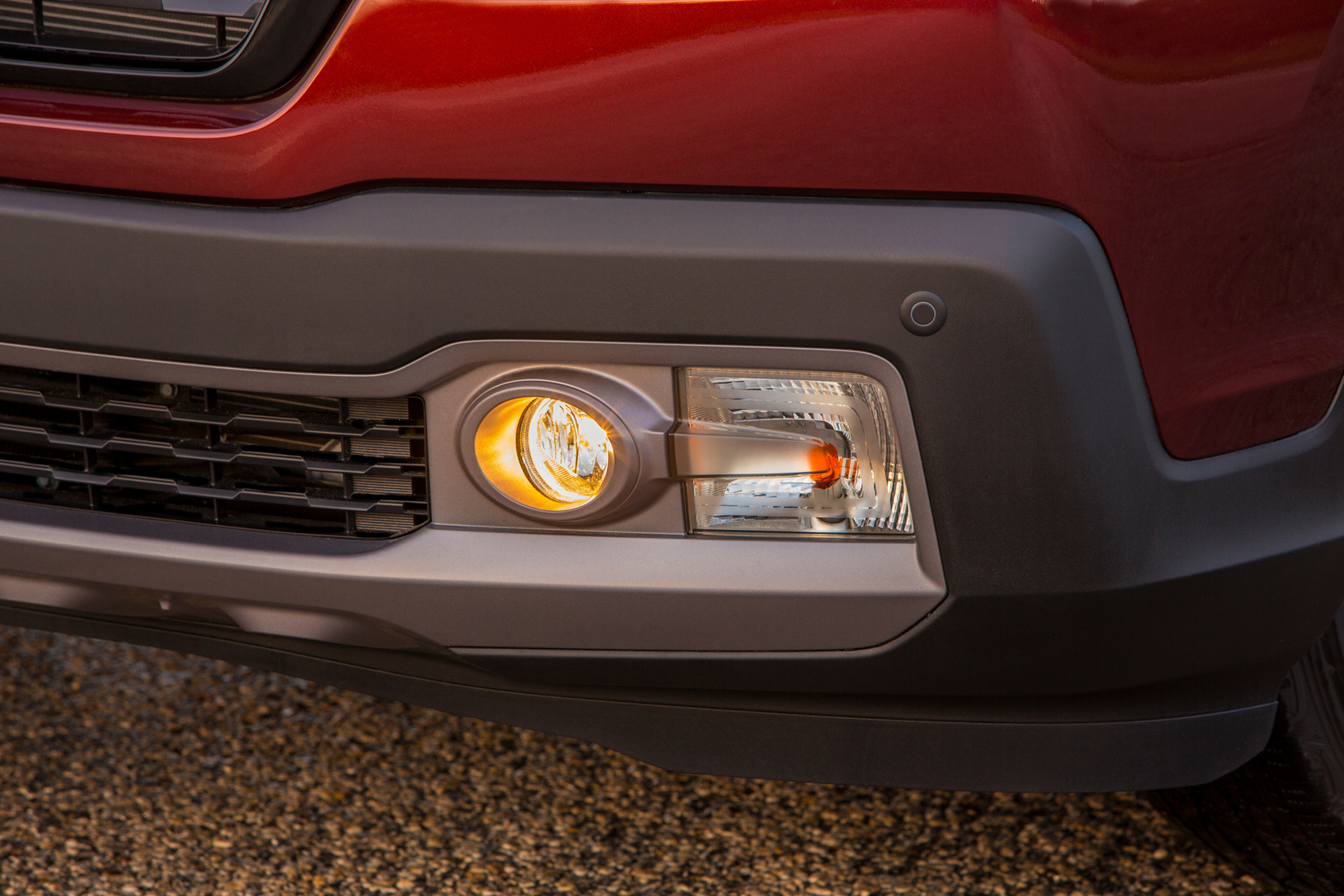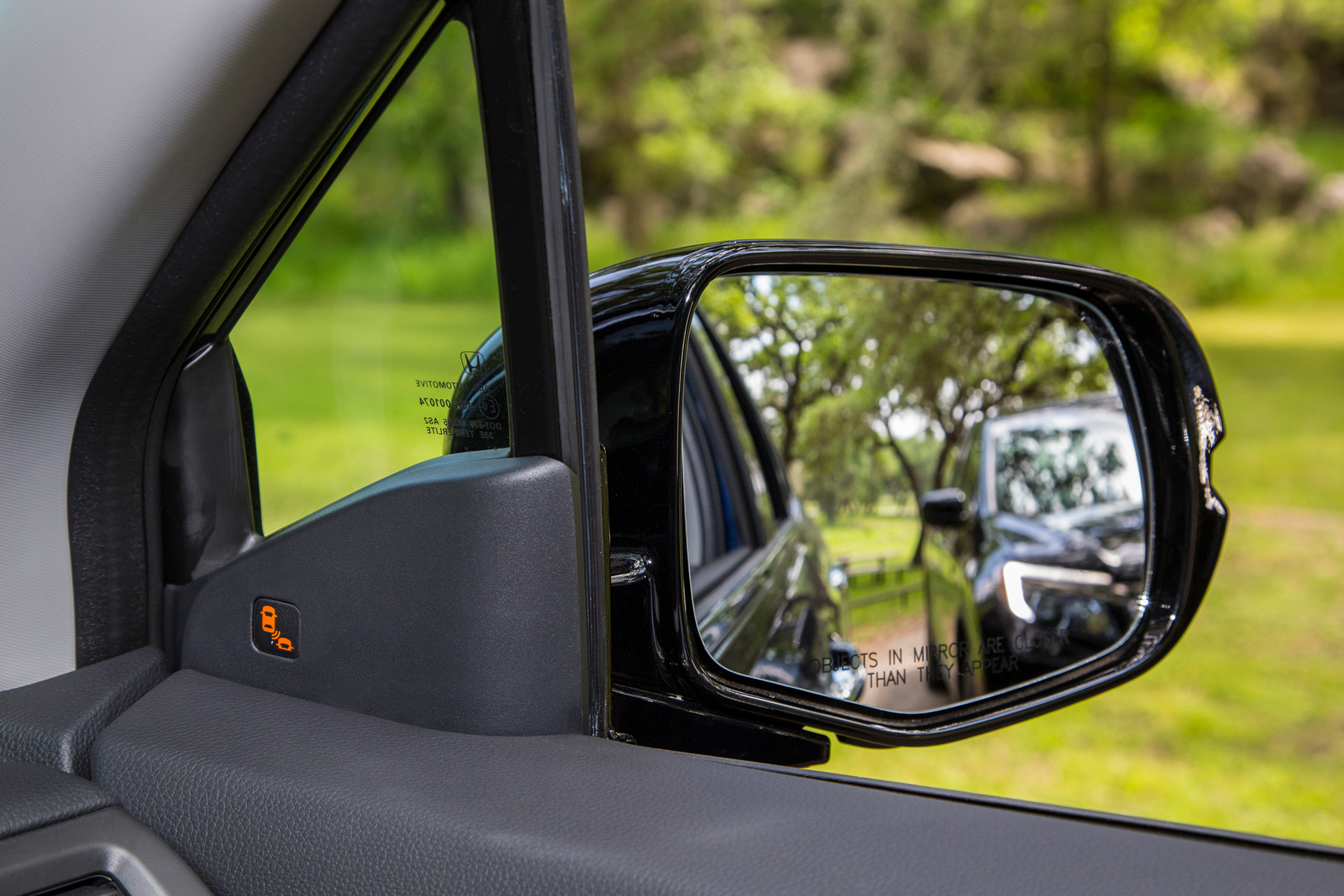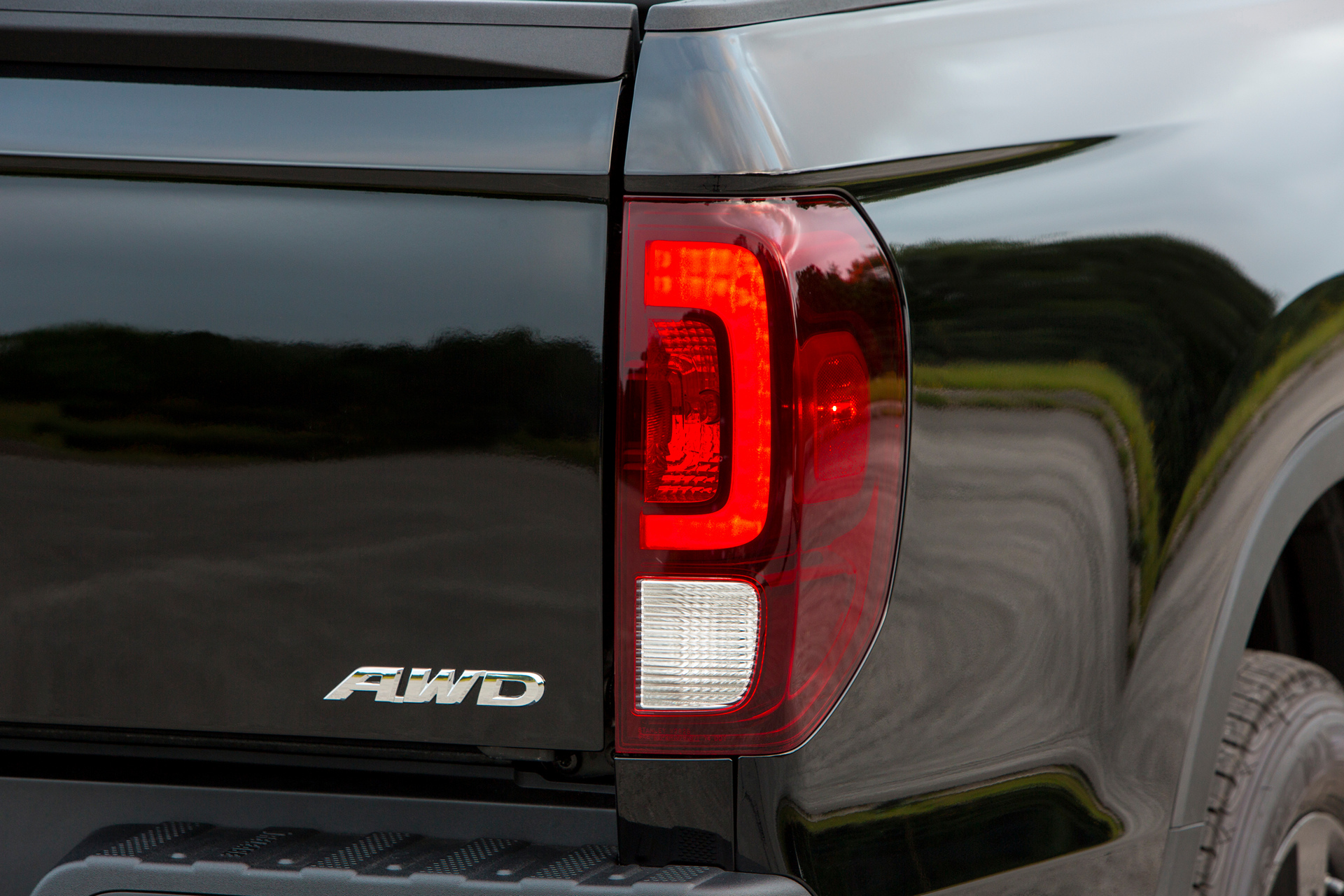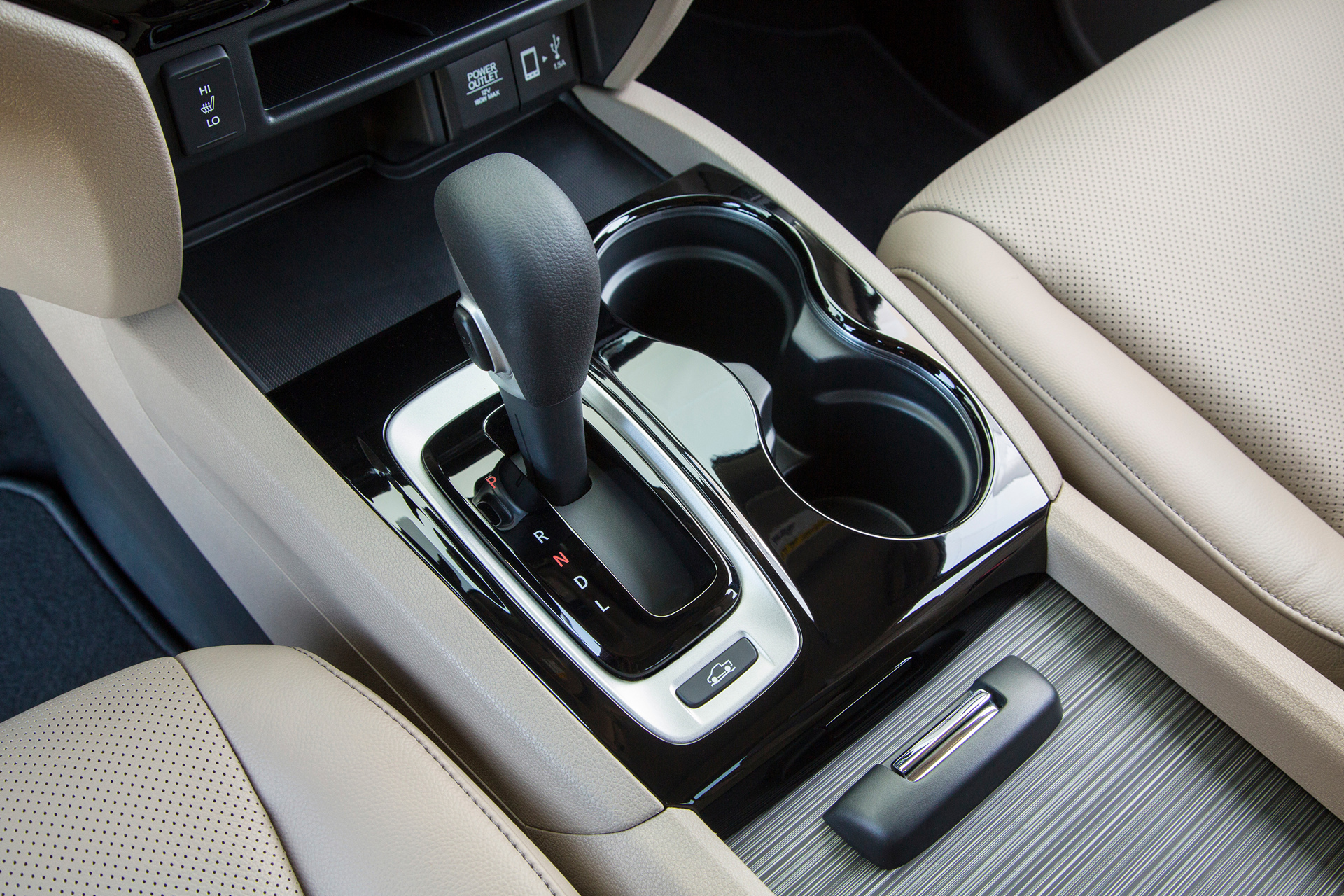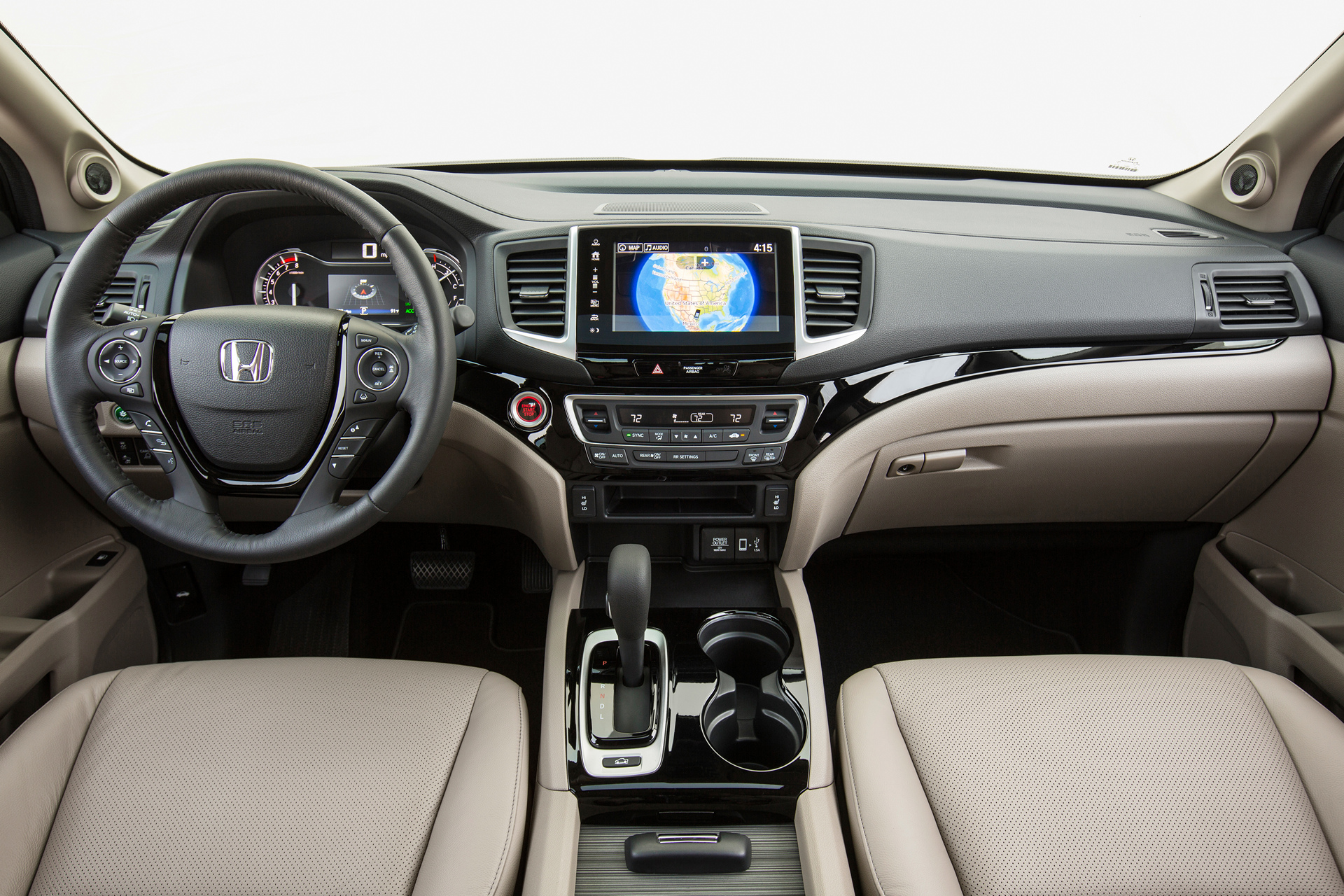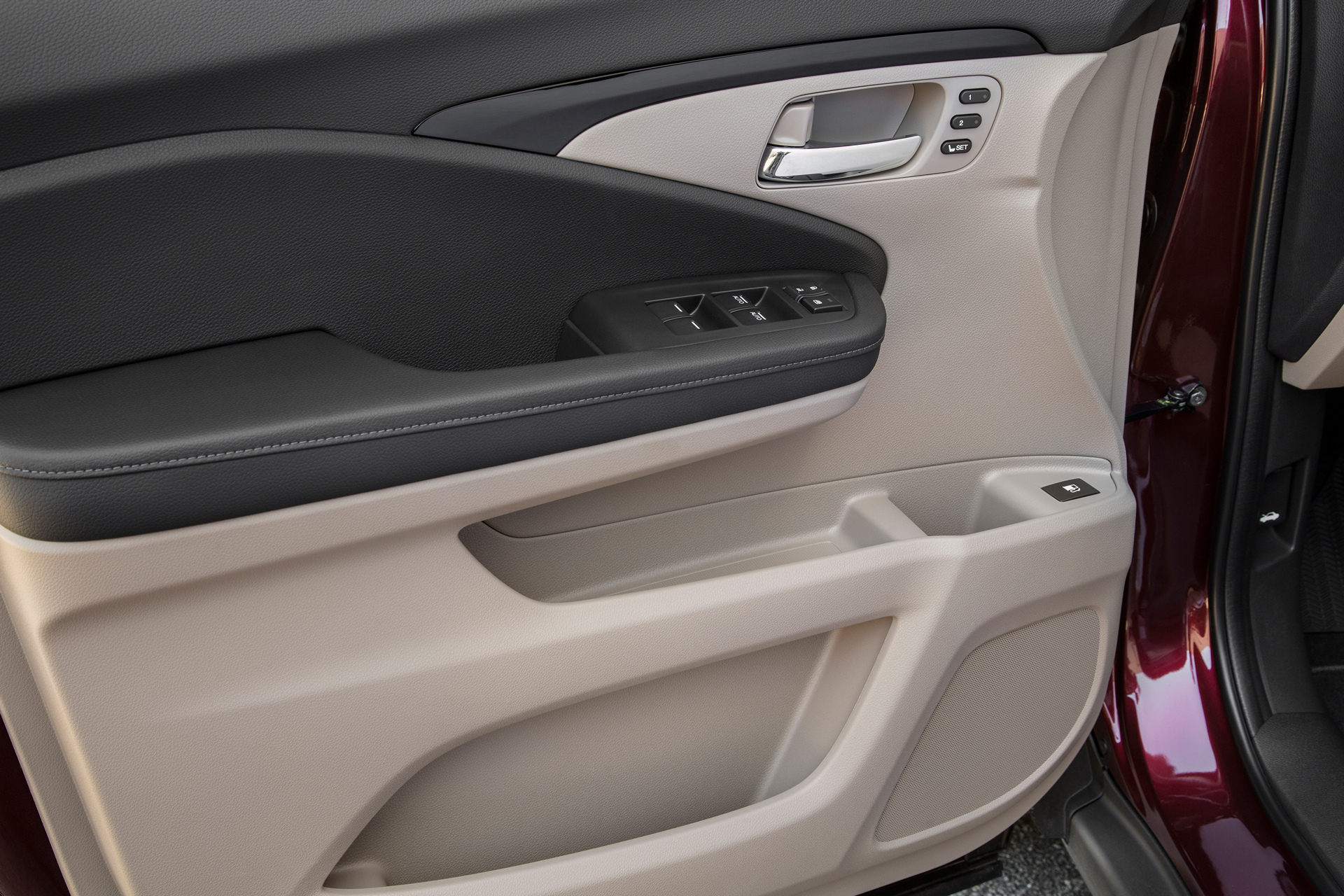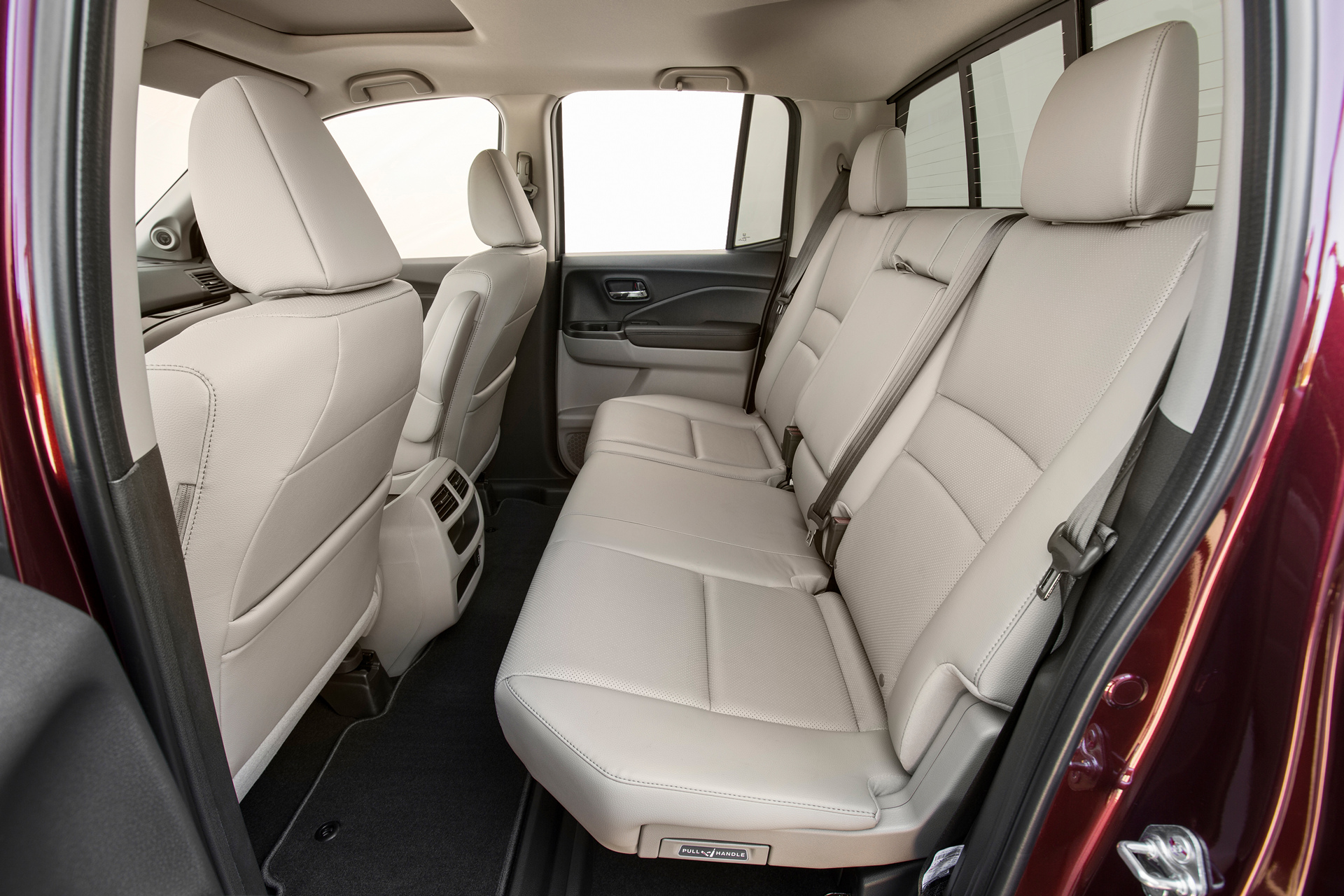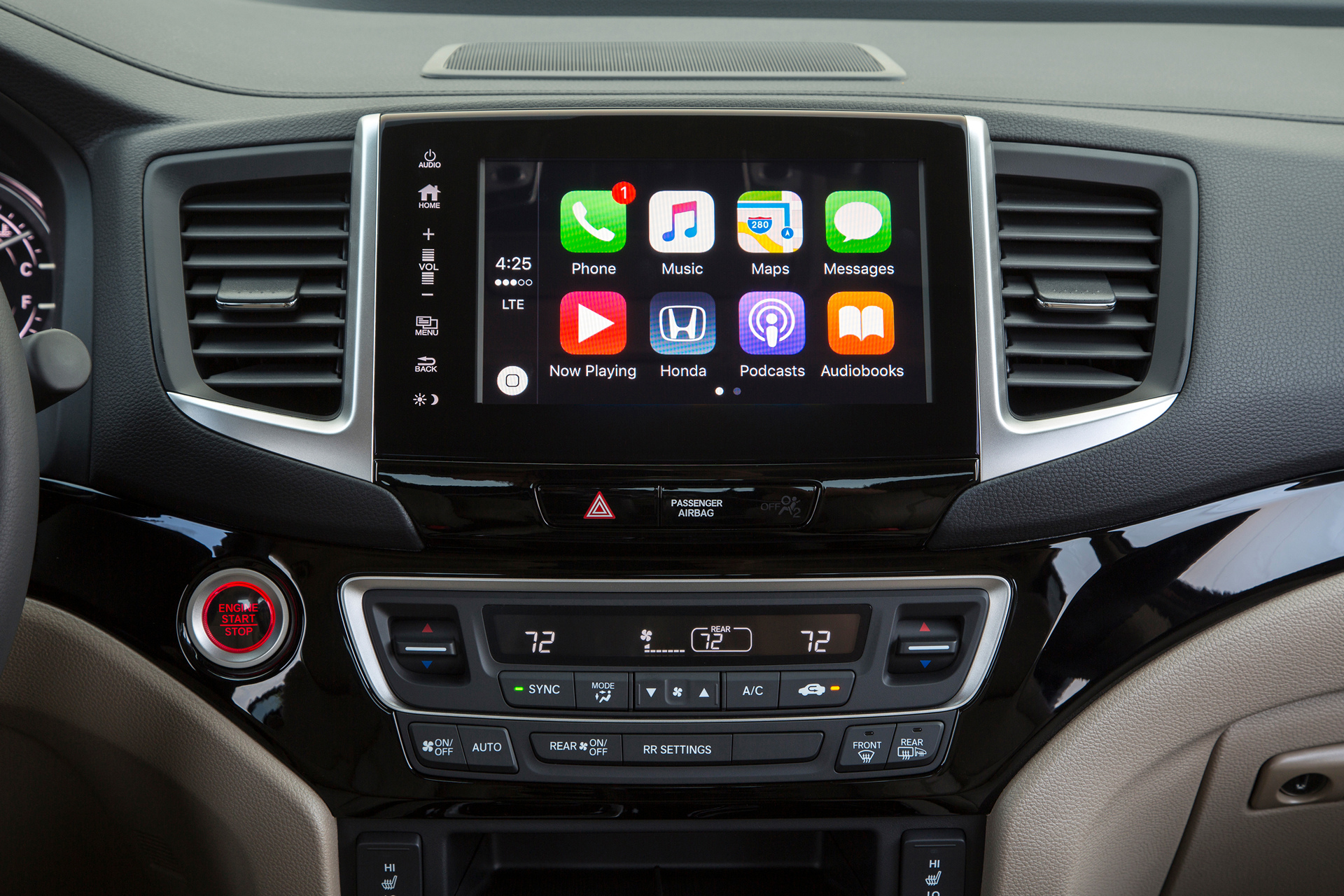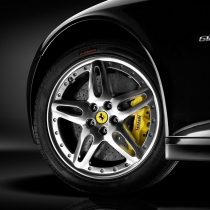The 2017 Honda Ridgeline is the second generation of Honda’s innovative midsize pickup truck, redesigned from the ground up to offer both recreational and work users a higher degree of utility and versatility in a modern, rugged and sophisticated midsize pickup with the largest and most flexible cabin in its class; a higher level of confident and refined dynamic performance; and robust cargo-hauling and towing capabilities, including a class-leading maximum 1,584 pound (718.5 kg) payload capacity (varies by trim) and up to 5,000-pound (2,268 kg) towing (RT AWD).
Based on Honda’s Global Light Truck platform – with its highly rigid, aerodynamic and tightly sealed unitized body construction, Advanced Compatibility Engineering™ (ACE™) safety body structure, and fully independent front and rear suspension systems with Amplitude Reactive Dampers – the 2017 Honda Ridgeline offers vastly superior ride comfort and handling precision compared to conventional body-on-frame truck offerings, along with the top-in-class cabin quietness and anticipated collision safety performance.
Combining this new platform with a more powerful and efficient direct-injected 3.5-liter i-VTEC™ V-6 engine, a 6-speed automatic transmission with wider ratio spread, and available new Intelligent Variable Torque Management™ (iVTM-4™) torque-vectoring all-wheel drive – the most advanced AWD technology in the midsize truck class – results in class-leading EPA fuel economy ratings along with superior all-weather traction and handling capability and robust medium-duty off-road performance.
The 2017 Ridgeline also offers customers more choices than ever before including, for the first time, both two-wheel-drive and all-wheel-drive options, as well as an expanded array of standard and available premium features and technologies, including a new 8-inch Display Audio touchscreen with Android Auto™ and Apple CarPlay® compatibility and new generation of Honda Satellite-Linked Navigation System™. A wide array of new standard and available equipment includes Tri-Zone Automatic Climate Control, Push-Button Start, Remote Engine Start, Smart Entry, a power sliding rear window, LED exterior and interior lighting and more.
The second-generation Ridgeline was designed, developed and is manufactured in America using domestic and globally sourced parts. Its exterior and interior design was conducted by Honda R&D Americas, Inc. in its Los Angeles design studio, while vehicle development was undertaken at the company’s Raymond, Ohio, new-model development center. Honda Manufacturing of Alabama, LLC, in Lincoln, Ala., is the exclusive manufacturing home for the 2017 Honda Ridgeline.
General Dimensions & Weights
| 2014 Ridgeline | 2017 Ridgeline |
|---|---|---|
Wheelbase - in. (mm) | 122.0 (3,099) | 125.2 (3,180) |
Length – in. (mm) | 206.9 (5,255) | 210 (5,335) |
Height: 2WD – in. (mm) | NA | 70.2 (1,783) |
Width – in. (mm) | 77.8 (1,976) | 78.6 (1,997) |
Track – 2WD: Front – in, (mm) | NA | 66.3 (1,684) |
Track – AWD: Front – in. (mm) | 67.1 (1,704) | 66.1 (1,678) |
Bed length – in. (mm) | 60.1 (1,527) | 64.0 (1,626) |
Curb weight: Base 2WD – lbs. (kg) | NA | 4,242 (1,924) |
Weight Dist. (%, front/rear; 2WD (AWD)) | NA (58/42) | 58.6/41.4 (57.6/42.4) |
Max Payload – lbs. (kg) (varies by trim level) | 1,546 (701.3) | 1,584 (718.5) |
Major New Features
| Feature | RT | RTS | Sport | RTL | RTL-T | RTL-E | Black Edition |
|---|---|---|---|---|---|---|---|
3.5-liter direct-injected | • | • | • | • | • | • | • |
6-speed automatic transmission | • | • | • | • | • | • | • |
Intelligent Variable Torque Management (i-VTM4) (AWD models) | • | • | • | • | • | • | • |
Intelligent Traction Management System | • | • | • | • | • | • | • |
Amplitude Reactive Dampers | • | • | • | • | • | • | • |
LED Daytime Running Lights |
|
|
|
| • | • | • |
Feature | RT | RTS | Sport | RTL | RTL-T | RTL-E | Black Edition |
LED projector headlights with Auto high-beam |
|
|
|
|
| • | • |
Acoustic windshield |
|
|
| • | • | • | • |
Fixed rear window with defroster | • | • | • | • | • |
|
|
Power sliding rear window with defroster |
|
|
|
|
| • | • |
Smart Entry |
| • | • | • | • | • | • |
Push-Button Start | • | • | • | • | • | • | • |
Remote Engine Start | Dealer Accessory | • | • | • | • | • | • |
Multi-Angle Rearview Camera | • | • | • | • | • | • | • |
Honda Sensing™ |
|
|
|
|
| • | • |
Honda LaneWatch |
|
|
|
| • |
|
|
Blind Spot Information System |
|
|
|
|
| • | • |
Rear Cross Traffic Monitor |
|
|
|
|
| • | • |
Truck Bed Audio System |
|
|
|
|
| • | • |
115V in-bed power outlet |
|
|
|
|
| • | • |
4.2-inch color LCD screen | • | • | • | • | • | • | • |
8-inch touchscreen Display Audio System with Android Auto and Apple Car Play compatibility |
|
|
|
| • | • | • |
HD Radio™ |
|
|
|
| • | • | • |
SiriusXM 2.0 |
|
|
|
| • | • | • |
EPA Fuel Economy Ratings
| EPA MPG Ratings |
|---|---|
2WD | 19 / 26 / 22 mpg |
AWD | 18 / 25 / 21 mpg |
Premium Style and Features
The all-new 2017 Ridgeline sports a sleek, sophisticated and rugged exterior design, incorporating new premium features including standard LED taillights, and available features such as LED projector headlights and LED daytime running lights.
The premium quality of the new Ridgeline carries over to the interior, where designers have applied high quality, soft-touch materials throughout the cabin and added thoughtful details such as LED map lighting (see the Interior section for more information on interior styling). Additional high-end amenities include a standard 4.2-inch color display, available heated front seats and a heated steering wheel. All models also come standard with a Class III towing hitch and AWD modes add a 7-pin wiring connector.
The Ridgeline’s 60/40-split and folding rear seat offers roomy seating for up to three passengers and, with the seat bottoms folded up, has the capacity to carry bulky items like a 55-inch flat screen television or a mountain bike with the wheel intact. Exclusive in its class, the Ridgeline’s large under-seat storage area can carry long items, such as golf clubs, with the rear seats folded down.
Innovative and Versatile Pickup Bed
The 2017 Ridgeline’s new UV-stabilized ultra-high strength glass fiber-reinforced SMC composite bed is longer (+3.9 inches, or 100 mm) and wider (+5.5 inches, or 140 mm) than in the previous model and is the only bed in the midsize class that can flat haul 4-foot-wide items, such as drywall or plywood panels on the floor between the wheel wells. Importantly, it does not require a bed liner like conventional steel beds. The new Ridgeline bed also boasts numerous Honda-exclusive features and capabilities, including a highly versatile Dual-Action Tailgate, a redesigned In-Bed Trunk™ with fully flat floor, and available world’s first Truck Bed Audio System, making this new Ridgeline the ultimate tailgating vehicle. An available 115V AC in-bed power outlet with up to 400-watt charging (with engine running) and eight standard 350-pound (159 kg) tie-down cleats complete the Ridgeline’s capable and versatile bed design.
Advanced Powertrain and All-Wheel-Drive Technology
The 2017 Honda Ridgeline is powered by a new 3.5-liter direct-injected SOHC i-VTEC™ V-6 engine with Variable Cylinder Management™ (VCM™), mated to a wide ratio 6-speed automatic transmission. Peak engine output of 280 horsepower (+30HP over the previous model) and 262 lb.-ft. of torque (+15 lb.-ft.), along with a 78-pound average reduction in curb weight and a more aerodynamically efficient exterior design, combine to deliver the quickest acceleration and help the Ridgeline receive the highest EPA fuel-economy ratings in the midsize pickup truck class. See the Powertrain section for more information.
For the first time, the 2017 Ridgeline is available in both two-wheel-drive and all-wheel-drive drivetrain layouts. All-wheel-drive models utilize Honda’s newest and most advanced AWD technology – Intelligent Variable Torque Management™ (i-VTM4). This entirely more capable system offers reduced weight, improved all-weather traction and enhanced dynamic handling capability. Honda i-VTM4 progressively distributes optimum torque between the front and rear axles and dynamically distributes engine torque between the left and right rear wheels, with the capacity to overdrive the outside rear wheel by 2.7 percent to create a yaw moment that improves cornering precision.
Intelligent Traction Management
This new Ridgeline features a button-operated Intelligent Traction Management System that offers different operating modes, for the AWD: Normal, Snow, Mud and Sand; and for the 2WD: Normal and Snow. Developed, tuned and tested at various locations in the U.S. and around the world – including Imperial Dunes “Glamis”, California; Moscow, Russia; and Dubai, United Arab Emirates – the Intelligent Traction Management system allows the driver to select the operating mode that best suits the driving conditions by simply pushing a button on the vehicle’s center console. Based on the setting selected, the system adjusts the drive-by-wire map, transmission shift map, Vehicle Stability Assist™ and i-VTM4 torque distribution for AWD-equipped models for optimal performance in a variety of road or surface conditions. See the Powertrain section for more information.
Advanced Technology
The new Ridgeline delivers the most advanced technology and connectivity that Honda has to offer, including an available 8-inch capacitive touchscreen Display Audio connectivity interface with both Apple CarPlay® and Android Auto™ compatibility for seamless integration of compatible smartphone features and functions, including smartphone-powered navigation capabilities.
The 2017 Ridgeline can also be equipped with a newly designed Honda Satellite-Linked Navigation System™ featuring improved graphics and new capabilities, including 3D renderings of terrain, buildings and road signs, improved lane guidance, live search function and more. Additional standard and available technologies include HD Radio, SiriusXM 2.0 and up to four USB ports including two with 2.5-amp charging capability.
Advanced Safety Performance
Utilizing Honda’s second-generation Advanced Compatibility Engineering™ (ACE™) body structure and “3-bone” front floor construction, along with advanced supplemental restraint systems and available Honda Sensing™ safety and driver-assistive technologies, the 2017 Ridgeline targets the highest available crash safety ratings from the National Highway Traffic Safety Administration (NHTSA) and the Insurance Institute for Highway Safety (IIHS) including an a 5-star Overall Vehicle Score in the NHTSA’s New Car Assessment Program (NCAP) and a TOP SAFETY PICK+ score from the IIHS, including a GOOD rating in the Institute’s rigorous small overlap frontal collision test.
Honda Sensing™ is the most comprehensive suite of advanced safety and driver assistive features available in the midsize pickup truck segment and includes Collision Mitigation Braking System™ (CMBS™), Lane Departure Warning (LDW), Forward Collision Warning (FCW), Lane Keeping Assist System (LKAS), Road Departure Mitigation (RDM) and Adaptive Cruise Control (ACC). The 2017 Ridgeline, depending on trim, can also be equipped with Honda LaneWatch™, Rear Cross Traffic Monitor and a blind spot information system; and all Ridgeline’s come equipped with a Multi-Angle Rearview Camera.
Standard safety features include four-channel anti-lock brakes (ABS) with Brake Assist and Hill Start Assist; Vehicle Stability Assist™ (VSA®) with Traction Control; Trailer Stability Assist; Agile Handling Assist; dual-stage, multiple-threshold front airbags, driver and front passenger side airbags and side-curtain airbags for all outboard seating positions; and a new Tire Pressure Monitoring System (TPMS) with real-time display of individual tire pressures.
Powertrain
The 2017 Ridgeline benefits from a completely reengineered powertrain and drivetrain that includes a new direct-injected i-VTEC V6 engine, a sophisticated 6-speed automatic transmission, and an available Intelligent Variable Torque Management (i-VTM4™) AWD system with Intelligent Traction Management system. Taken together, these new features and technologies give the new Ridgeline highly refined and responsive performance with top-in-class acceleration and fuel economy ratings, along with the improved all-weather traction and dynamic handling capabilities of available torque vectoring all-wheel-drive.
Powering the 2017 Ridgeline is a new 3.5-liter direct injected i-VTEC® 24-valve SOHC V-6 engine with Variable Cylinder Management™ (VCM™) cylinder deactivation technology. The new engine is mated to a new, smooth shifting 6-speed automatic (6AT) that offers a 20 percent wider gear ratio spread than the previous-generation Ridgeline 5-speed automatic for enhanced acceleration, pulling power and fuel efficiency. The Ridgeline’s new engine is rated at 280 peak horsepower and 262 lb.-ft. peak torque. Peak engine output is up 30 horsepower and 15 pound-feet of torque over the previous Ridgeline, with increased torque over the engine’s entire operating (rpm) range.
The new, more efficient engine and transmission, along with the lighter and yet more capable all-wheel-drive system, in combination with 73-pound (33 kg) reduction in vehicle weight and an 18 percent reduction in vehicle running resistance, results in substantially enhanced performance and fuel efficiency. The 2017 Ridgeline’s 0-60mph acceleration is quickened by 1.8 seconds compared to the previous Ridgeline, based on internal Honda tests. EPA fuel economy ratings (city/highway/combined) are up across the board:
- +4/5/5 mpg on FWD models (compared to previous AWD model)
- +3/4/4 mpg on AWD models
The Ridgeline’s dynamic handling capabilities and all-weather performance are significantly enhanced by the most advanced all-wheel-drive system in the Ridgeline’s competitive class—the available all-new Intelligent Variable Torque Management (i-VTM4™) all-wheel-drive system with an electronically controlled rear differential and dynamic torque vectoring capabilities that aids both all-weather traction and dynamic cornering and handling performance. Compared to the previous-generation Ridgeline AWD system, weight is reduced by 22 pounds (10 kg) and torque capacity is increased by 20 percent. To further enhance all-weather performance, both the front-wheel drive (FWD) and all-wheel drive (AWD) Ridgeline models include Intelligent Traction Management with push-button control, allowing the driver to choose between Normal, Snow, Mud and Sand modes with AWD, and Normal and Snow with FWD for optimal performance and traction in varying road and surface conditions.
Key Powertrain Features
Engine
- New 3.5-liter, SOHC V-6 engine
- 280 peak horsepower and 262 lb.-ft. peak torque
- i-VTEC® (intelligent Variable Valve Timing and Lift Electronic Control) for intake valves
- Variable Cylinder Management™ (VCM®) cylinder deactivation
- Computer-controlled Direct Injection (DI) with multi-hole fuel injectors
- 11.5:1 compression ratio
- High-tensile strength steel crankshaft
- Drive-by-Wire throttle system
- Detonation/knock control system
- Maintenance Minder™ system optimizes service intervals
- 100,000+/- miles tune-up interval
Emissions/Fuel Economy Ratings
- High-flow, close-coupled next-generation precious metal catalytic converters plus under floor catalytic converter
- High capacity 32-bit RISC processor emissions control unit
- LEVIII ULEV-125 Emissions compliant5
- Improved U.S. EPA fuel-economy ratings (city/highway/combined)
- 19/26/22 mpg (2WD)
- 18/25/21 mpg (AWD)
Transmission
- New 6-speed automatic
All-Wheel-Drive System
- New Intelligent Variable Torque Management (i-VTM4) AWD system with front-to-rear and left-to-right dynamic torque vectoring
- Capable of “overdriving” rear wheels to enhance handling
Engine Architecture and Features
Cylinder Block and Crank
With its 60-degree V-angle, the Ridgeline’s V-6 engine is inherently smooth and has compact overall dimensions that allow efficient packaging within the vehicle. The V-6 has a die-cast lightweight aluminum alloy block with cast-in-place iron cylinder liners. Made with a centrifugal spin-casting process, the thin-wall liners are high in strength and low in porosity. The block incorporates a deep-skirt design with four bolts per bearing cap for rigid crankshaft support and minimized noise and vibration. The 3.5-liter V-6 uses a high-tensile strength steel crankshaft for minimum weight.
A cooling control spacer positioned in the water jacket surrounding the cylinders helps control warm-up and operating cylinder liner temperatures to reduce friction. Plateau honing of the cylinder lining further reduces friction between the piston skirts and the cylinder walls by creating an ultra-smooth surface. This two-stage machining process uses two grinding processes instead of the more conventional single-stage honing process. Plateau honing also enhances the long-term wear characteristics of the engine.
Pistons/Connecting Rods
Designed with “cavity-shaped” crowns, the 2017 Ridgeline’s pistons help maintain stable combustion and contribute to stratified-charge combustion. Ion-plated piston rings help reduce friction for greater operating efficiency. Heavy-duty steel connecting rods are forged in one piece and then “crack separated” to create a lighter and stronger rod with an optimally fitted bearing cap.
Cylinder Head and Valvetrain
Like other Honda V-6 powerplants, the Ridgeline engine’s 12-valve cylinder heads (4 valves per cylinder) are a single-overhead-camshaft design, with the cams driven by the crankshaft via an automatically tensioned toothed belt. Made of low-pressure cast, low-porosity aluminum, each cylinder head incorporates a “tumble port” design that improves combustion efficiency by creating a more homogeneous fuel-air mixture. An integrated exhaust manifold cast into each cylinder head reduces parts count, saves weight, improves flow and optimizes the location of the close-coupled catalyst on each cylinder bank.
i-VTEC with 2-Stage Variable Cylinder Management™ (VCM®)
The 2017 Ridgeline’s V-6 engine combines Variable Cylinder Management (VCM) with Variable Valve Timing and Lift Electronic Control (i-VTEC), which changes the lift profile, timing and lift duration of the intake valves. A switching mechanism allows each cylinder to operate with low-rpm valve lift and duration or high-rpm lift and duration. While operating in 3-cylinder mode, the rear cylinder bank’s valve gear closes all intake and exhaust valves to minimize pumping losses.
The “intelligent” portion of the system is its ability to vary valve operation based on the driving situation and engine rpm. At low rpm, the i-VTEC intake valve timing and lift are optimized (low lift, short duration) for increased torque, which allows a wide range of 3-cylinder operation. As engine rpm builds past 5,350 rpm, the i-VTEC system transitions to a high-lift, long-duration intake cam profile for superior high-rpm engine power.
VCM Operation
To help improve the fuel efficiency of the Ridgeline engine, a new variation of Honda’s Variable Cylinder Management (VCM) is used. The i-VTEC system combines with Active Control engine Mounts (ACM) to allow the VCM system to operate with just three cylinders in a wide range of situations to maximize fuel efficiency and lower emissions. When greater power is needed, the system switches seamlessly to 6-cylinder operation.
During startup, aggressive acceleration, or steep ascents – any time high power output is required – the engine operates on all six cylinders. During moderate-speed cruising and at low or moderate engine loads, the system operates just the front bank of three cylinders while the rear bank is idle.
The VCM system can tailor the working displacement of the engine to match the driving requirements from moment to moment. Since the system automatically closes both the intake and exhaust valves of the cylinders that are not used, pumping losses associated with intake and exhaust are eliminated and fuel efficiency gets a further boost. The system combines maximum performance and maximum fuel efficiency—two characteristics that don’t typically coexist in conventional engines.
VCM deactivates the rear bank of cylinders by using the i-VTEC (intelligent Variable Valve-Timing and Lift Electronic Control) system to close the intake and exhaust valves while the Electronic Control Unit (ECU) simultaneously cuts fuel to those cylinders. The spark plugs continue to fire in inactive cylinders to minimize plug temperature loss.
The system is electronically controlled, and uses special integrated spool valves in the cylinder heads. Based on commands from the system’s Electronic Control Unit, the spool valves selectively direct oil pressure to the rocker arms for specific cylinders. This oil pressure in turn drives synchronizing pistons that connect and disconnect the rocker arms.
The VCM system monitors throttle position, vehicle speed, engine speed, automatic-transmission gear selection and other factors to determine the correct cylinder activation scheme for the operating conditions. In addition, the system determines whether engine oil pressure is suitable for VCM switching and whether catalytic converter temperature will remain in the proper range. To further smooth the activating or deactivating cylinders, the system adjusts ignition timing and throttle position and turns the torque converter lock-up on and off. As a result, the transition between three and six cylinder modes is effectively unnoticeable to the driver.
Drive-by-Wire Throttle System
The Ridgeline’s Drive-by-Wire throttle system replaces a conventional throttle cable with smart electronics that “connect” the accelerator pedal to a throttle valve inside the throttle-body. The result is less under-hood clutter and lower weight, as well as quicker and more accurate throttle actuation. Plus, a specially programmed “gain” rate between the throttle pedal and engine offers improved drivability and optimized engine response to suit specific driving conditions.
Honda’s Drive-by-Wire throttle system establishes the current driving conditions by monitoring throttle pedal position, throttle valve position, engine speed (rpm) and road speed. This information is used to define the throttle control sensitivity that gives the Ridgeline’s throttle pedal a predictable and responsive feel.
Direct Injection System
The direct-injection system enables increased torque across the engine’s full operating range along with higher fuel efficiency. The system features a compact, high-pressure, direct-injection pump that allows both high fuel flow and pulsation suppression, while variable pressure control optimizes injector operation. A multi-hole injector delivers fuel directly into each cylinder (not to the intake port, as in conventional port fuel injection designs), allowing for more efficient combustion.
The multi-hole injectors can create the ideal stoichiometric fuel/air mixture in the cylinders for good emissions control. Theoretically, a stoichiometric mixture has just enough air to completely burn the available fuel. Based on the operating conditions, the direct-injection system alters its function for best performance. Upon cold engine startup, fuel is injected into the cylinders on the compression stroke. This creates a weak stratified charge effect that improves engine start-up and reduces exhaust emissions before a normal operating temperature is reached.
Once the engine is fully warmed up, for maximum power and fuel efficiency fuel is injected during the intake stroke. This helps create a more homogeneous fuel/air mix in the cylinder that is aided by the high-tumble intake port design. This improves volumetric efficiency, and the cooling effect of the incoming fuel improves anti-knock performance.
High Capacity Radiator with Dual High-Power Fans
All Ridgeline models have a high capacity radiator with dual high-power fans to assure adequate engine cooling across a broad spectrum of operating conditions. Honda engineers tested the Ridgeline in some of the toughest towing conditions found in America, included hauling a large boat up a steep 14-degree launch ramp for over half a mile in temperatures over 100º Fahrenheit, and climbing mountain grades pulling the maximum trailer weight (5,000 pounds, or 2,268 kg, AWD), maximum interior cargo (100 pounds, 45.4 kg) and two passengers. (For more information on towing, see the Chassis section.)
Detonation Knock Control
The Ridgeline’s Electronic Control Unit (ECU) monitors engine functions to determine the best ignition spark timing. Two engine block-mounted acoustic detonation/knock sensors “listen” to the engine, and based on this input, the ECU can retard the ignition timing to prevent potentially damaging detonation. The 3.5-liter V-6 has an ignition coil unit for each cylinder that is positioned within each spark plug’s access bore.
Close-Coupled Catalysts and High-Flow Exhaust System
The exhaust manifolds of the 3.5-liter V-6 are cast directly into the aluminum cylinder heads to reduce weight, decrease parts count, and create more under-hood space. The result of this casting design is that the two primary catalytic converters are positioned much closer to the combustion chambers, enabling extremely rapid converter “light-off” after engine start. A significant weight savings is realized by eliminating traditional exhaust manifolds. Downstream of the close-coupled catalytic converters, a hydroformed 2-into-1 collector pipe carries exhaust gases to a secondary, underfloor catalytic converter.
Emissions Control
The 2017 Ridgeline 3.5-liter V-6 engine meets the tough EPA Tier 3/Bin 125 and CARB LEVIII ULEV-125 emissions standards, and is certified, as applicable, to this level of emissions performance for 150,000 miles. A number of advanced technologies are factors in the emissions performance. The unique cylinder head-mounted close-coupled catalytic converters light off more quickly after engine start up, and a 32-bit RISC microprocessor within the Electronic Control Unit (ECU) boosts computing power to improve the precision of spark and fuel delivery.
The engine features direct fuel injection that continually adjusts the fuel delivery to yield the best combination of power, low fuel consumption and low emissions. Multiple sensors constantly monitor critical engine operating parameters such as intake air temperature, ambient air pressure, throttle position, intake airflow volume, intake manifold pressure, coolant temperature, fuel-to-air ratios, as well as the position of the crankshaft and the camshafts.
To further improve emissions compliance, the 3.5-liter V-6 makes use of an after-catalytic-converter exhaust gas recirculation (EGR) system that allows cleaner, cooler EGR gas to be fed back into the intake system. An EGR system, especially one that delivers a cleaner, cooler charge, reduces pumping loss for better fuel efficiency.
Noise and Vibration Control
With its 60-degree V-angle and compact, rigid and lightweight die-cast aluminum cylinder block assembly, the 3.5-liter V-6 powerplant is exceptionally smooth during operation. Other factors that help reduce engine noise and vibration are a rigid forged-steel crankshaft, die-cast accessory mounts, and a stiff cast-aluminum oil pan that reduces cylinder block flex.
Active Control Engine Mounts
A powerful 28-volt Active Control Engine Mount system (ACM) is used to minimize the effects of engine vibration when operating in three-cylinder mode. The 28-volt ACM is a key factor in the VCM’s broad range of operation in the new Ridgeline. Sensors alert the Electronic Control Unit (ECU) to direct ACM actuators positioned at the front and rear of the engine to cancel engine vibration using a reverse-phase motion. See the Interior section for more information.
100,000+/- Mile Tune-up Intervals
The Ridgeline’s 3.5-liter V-6 requires no scheduled maintenance for 100,000+/- miles or more, other than periodic inspections and normal fluid and filter replacements. The first tune-up includes water pump inspection, valve adjustment, replacement of the camshaft timing belt, and the installation of new spark plugs.
Battery Management System
The Battery Management System (BMS) is designed to increase the overall service life of the battery, reduce the chance of a dead battery and help improve fuel efficiency. Should the owner accidentally leave the headlights on or fail to fully close a door causing an interior light to remain on, the BMS will automatically terminate power delivery after a set period of time to prevent the battery from being drained of power. As a result of the discharge protection afforded by the BMS, the battery should always have enough reserve capacity left to start the engine.
The Ridgeline engine makes use of a powerful 150-amp alternator that uses linear control – from 12-14 volts. By controlling the alternator charge voltage range, BMS works to keep the battery in a specific charge range, which can extend the service life of the battery by more than 25 percent. With BMS keeping the battery in a specific charge range, the alternator can run more often at a lower voltage, which generates less drag on the engine resulting in improved fuel efficiency. Application of numerous electrical power reducing items (such as the use of efficient LED lighting and a special humidity control system that has an automatic air conditioning “off” function) allows the BMS to operate the alternator even more frequently in the more efficient low charge mode
Maintenance Minder™ System
To eliminate unnecessary service stops while ensuring that the vehicle is properly maintained, the Ridgeline has a Maintenance Minder™ system that continually monitors the vehicle’s operating condition. When maintenance is required, the driver is alerted via a message on the Multi-Information Display (MID).
The Maintenance Minder™ system monitors operating conditions such as oil and coolant temperature along with engine speed to determine the proper service intervals. Depending on operating conditions, oil change intervals can be extended to a maximum of 10,000 miles, potentially sparing the owner considerable expense and inconvenience over the life of the vehicle. The owner-resettable system monitors all normal service parts and systems, including oil and filter, tire rotation, air-cleaner, automatic transmission fluid, spark plugs, timing belt, coolant, brake pads and more. To reduce the potential for driver distraction, maintenance alerts are presented on the MID only when the ignition is first turned on, not while driving.
Drivetrain Architecture and Features
6-Speed Automatic Transmission
All Ridgeline models feature a standard 6-speed automatic transmission that contributes to improved acceleration and fuel efficiency, and features reduced friction and improved lockup clutch performance. The 6-speed automatic offers excellent launch-feel, acceleration performance and fuel efficiency with an 20 percent wider gear ratio spread featuring a “lower” (numerically higher) first gear overall ratio, and a “higher” (numerically lower) top gear overall ratio than the 5-speed transmission it replaces in the last generation Ridgeline. To support the Ridgeline AWD’s 5000 pound tow rating, a heavy duty transmission cooler is standard in all AWD models. The 6-speed transmission’s straight-gate shifter is an intuitive and easy-to-use design that takes up little space in the center console.
Transmission Gear Ratio Comparison
| Gear | 2014 Ridgeline 5 AT | 2017 Ridgeline 6 AT |
|---|---|---|
1st | 2.697 | 3.359 |
2nd | 1.606 | 2.095 |
3rd | 1.071 | 1.485 |
4th | 0.766 | 1.065 |
5th | 0.538 | 0.754 |
6th | — | 0.556 |
Reverse | 1.888 | 2.269 |
Final Reduction Ratio | 4.533 | 4.250 |
2-Wheel Drive
The Ridgeline offers standard 2-wheel drive. With its efficient and lightweight design, the Ridgeline system drives the front wheels to make a significant contribution to overall fuel efficiency. Operation in Snow Mode, using the Intelligent Traction Management System, adjusts the drive-by wire map, transmission shift map and Vehicle Stability Assist™ for the best performance.
Intelligent Variable Torque Management (i-VTM4™) AWD System
The Ridgeline’s available Intelligent Variable Torque Management (i-VTM4) all-wheel-drive system includes an all-new electronically controlled, hydraulically actuated rear differential. This entirely more capable system progressively distributes optimum torque between the front and rear axles and, for the first time ever in a Honda vehicle, dynamically distributes engine torque between the left and right rear wheels. The benefits of the system are superior all-weather handling and neutral, accurate steering under power that is unmatched by front-drive, rear-drive or conventional all-wheel-drive systems.
By rotating the outside rear wheel faster than the front wheels while cornering, Ridgeline’s AWD system uses torque vectoring to create a yaw moment to help turn the vehicle through the corner—reducing understeer and improving controllability. With cornering forces more evenly distributed between front and rear tires, overall cornering power is increased in all road conditions.
Vehicles with high power ratings using conventional front or rear drive systems often employ a limited-slip differential to help maintain traction when under power. By linking inside and outside drive wheels, these systems tend to resist turning. Conventional AWD and 4WD systems similarly work to link the inboard and outboard wheels as well as the front and rear wheels, which can create additional resistance to turning. Using dynamic, hydraulically actuated left-to-right rear wheel torque vectoring to help turn the vehicle, the Ridgeline’s AWD system delivers more responsive, neutral and predictable handling performance while providing outstanding all-weather traction and control.
Controls and Parameters
The i-VTM4 system works in cooperation with the Ridgeline’s Vehicle Stability Assist™ (VSA®) system and Agile Handling Assist to optimize torque distribution for superior handling and traction utilization. The Electronic Control Unit (ECU) provides information on engine torque, airflow and transmission gear-ratio selection, while the VSA ECU provides wheel-speed data. The AWD ECU also monitors steering angle, steering angle rate of change, lateral G-forces, vehicle yaw rate and hydraulic clutch pressure for the right and left rear axle shafts. Drive torque is calculated from ECU information, and then the acceleration situation, wheel spin, lateral G-force, steering angle and steering angle rate-of-change are used to determine the front-to-rear torque distribution and the torque split between right and left rear wheels.
System Layout
The Ridgeline AWD system is a fulltime system that requires no driver interaction or monitoring, thanks to a torque-transfer unit that is bolted directly to the front-mounted transaxle. The torque-transfer unit receives torque from a helical gear that is attached to the front differential’s ring gear, and a short horizontal shaft and hypoid gear set within the torque-transfer unit’s case send power to the rear propeller shaft, which in turn transfers power to the rear drive unit that has a 20-percent greater torque capacity.
The Ridgeline’s new, lightweight rear drive unit is 22 lbs. (10 kg) lighter than the previous generation Ridgeline unit and is constantly overdriven by 2.7 percent. The resulting overdrive effect is regulated by left- and right-side clutch packs (located in the rear differential) that independently control the power delivered to each rear wheel. The significant overdrive percentage in the new Ridgeline means that the torque vectoring effect is pronounced and effective even in corners with a radius of as little as 49.2 feet (15 meters). This means that torque vectoring can be felt when accelerating aggressively through a typical corner.
Hydraulically operated clutch systems mounted on either side of the hypoid gear that drives the rear axles control the amount of torque sent to each rear wheel and provide a limited-slip differential function when needed. The clutches can be controlled as a pair to alter front/rear torque split or they can be controlled independently to allow 100 percent of available rear axle torque to go to just one rear wheel. A single electric motor powers a pair of hydraulic pumps—one for each clutch pack. An Electronic Control Unit (ECU) controlled linear solenoid valve selectively sends pressure to the clutch packs, which in turn control the amount of power sent to each rear wheel. The clutch packs and their friction material are carefully designed to withstand the small amount of continuous slip between front and rear axles created by the 2.7-percent speed differential—all while delivering the durability expected of a Honda product.
Intelligent Traction Management System
The 2017 Ridgeline features a new push-button-operated Intelligent Traction Management System that offers four different AWD operating modes: Normal, Snow, Mud and Sand; and two 2WD modes: Normal and Snow.
Developed, tuned and tested at various locations in the U.S. and around the world—including Imperial Sand Dunes (“Glamis”) in California; Moscow, Russia; and Dubai, United Arab Emirates—the Intelligent Traction Management system allows the driver to select the operating mode that best suits the driving conditions by simply pushing a button on the vehicle’s center console. System information and an animated selected mode icon are shown on the color Multi-Information Display. Based on the setting selected, the system adjusts the drive-by-wire map, transmission shift map, i-VTM4 power distribution and Vehicle Stability Assist™ for optimal performance in varying road or surface conditions.
Powertrain Key Features & Specifications Comparison
| Feature | 2014 Ridgeline | 2017 Ridgeline |
|---|---|---|
Engine Type | V-6 | V-6 |
Displacement (cc) | 3,471 | 3,471 |
Horsepower @ rpm (SAE net) | 250 @ 5,700 | 280 @ 6,000 |
Torque (lb-ft @ rpm SAE net) | 247 @ 4,300 | 262 @ 4,700 |
Bore and Stroke (mm) | 89 x 93 | 89 x 93 |
Compression Ratio | 10.0:1 | 11.5:1 |
Valvetrain | 24-Valve SOHC VTEC® | 24-Valve SOHC i-VTEC® |
Fuel Delivery | Port Injection | Direct Injection |
Drive-by-Wire Throttle System | • | • |
Variable Cylinder Management |
| • |
Variable Intake Valve Lift (VTEC) | • | • |
Transmission | 5-Speed Automatic | 6-Speed Automatic |
2-Wheel Drive | NA | • |
Available AWD | • | • |
Powertrain Features
| Feature | 2017 Ridgeline (All Trims) |
|---|---|
Engine Type | V6 |
Engine Block/Cylinder Head | Aluminum-Alloy |
Displacement (cc) | 3,471 |
Horsepower (SAE net) | 280 @ 6,000 rpm |
Torque (SAE net) | 262 lb-ft @ 4700 rpm |
Redline | 6800 rpm |
Bore and Stroke | 89 mm x 93 mm |
Compression Ratio | 11.5:1 |
Valve Train | 24-Valve SOHC i-VTEC® |
Fuel Injection | Direct |
Drive-by-Wire Throttle System | • |
Eco Assist™ System | • |
Variable Cylinder Management™ (VCM®) | • |
Active Control Engine Mount System (ACM) | • |
Active Noise Cancellation™ (ANC) | • |
Hill Start Assist | • |
6-Speed Automatic Transmission | • |
Intelligent Variable Torque Management™ (i-VTM4™) AWD System | Available |
Intelligent Traction Management | Normal/Snow (FWD) |
Remote Engine Start | RTS and above |
100K +/- Miles No Scheduled Tune-Ups2 | • |
Fuel Economy and Emissions Ratings
| 2017 Ridgeline 6AT (base) |
|---|---|
EPA Fuel Economy Ratings (city/highway/ combined) | 19 / 26 / 22 (FWD) |
Recommended fuel | Regular unleaded 87 octane |
EPA Emissions Rating | TIER 3 / BIN 125 |
CARB emissions rating | LEVIII ULEV-125 |
Body
The 2017 Ridgeline is built on Honda’s Global Light Truck platform. Unlike traditional truck offerings which utilize body-on-frame construction, the 2017 Ridgeline’s unitized body construction provides for vastly superior torsional body rigidity with lower weight, which directly benefits driving performance, fuel efficiency and efficient interior packaging.
Combined with its sophisticated chassis, featuring fully independent front and rear suspension systems, the Ridgeline’s ultra-rigid body thus provides the foundation for a high level of driving refinement that no traditional body-on-frame competitor can match, while also providing for a high level of pickup truck hauling and towing capability, including a class-leading maximum payload capacity of up to 1,584 pounds (718.5 kg) and up to 5,000 pounds (2,268 kg) towing (RT AWD).
The 2017 Ridgeline also features Honda’s next-generation Advanced Compatibility Engineering (ACE) body structure, which provides a high degree of occupant protection in frontal collisions and is anticipated to help the Ridgeline receive the highest available collision safety ratings, including a 5-star Overall Vehicle Score from the National Highway Traffic Safety Administration (NHTSA) and a TOP SAFETY PICK+ rating from the Insurance Institute for Highway Safety, when equipped with available Honda Sensing technology.
The Ridgeline’s modern, rugged and aerodynamic body likewise uses a broad array of advanced materials, including ultra-high-strength hot-stamped steel, aluminum and magnesium to further minimize weight while also enhancing rigidity and collision safety performance. Moreover, its advanced aerodynamic body design aids fuel efficiency and refined and quiet driving performance.
Key Body Features
- Advanced aerodynamics
- Next-Generation Advanced Compatibility Engineering™ (ACE™) Body Structure
- “3-Bone” front floor structure
- Optimized material grades
- Noise, vibration and harshness (NVH) enhancements
- Acoustic windshield* (RTL and above)
- 19.5-gallon (73.8 liters) fuel tank
Exterior Dimensions
Compared to the previous Ridgeline, the new 2017 Ridgeline’s wheelbase is 3.2 inches longer and overall vehicle length is up 2.8 inches. A slightly longer front overhang helps to improve crash safety performance, while the longer wheelbase improve passenger and cargo (bed) space. Compared to the previous generation Ridgeline, the new Ridgeline has a 5mm longer front overhang and a 10mm shorter rear overhang.
Specification | 2014 Ridgeline | 2017 Ridgeline |
|---|---|---|
Wheelbase - in. (mm) | 122.0 (3,100) | 125.2 (3,180) |
Length – in. (mm) | 206.9 (5,255) | 210 (5,335) |
Height: |
|
|
Width – in. (mm) | 77.8 (1,976) | 78.6 (1,997) |
Bed length – in. (mm) | 60.0 (1,524) | 64.0 (1,626) |
Advanced Aerodynamics
Starting with the overall body dimensions and shape, continuing with exterior features such as the sculptured side mirrors and body side, and extending to numerous under-body details such as air strakes and covers, the new 2017 Ridgeline is the most aerodynamically efficient Ridgeline yet.
Airflow around the vehicle body and through the engine compartment has been thoroughly optimized using sophisticated Computational Fluid Dynamic (CFD) modeling and extensive testing and tuning in the 40-percent-scale wind tunnel at the Raymond, Ohio vehicle development center of Honda R&D Americas, Inc.
Overall, the new Ridgeline’s comprehensive aero-overhaul pays dividends in virtually every part of the driving experience, from fuel efficiency gains (and lower emissions) to dynamic stability on the highway, and reduced interior noise levels that directly contribute to a calmer and more enjoyable ride.
Compared to the previous Ridgeline model, the coefficient of drag x area (CdA) is reduced 15 percent, as determined by CFD simulations.
In front, a full-width air dam sweeps air around the vehicle sides, while additional guides direct air through the bumper and grille openings to the air-conditioning condenser and engine radiator, reducing air recirculation and drag. Inside the engine compartment, the airflow is then channeled to merge smoothly with air flowing under the Ridgeline. While beneath the vehicle a full-width front undercover, an aluminum engine undercover, and a mid-floor cover further aid in reducing turbulence and smoothing airflow in these areas. Strakes located ahead of the rear tires likewise redirect airflow around the tires for additional efficiency gains.
Next-Generation Advanced Compatibility Engineering (ACE) Body Structure
The 2017 Ridgeline’s enhanced Advanced Compatibility Engineering (ACE) body structure is the second generation of Honda’s proprietary ACE structural design. ACE is an exclusive body design that enhances occupant protection and crash compatibility in frontal crashes. It uses a network of connected structural elements to distribute crash energy more evenly throughout the front of the vehicle, helping to reduce the forces transferred to the passenger compartment. It can help to more evenly disperse the forces transferred to other vehicles in a crash as well. ACE also helps reduce the chances that one vehicle will override or underride another, improving crash compatibility of vehicles that differ in size. ACE goes further by offering additional strength and protection in small overlap frontal collisions, which are among the most severe. Multiple material grades, including ultra-high-strength steel, are used in the Ridgeline’s body construction to help optimize safety performance.
Body Construction
Utilizing Honda’s Global Light Truck Platform structure, the 2017 Ridgeline’s curb weight is reduced by as much as 73 pounds (33.1 kg) compared to the previous model. Even so, it has 28-percent greater torsional rigidity and is more tightly sealed than before, helping to provide class-leading dynamic performance along with a new level of comfort and quietness befitting its status as a premium midsize pickup. These improvements benefit safety as well, helping the new Ridgeline target the highest possible crash ratings, including a 5-Star Overall Vehicle Score from the National Highway Traffic Safety Administration (NHTSA) and a TOP SAFETY PICK+ rating from the Insurance Institute for Highway Safety (IIHS). See the Safety and Driver Assistance section for further information.
“3-Bone” Front Floor Structure
Located under the front floor of the Ridgeline is a “3-Bone” structure that improves impact load management, directing energy around the passenger cabin in the event of a frontal collision. The structure creates three different load pathways, or “backbones,” that channel collision energy. One channels collision forces from the front of the vehicle directly underneath the passenger cabin; the other two channel collision forces under the vehicle’s left and right side frames. The result is an improved capability to safely channel energy during a frontal crash.
Optimized Material Grades
Multiple material grades are used in the Ridgeline’s body construction to achieve excellent overall vehicle dynamics, optimize safety performance, and lower NVH. Materials range from six different grades of steel, including premium high-strength and ultra-high-strength steel used in the unit-body; an aluminum hood and front bumper-reinforcement beam; and a cast-magnesium steering hanger beam. All were chosen to achieve the best combination of strength, rigidity, dynamic performance and light weight. Fully 58.1 percent of the body structure is composed of advanced materials, including the application of ultra-high-strength steel to 19.3 percent of the body.
Body Materials
Key Engineering Features
The 2017 Ridgeline features several unique advancements in body design and materials that significantly improve overall rigidity, while reducing weight. This directly helps improve overall vehicle dynamics, crash safety performance, interior quietness, and long-term durability.
Ultra-High-Strength Door Rings
The new Ridgeline has 1300-megapascals (MPa) ultra-high-strength steel door reinforcement beams and ultra-high-strength front door outer stiffener rings made of 1500-MPa hot-stamped steel. Laser welded and significantly stronger than ordinary steel, the ultra-high-strength steel reinforcements are designed to help better protect occupants in a frontal or side impact. Their increased strength allows the components to be made lighter, which also reduces overall vehicle weight for improved efficiency and dynamic performance.
Optimized Truss-Style Rear Inner Construction
The rear frame structure of the 2017 Ridgeline is vitally important to the overall structural rigidity of the body, to collision safety performance and to the Ridgeline’s hauling and towing capability. Utilizing fully boxed frame members for the body sides and rear tailgate frame, the truss-style rear inner construction contributes to the new Ridgeline’s more conventional three-box design profile—allowing for the elimination of the buttress-style body structure in the forward portion of the upper bed on the previous model—while contributing to a 28-percent gain in torsional rigidity versus the previous model. Also, the U-shaped rear frame member serves as a highly rigid mounting structure for the rear tailgate, allowing for a highly precise tailgate fit.
Structural Foam
Ridgeline body stiffness and therefore collision safety performance and cabin quietness are further enhanced through the use of structural foam inserts in key locations. These include the left and right B-pillar stiffeners, the inside of a bracket that connects the left and right side center frames under the front floor, and the joint between the C-pillar, upper bed rail and the back of the cabin.
Cast Magnesium Steering Hanger Beam
Located inside the instrument panel, the Ridgeline’s cast magnesium steering hanger beam replaces the multi-part steel unit in the previous Ridgeline. It serves as a structural attachment point for the steering column, pedals and instrument panel, as well as a structural element that helps the passenger cabin retain its shape in certain collisions.
The cast magnesium steering hanger beam offers several advantages compared to the previous steel unit:
- Simpler construction – Created from a single casting instead of multiple different extrusions and stampings, the new magnesium steering hanger beam offers more precise construction.
- Lighter weight – The magnesium steering hanger beam saves 7.5 pounds compared to a comparable steel component, contributing to improved ride and handling, fuel efficiency and lower emissions.
- Better fit and finish – The exacting tolerances of the magnesium steering hanger beam allow for more precise location of the instrument panel for improved fit and finish.
Composite Materials
The Ridgeline body structure utilizes composite materials to further reduce weight while enhancing rigidity and noise dampening. One example is inside the hollow B-pillars, where composite stiffeners, together with structural foam, help improve body rigidity while reducing weight. Another example is the base that supports the Ridgeline’s battery: Created from a single composite casting, it holds the battery securely while adding minimal weight to the overall body structure, saving 4.6 pounds (2.1 kg) compared to a conventional steel battery base.
Aluminum Front Bumper Beam
The aluminum front bumper beam saves 2.2 pounds (1 kg) while enhancing structural integrity.
Visibility
Outward visibility is improved courtesy of narrower A- and B-pillars, increasing total outward visibility for the driver from 263.6 degrees on the previous model to 268.2 degrees on the 2017 Ridgeline, a gain of 1.8-percent (with all headrests up). Vertical sight lines are also up 5.5-percent in front and 13.4-percent to the rear (again with all headrests up). And with the available power sliding rear window, a reshaped window frame also improves rearward visibility. The driver’s situational awareness is further enhanced by features such as the Multi-Angle Rearview Camera, and available Honda LaneWatch™ display, blind spot information system (BSI) and Rear Cross Traffic Monitor. See Safety and Driver Assistance section for more details.
Noise, Vibration and Harshness (NVH) Countermeasures
The new Ridgeline has a refined, multiple-tier insulation package that takes noise, vibration and harshness (NVH) countermeasures to the next level, positioning it at the top of its competitive set.
All Ridgeline trims feature multiple strategically placed body sealants, while the RTL and above trims add internal foam front and rear door acoustic barriers, and the RTL-E and Black Edition add a high-density barrier layer beneath the floor carpeting for additional sound attenuation. Additional NVH enhancements on all models include acoustic separators applied to the lower front portion of the doorframe, upper inside and upper outside portions of the A-pillar, the lower portion of the B-pillar, the rear portion of the rear doorframe, and the upper portion of the C-pillar.
Triple door seals replace the double seals on the previous generation Ridgeline. Thicker, sound-insulating acoustic glass (see below) further aids overall cabin quietness. Engineers even took steps to stop noise from entering where the lower rear cabin wall and truck bed meet. Here, special exterior and interior bed panel insulators reduce incoming noise. Altogether, the improvements reduce uncontrolled body leak area by 75 percent compared to the previous generation Ridgeline. See Exterior section for more information.
Acoustic Windshield
Special acoustic laminated glass is used for the first time on the Ridgeline RTL and above trims to help reduce noise entering the cabin. Tuned specifically to attenuate wind-noise frequencies, the windshield glass uses an outer layer of 2.0 mm safety glass, a 0.7 mm thick middle layer of acoustic polyvinyl butyral (PVB) and a 1.8 mm inner glass layer for a total thickness of 4.5 mm. This helps the Ridgeline place at the top of its class in wind-noise performance. The windshield also incorporates UV light-absorbing technology. The RT, RTS and Sport trims utilize 4.7 mm thick laminated glass with 2.0 mm outer and inner layers and a 0.7 mm regular PVB middle layer.
Increased Window Thickness
Significantly thicker side window glass adds to the 2017 Ridgeline’s gains in attenuating wind, road and mechanical noise before it reaches the cabin. The tempered glass front and rear side windows are 5mm thick, 1.5 mm or 43-percent thicker than on the previous Ridgeline. The new Ridgeline also has 4.0mm thick rear glass, which is 0.9 mm thicker than that of the previous model.
Fuel Tank
The 19.5-gallon (78.3 liter) fuel tank is molded of high-density polyethylene for low weight, freedom from corrosion and for impact resistance. It is positioned ahead of the rear wheels (and over the three-piece propeller shaft in AWD models) to help guard against collision damage. The shape of the tank is designed to diminish the likelihood of sloshing-fuel noise. The polyethylene filler pipe and fuel lines are lightweight, and resistant to corrosion and fuel vapor losses. A high-efficiency fuel pump is housed inside the fuel tank, and the fuel filter is a lifetime design that never needs replacement.
Key Body Features
| Feature | RT | RTS | Sport | RTL | RTL-T | RTL-E | Black Edition |
|---|---|---|---|---|---|---|---|
Next-Generation Advanced Compatibility Engineering™ (ACE™) Body Structure* | • | • | • | • | • | • | • |
"3-Bone" front floor structure* | • | • | • | • | • | • | • |
Acoustic windshield* |
|
|
| • | • | • | • |
Dual-Action Tailgate | • | • | • | • | • | • | • |
In-Bed Trunk® | • | • | • | • | • | • | • |
Smart Entry* |
| • | • | • | • | • | • |
LED daytime running lights (DRL)* |
|
|
|
| • | • | • |
LED projector headlights with Auto high-beam* |
|
|
|
|
| • | • |
LED taillights* | • | • | • | • | • | • | • |
LED CHMSL* | • | • | • | • | • | • | • |
LED stop and tail lights* | • | • | • | • | • | • | • |
Capless fueling system* | • | • | • | • | • | • | • |
Chassis
The 2017 Ridgeline’s chassis provides excellent ride and handling qualities, regardless of whether the vehicle is empty or fully loaded, making Ridgeline equally adept and accommodating as a people and cargo hauler. Working in conjunction with the new Ridgeline’s more rigid, lightweight and sound-insulating body structure (see Body section), the chassis features major improvements to the suspension and steering systems, wheels, wheel bearings, tires and brakes. Also contributing to the dynamic improvements are the Ridgeline’s lower weight, improved aerodynamics, lower center of mass, and improved horsepower and torque (see Body section and Powertrain section).
The stiffer body structure allows for more flexibility in optimizing the suspension tuning to help deliver significant gains in both dynamic handling performance and better isolation of road noise, vibration and harshness (NVH), as well as improved cargo-carrying capabilities. The new suspension includes the first use of Amplitude Reactive Dampers on the Ridgeline, further enhancing Ridgeline’s comfortable ride while sharpening cornering performance. Standard 18-inch alloy wheels further improve steering response and overall agility. All of these qualities ideally position the 2017 Ridgeline to satisfy customers who want both a high-level of utility and high levels of comfort, cabin quietness and driving confidence.
Key Chassis Features
- 4-wheel independent suspension
- Amplitude Reactive Dampers
- Vibration-damping subframes
- Motion-Adaptive Electric Power Steering (EPS)
- 4-wheel disc brakes with EBD
- ABS with Brake Assist
- Vehicle Stability Assist™ (VSA®)2 with Traction Control
- Trailer Stability Assist
- Agile Handling Assist
- 18-inch aluminum alloy wheels
- 18-inch light truck all-season tires
- Tire Pressure Monitoring System (TPMS)3 with Tire Fill Assist
- Class III trailer hitch
Four-Wheel Independent Suspension
The Ridgeline independent front and rear suspension systems are engineered to provide top-of-class ride and handling performance. Its long wheel travel and excellent compliance contribute to the comfortable ride, while carefully tuned damping and spring rates ensure excellent handling and a sporty driving feel.
Front Suspension
At the front is a strut-type system with steel hub carriers (knuckles), forged-aluminum lower control arms, hydraulic bushings, coil springs and a solid stabilizer bar. This setup uses moderate spring rates, relatively firm damping (see Amplitude Reactive Dampers below), and specially tuned bushings that provide the best overall combination of ride and handling, regardless of whether the vehicle is loaded or unloaded. The upper front damper mounts provide a “triple path” load-bearing system that helps absorb road vibration and harshness. Larger front hubs and bearings increase load capacity.
Rear Suspension
At the rear is a compact multi-link design with a tubular stabilizer bar. This multi-link system allows a generous amount of wheel travel and excellent compliance for a supple ride, together with confident cornering and handling – regardless of whether the Ridgeline is loaded or unloaded. Compared to the previous Ridgeline, the new 2017 Ridgeline has re-engineered heavy-duty dampers (see Amplitude Reactive Dampers below), lower arms, and control arms. All rear suspension control arms are steel and the upper and lower control arms are constructed of high-strength steel. A redesigned upper arm and knuckle increase load capacity.
Amplitude Reactive Dampers
An exclusive feature in the midsize pickup segment, Amplitude Reactive Dampers provide superior ride comfort and handling in all driving conditions. The dampers have two separate hydraulic circuits—one tuned to optimize the ride quality on smooth roads with relatively small irregularities, and the other tuned to handle large inputs resulting from rough roads or large steering and braking inputs. As a result, the Ridgeline remains smooth and comfortable when cruising, and secure and stable in corners, with reduced body roll rate.
The primary Amplitude Reactive Damper technology consists of two separate damping pistons: a main piston and a second piston. To improve overall ride comfort, when smaller inputs occur during normal driving conditions, only the main piston works to provide the ideal damping characteristics. To improve the Ridgeline’s ride and handling on rougher surfaces and during more aggressive driving, the second piston operates to provide additional damping force.
The Amplitude Reactive Dampers utilize a purely mechanical system that does not require electronic controls. Altogether, they provide a much wider range of effective damping performance than offered by the previous Ridgeline.
Vibration-Damping Subframes
The Ridgeline’s engine, transmission, and front and rear suspension systems are mounted on rigid steel subframes. These subframes attach to the unit body at rubber-isolated mounting points that help keep powertrain and road noise, vibration and harshness (NVH) out of the passenger cabin. Two of the rear subframe mounts are filled with specially tuned hydraulic fluid for maximum effectiveness. Permanently sealed, they require no scheduled maintenance. The rear subframe is particularly sophisticated, with hydroformed side elements for maximum strength and minimal weight.
Motion-Adaptive Electric Power Steering (EPS)
Standard on all 2017 Ridgeline trims, Motion-Adaptive Electric Power Steering (EPS) initiates steering inputs that prompt the driver to steer in the correct direction during cornering and in slippery road conditions. The system works with Honda’s Vehicle Stability Assist (VSA®) and Electric Power Steering, helping to stabilize the vehicle under braking and also help mitigate understeer and oversteer. For further information see the Safety and Driver Assistance section.
The 2017 Ridgeline utilizes a 15.95:1 steering ratio, approximately 15-percent quicker than the previous Ridgeline model’s steering. This offers increased agility in all types of driving, while also complimenting the functionality of the torque-vectoring rear axle on AWD models. (See the Powertrain section.) With 3.0 turns lock to lock (reduced from 3.4 turns on previous Ridgeline) and a 40.8-foot (12.44 meters) curb-to-curb turning diameter (a 1.6-foot, or 0.49 meters) reduction from the previous model), the new Ridgeline is responsive to steering commands and maneuverable in tight spaces.
The steering column is located by a new cast magnesium steering hanger beam. Rigid and lightweight, the steering hanger beam is a structural member that directly contributes to improved handling and NVH performance. See the Body section for more information.
Four-Wheel Disc Braking System with Electronic Brake Distribution
The 2017 Ridgeline has 4-wheel disc brakes with a 4-channel anti-lock braking system for a powerful and linear brake feel and confident stops in a wide range of driving conditions, including dry and wet asphalt, and snow. The ventilated front discs are 12.6 inches (320 mm) in diameter and use 2-piston calipers, while the solid rear discs are 13.0 inches (330 mm) in diameter and have single-piston calipers. Improved ventilation, including a second airflow pathway, improves cooling and reduces the thermal deflection that can cause hot and cold judder. The calipers utilize a spring-loaded mechanism to maintain separation between the brake pads and rotor to reduce brake drag when not in use, reducing rolling resistance and improving fuel efficiency in the process.
For optimum performance with widely varying loads, Ridgeline has Electronic Brake Distribution (EBD) technology. EBD monitors braking force and adjusts front-to-rear brake effort to achieve maximum braking performance and stability. At the rear, a select-low braking strategy is used to help maintain directional stability in slippery driving. In the event one rear wheel verges on lock-up, triggering a pressure modulation at that wheel, brake pressure is also diminished at the adjoining wheel to help preserve the rear axle’s lateral stability. The parking brake is set and released by stepping on a pedal located on the left side of the driver’s foot well, freeing space in the center console area.
ABS with Brake Assist
The Anti-lock Braking System (ABS) independently modulates braking power at each wheel to help the driver retain steering control during heavy braking. The Brake Assist system recognizes hard and emergency braking situations and almost instantly applies full braking force when appropriate to help shorten braking distance. See the Safety and Driver Assistance section for more information.
Vehicle Stability Assist with Traction Control
Vehicle Stability Assist™ (VSA®) is an Electronic Stability Control system that works in conjunction with the Ridgeline’s Drive-by-Wire™ throttle and its 4-channel ABS systems to enhance control capability while the vehicle is accelerating, braking, cornering or when the driver makes a sudden maneuver. VSA also provides a limited-slip differential effect for the driving wheels by applying braking force to a slipping wheel, thereby redirecting driving force to the wheel with more traction. The driver can reduce the traction control effectiveness to allow more wheel slip should the vehicle become stuck by pressing the VSA button. Even when VSA is disabled, the ABS remains fully operational at all times. For further information see the Safety and Driver Assistance section.
Trailer Stability Assist
Standard on all Ridgeline models, Trailer Stability Assist helps enhance vehicle stability while a trailer is being towed. An integral part of Vehicle Stability Assist (VSA), Trailer Stability Assist detects trailer oscillations that can result from improper loading, excessive speed, adverse road conditions, crosswinds or emergency-avoidance maneuvers.
When such oscillations are detected, Trailer Stability Assist uses existing VSA sensors to judge trailer oscillation and dampen it automatically using asymmetric and symmetric brake activation to stabilize and if necessary, slow the vehicle out of the critical speed range using engine control.
Wheels and Tires
The 2017 Ridgeline comes standard with 8.0 x 18-inch aluminum alloy wheels, one size up from the previous Ridgeline’s 17-inch wheels. Five unique 5-and 6-spoke wheel designs are offered.
Wheels | RT | RTS | Sport | RTL | RTL-T | RTL-E | Black Edition |
|---|---|---|---|---|---|---|---|
Painted 5-spoke | • |
|
|
|
|
|
|
Machine Finish paired 5-spoke |
| • |
|
|
|
|
|
Shark Gray paired 5-spoke |
|
| • |
|
|
|
|
Machine Finish 6-spoke |
|
|
| • | • | • |
|
Berlina Black finish 6-spoke |
|
|
|
|
|
| • |
All Ridgeline trims come standard with 245/60 R18 light truck all-season tires, which were exclusively designed to help the Ridgeline provide the best handling and performance in all weather conditions.
All 2017 Ridgeline models include a T165/90R17 temporary spare tire on a 4.0 x 17-inch steel wheel that is stored in the trunk under the bed.
Low Running Resistance
Total mechanical and aerodynamic running resistance is reduced 18 percent versus the previous Ridgeline model. In addition to improvements in powertrain efficiency and vehicle aerodynamics, key engineering features contributing to reduced running resistance include:
- Brake calipers are designed to reduce drag when not in use, achieving a 23 percent reduction compared to the previous Ridgeline braking system.
- A new lightweight, low-drag wheel bearing design further improves overall driving efficiency.
Additional aerodynamic gains are found in the computer-aided engineering (CAE) optimized exterior shape. See the Body section more information.
Agile Handling Assist
Standard on all Ridgeline trims, Agile Handling Assist selectively uses the vehicle’s brakes to improve initial turning response and overall cornering ability. Agile Handling Assist utilizes brake vectoring to improve corner traceability and confident handling feel. By applying braking force to the inside wheels during cornering at high lateral G, the system creates a yaw moment, thus generating more turning force and reducing understeer.
Off-Road Capability
Honda engineers took thorough measures to ensure the off-road capabilities of the new Ridgeline, including off-road testing in snow, mud and sand in locations as disparate and challenging as Silver Lake, Mich.; Moscow, Russia; Dubai, United Arab Emirates; Death Valley, Calif.; and Imperial Sand Dunes (“Glamis”) in California.
This research was the foundation for specific minimum performance criteria for the new Ridgeline, including off-road friendly approach and departure angles, and ample ground clearance.
Ground Clearance
| Clearance | 2017 Ridgeline AWD | 2017 Ridgeline 2WD |
|---|---|---|
Ground clearance (in) | 7.9 | 7.3 |
Approach angle (deg) | 20.1 | 19.2 |
Breakover angle (deg) | 19.6 | 18.5 |
Departure angle (deg) | 22.1 | 21.4 |
The available computer-controlled i-VTM4 all-wheel-drive system helps the Ridgeline meet typical off-road challenges without the need for low-range gears. (See the Powertrain section for a full description.) Unlike traditional 4WD systems that require the user to manually select 4WD, the Ridgeline system is always active, continuously sensing driving conditions and power demands and dynamically distributing engine torque between the front and rear wheel and left and right rear wheels to maximize traction and stability while maintaining a high degree of efficiency.
Towing
The 2017 Ridgeline comes standard with a Class III hitch and AWD models include a 7-pin wiring connector, allowing AWD models to tow up to 5,000 pounds (2,268 kg) and 2WD models to tow up to 3,500 pounds (1,588 kg). These ratings apply to all grades and include two passengers and 110 lbs. (49.9 kg) of cargo. Typical trailers/boats that are within the Ridgeline’s 5,000-pound (2,268 kg) towing limit include a 16- to 18-foot box trailer, a 22- to 26-foot boat, and a 22- to 24-foot camping trailer. When not being used for towing, the hitch can double as an attachment point for a genuine Honda accessory bicycle rack. See the Accessories section for more information.
A high-capacity engine radiator with dual high-power fans, a heavy-duty transmission cooler (AWD models), and large 12.6-inch (320 mm) front and 13.0-inch (330 mm) rear disc brakes with improved cooling airflow all help enhance towing performance. Add to that the increased wheelbase, multi-link rear suspension and Trailer Stability Assist, and the Ridgeline is a confidence-inspiring tow vehicle.
Honda engineers established dedicated test protocols for proving the Ridgeline in some of the toughest towing conditions found in America. Tests included hauling a large boat up a steep 14-degree launch ramp in in temperatures over 100º Fahrenheit for over a half mile and climbing the steepest mountain grades pulling the maximum trailer weight (5,000 pounds, or 2,268 kg).
Key Chassis Features & Specifications
| RT | RTS | Sport | RTL | RTL-T | RTL-E | Black Edition |
|---|---|---|---|---|---|---|---|
MacPherson Strut Front Suspension | • | • | • | • | • | • | • |
Multi-Link Rear Suspension | • | • | • | • | • | • | • |
Stabilizer Bar (mm, front/rear) 2WD (AWD) | 25/25.4 | ← | ← | ← | ← | ← | ← |
Amplitude Reactive Dampers | • | • | • | • | • | • | • |
Electric Power-Assisted Rack-and-Pinion Steering (EPS) | • | • | • | • | • | • | • |
Steering Wheel Turns, Lock-to-Lock | 3.0 | ← | ← | ← | ← | ← | ← |
Steering Ratio | 15.95:1 | ← | ← | ← | ← | ← | ← |
Turning Diameter, Curb-to-Curb 2WD/AWD – ft. (meters) | 40.8 (12.44) | ← | ← | ← | ← | ← | ← |
Power-Assisted Ventilated Front Disc/Rear Solid Disc Brakes - in. (mm) front/rear | 12.6 (320) /13.0 (330) | ← | ← | ← | ← | ← | ← |
Wheels | 18" alloy, 5-spoke | ← | ← | 18" alloy, 6-spoke | ← | ← | ← |
Light truck all-season tires | 245/60 R18 105H | ← | ← | ← | ← | ← | ← |
Spare Tire | T165/90R17 | ← | ← | ← | ← | ← | ← |
Towing capability – lbs. (kg) |
| ← | ← | ← | ← | ← | ← |
| AWD | 5,000 (2,268) | ||||||
| 2WD | 3,500 (1,588) |
Exterior
Modern and stylish, rugged and sporty, the new 2017 Ridgeline’s exterior advances Honda’s midsize pickup to the forefront of its class in design and functionality. With a notably longer wheelbase (up 3.3 inches vs. the previous generation), increased overall length (up 3.1 inches) and larger cargo bed (up 3.9 inches in length and 5.5 inches in width), the Ridgeline now has a more commanding presence, an even more comfortable ride, and greater cargo-carrying capability than ever before. Balancing the markedly improved utility are a slightly lower body height and width that improve Ridgeline’s aerodynamic efficiency.
The second-generation Ridgeline exterior design incorporates numerous class-exclusive features, including its Dual-Action Tailgate and In-Bed Trunk®, and the available world’s first available Truck Bed Audio System, which, when paired with an available built-in 400-watt AC inverter, makes Ridgeline the ultimate tailgating vehicle. Advanced exterior lighting, including available LED daytime running lights (DRL) and LED projector low-beam headlights which include the addition of auto high-beam, further add to the new Ridgeline’s convenience, style and functionality.
Key Exterior Features
- Dual-Action Tailgate
- In-Bed Trunk
- World’s first Truck Bed Audio System
- Low-drag exterior
- LED daytime running lights (DRL)
- LED projector headlights with Auto On/Off
- Auto high beams
- Fog lights
- Power sliding rear window with defroster
- One-Touch Power Moonroof with Tilt Feature
Exterior Styling
Starting with a bright-chromed bar grille design (black chrome on Black Edition) and charging rearward from there, the 2017 Ridgeline’s all-new exterior design is advanced, aerodynamic and tough, with a more traditional three-box profile integrated with modern design detailing. The second-generation Ridgeline is also longer, with a 3.2-inch longer wheelbase and three inches longer overall, creating a stronger, more truck-like profile. The added length also expands the Ridgeline’s capabilities, with best-in-class passenger volume (see Interior section) and improved cargo-carrying utility.
The new Ridgeline marries aerodynamic efficiency to a traditional truck profile, with the overall design backed up by intensive tuning and testing. In front, the lenses of the LED daytime running lights (DRL) and available LED projector beam headlights are rakish and aggressive. The chiseled front fascia, air inlets and skid plate evoke rugged high performance. The hood and front fenders are likewise strengthened with sharp character lines that add a muscular and purposeful air.
The flush-mounted windshield is raked aggressively, lowering wind noise and improving fuel efficiency simultaneously. The flush side glass, now 43-percent thicker than on the previous Ridgeline, further reduces noise levels in the cabin. The body sides are clean and strong in appearance, with sculpted lower sills, a rising character line and bulging wheel openings all adding visual solidity. A wind tunnel-developed spoiler array at the rear edges of the passenger cabin and top of the flip/swing tailgate help to reduce drag at highway speeds.
Bright chrome trim surrounds the side windows for an upscale appearance, with the chrome widening at the C-pillar, adding further substance. Standard 18-inch wheels, and in back, a larger tailgate and new LED taillight array further add to the Ridgeline’s substantial presence. Sport and Black Edition feature dark finishes for an aggressive, custom-shop look.
The Ridgeline’s unit-body is comprised of multiple stampings of different steel grades, from 270 MPa mild steel to 1500 MPa ultra-high-strength steel. The inner and outer door frames are complex assemblies using four different steel grades and six stampings, while the rear fenders are created separately from a single steel grade (270 MPa). This new construction, which replaces the one-piece body side panels (door frame and rear fender) on the previous generation Ridgeline, affords improved reparability in the event of a side impact. A rubber seal is applied to the area between the cab and rear fender for a clean and finished appearance.
Cargo Bed
Measuring 64 inches (1,626 mm) in length, the 2017 Ridgeline’s bed is 3.9 inches (100 mm) longer than the previous generation and is complemented by a class-leading overall payload capacity of up to 1,584 pounds, or 718.5 kg (RT AWD), an increase of 38 pounds (17.2 kg) compared to the previous model. The bed length further increases to 83.5 inches (1,221 mm) with the load-supporting Dual-Action Tailgate (see below) in the down position.
The 2017 Ridgeline bed is also wider than the previous generation in all dimensions, including:
- 60 inches (1,524 mm) between side linings (+ 5.5 inches, or 140 mm)
- 50 inches (1,270 mm) between the wheel wells (+0.2 inches, or 5 mm)
- 51 inches (1,295 mm) at the D-pillars (+1.9 inches, or 48 mm)
These dimensions, capacities and features permit the Ridgeline to easily transport heavy objects such as motorcycles or appliances, an ATV or a riding mower. Each of its eight tie-down cleats is rated to secure 350 pounds (158.8 kg).
The bed’s working surfaces are likewise improved as follows:
- Narrower corrugations provide improved footing
- The floor is comprised of UV-stable SMC
- Vertical panels are finished with UV-stable polypropylene plus long-glass fiber
- The black substrate used in the bed floor minimizes the visibility of scratches that may be experienced in use.
Other Ridgeline bed features include:
- World’s first Truck Bed Audio System, on the RTL-E and Black Edition; includes six weatherproof audio exciters that transform the bed walls into resonant speakers (see Audio and Connectivity section)
- 115V 150W/400W AC power outlet in right side lining pocket on RTL-E and Black Edition (150 watts with ignition in ACC mode, 400 watts with engine running)
- Two LED cargo area lights on the RTL-E and Black Edition (incandescent on other trims) illuminate both the bed and the In-Bed Trunk (see below)
- Tonneau-ready horizontal surfaces
- A side lining pocket with a hinged removable lid
- Alternative in-bed spare-tire tie-down point
The Ridgeline is also available with a wide variety of accessories, including adjustable crossbars, a cargo bed net, and a tri-fold hard tonneau cover.
Dual-Action Tailgate
The Ridgeline’s dual-action tailgate opens down like a typical truck tailgate, but it can also swing open to the side like a door. This gives users a choice of easy-access methods for both cargo and the 7.3 cubic-foot (0.21 cubic meters) In-Bed Trunk® (see below). With the tailgate down, the 5-foot, 4-inch (1,626 mm) bed extends to more than seven feet (2.1 meters). The tailgate inner surface features two comfortable molded-in seats, quite literally improving its “tailgate party” capability.
In-Bed Trunk
The new Ridgeline’s In-Bed Trunk keeps gear secure and out of sight. Its weather-tight, 7.3-cubic-foot (0.21 cubic meters) capacity can accommodate large items, like suitcases, a television, golf bags or a cooler up to 82 quarts in size (77.6 liters).
The trunk also provides clean and secure storage for the Ridgeline’s spare tire, jack and tools. The trunk floor is now flat, improving versatility compared to the previous-generation Ridgeline, whose trunk floor included a hump to allow clearance for the muffler. If the customer wants to use their trunk to store wet items or wash out the trunk, a handy drain plug allows easy drainage. Finally, three grocery-bag hooks allow securing groceries inside the trunk.
On RTS and above trims, the Ridgeline’s Smart Entry unlocks the trunk upon the driver’s approach (sensing the proximity of the remote key fob).
One-Touch Power Moonroof with Tilt Feature
The Ridgeline RTL-E and Black Edition have a one-touch power moonroof with tilt feature that will fully open or close with a single touch of the switch. The moonroof mechanism was purposely designed to provide ample headroom. The moonroof has a sliding sunshade that opens with the roof and can be closed to block sunlight. To tilt or slide the moonroof, the driver or front passenger needs only to fully depress the ceiling-mounted switch once (instead of pressing and holding it for several seconds). The moonroof fully opens or closes automatically. However, if the operator wishes to only partially open or close the moonroof (such as to achieve partial ventilation), a lighter touch yields fully manual control. The moonroof can also tilt to provide ventilation. An auto-reverse feature is built in, helping to ensure that the moonroof will not forcefully close if someone’s hand or arm is positioned in the path of the glass. If an obstruction is detected, the mechanism will reopen the moonroof. See Interior section for more information.
Low Drag Exterior
Optimized in scale wind tunnel and full-scale coast-down validation, the 2017 Ridgeline’s aerodynamic improvements include a 15-percent reduction in the coefficient of drag (CdA), as determined by CFD simulations. Aerodynamic aids include drag-reducing aerodynamic spoilers located at the rear of the roof and on the top of the tailgate (see Body section for additional details).
LED Lighting
The 2017 Ridgeline incorporates a wide range of available light-emitting diode (LED) exterior lighting features, including LED Daytime Running Lights (DRL), LED low-beam projector headlights, LED side marker lights and LED taillights.
LED Daytime Running Lights (DRL)
The Ridgeline RTL-T, RTL-E and Black Edition have bright, distinctive LED Daytime Running Lights (DRL). A signature design feature of the new Ridgeline, the DRLs utilize a wing shape positioned above and beside the available LED projector low-beams. Shaped to match the rugged, purposeful stance of the new Ridgeline, the LED DRL array is wider at the side and thinner on top, gradually tapering as it moves toward the inside of the headlight lens. Stylistically, the DRLs strongly and clearly define the front corners of the Ridgeline.
LED Projector Headlights with Auto On/Off
Exclusively on the Ridgeline RTL-E and Black Edition, LED low-beam projector headlights provide improved nighttime illumination and visibility compared to contemporary high-intensity discharge (HID) headlights. The low beams reach approximately 460 feet compared to approximately 360 feet for traditional halogen low beams, and the beam width is approximately 100 feet compared to approximately 65 feet for halogen low beams.
Besides improving driver confidence and passive safety, the LED headlights use less energy, helping to enhance fuel efficiency by reducing engine loads. In addition, the LED headlights last up to three times longer than HID headlights and up to six times longer than halogen headlights – contributing to less frequent replacement and the associated cost savings. An auto on/off function is included, and the low-beams are also keyed to the remote key fob operation.
Auto High Beams
A crucial feature that should help the Ridgeline achieve a top Top Safety Pick+ rating from the Insurance Institute for Highway Safety (IIHS), the auto high beam feature on the RTL-E and Black Edition uses a camera located on the rearview mirror mount to continually scan for oncoming traffic and for traffic ahead of the vehicle in the same lane. The system illuminates the high beams except when oncoming traffic is detected. In this case the headlights automatically switch to the LED low-beams until the traffic has passed, then automatically switch back to high beams. Requiring no intervention or action from the driver, the auto high beam feature significantly improves nighttime illumination for enhanced active safety. The system functions when the headlight switch is in the Auto position, and may be disabled and reactivated by a quick pull on the high-beam stalk. An HSS icon appears on the instrument panel when the system is functioning.
LED Taillights
All 2017 Ridgeline trims feature large LED taillights, bolstering the substantial truck-like appearance.
Fog Lights
The Ridgeline RTS and above trims are equipped with halogen fog lights to enhance visibility and safety in inclement weather.
Windshield Wipers
The 2017 Ridgeline’s new wiper design uses fewer parts – 11 versus 17 on the previous model – to reduce replacement cost. Designed to cover the maximum possible windshield area, the left (driver) and right (front passenger) windshield wipers are 25.6 inches (650 mm) and 23.6 inches (600 mm) long, respectively. They also feature breakaway wiper pivots to mitigate the potential for injury in the event of a pedestrian collision.
Power Sliding Rear Window
The RTL-E and Black Edition include a power sliding rear window, an exclusive feature in the midsize truck class. The window is controlled by a switch mounted on the center ceiling console, and is also now equipped with a defroster. The Ridgeline RT, RTS, Sport, RTL and RTL-T come with a fixed rear window, equipped with a defroster (see Body section).
Exterior Trim
The seven 2017 Ridgeline models offer a variety of distinctive exterior trim finishes, including chrome and black chrome, body color, and black. Up front, all trims have Honda’s defining chrome grille bar and body-color grille frame. Likewise, all trims except the RT have body-color painted side mirror housings. Door handles are body color with the exception of mold-in-black finishes on the Ridgeline RT and blacked-out Sport, and chrome on the RTL-E. The Sport also includes unique badging. Finally, all Ridgeline trims benefit from chrome side window surrounds with the exception of high-gloss black on Ridgeline Sport and Black Edition. The complete list of exterior trim detail includes:
Trim Features
| Exterior Trim | RT | RTS | Sport | RTL | RTL-T | RTL-E | Black Edition |
|---|---|---|---|---|---|---|---|
Grille Bar | Chrome | ← | ← | ← | ← | ← | Black chrome |
Grille Frame | Black | ← | ← | ← | ← | ← | ← |
Side Mirror Housings | Black | Body color | Body color w/high-gloss black base | Body color | ← | Body color w/high-gloss black base | ← |
Door Handles | Black | Body color | High gloss black | Body color | ← | Chrome | Body color |
Side Window Surround | Stainless steel | ← | Black | Stainless steel | ← | ← | Black |
Rear Bumper Detail | Chrome | ← | ← | ← | ← | ← | Black Chrome |
Exterior Specifications and Features
| Specification | RT | RTS | Sport | RTL | RTL-T | RTL-E | Black Edition |
|---|---|---|---|---|---|---|---|
Wheelbase - in. (mm) | 125.2 (3,180) | ← | ← | ← | ← | ← | ← |
Length – in. (mm) | 210 (5,335) | ← | ← | ← | ← | ← | ← |
Height: | ← | ← | ← | ← | ← | ← |
|
| 2WD – in. (mm) | 70.2 (1,783) | ||||||
| AWD – in. (mm) | 70.8 (1,798) | ||||||
Width – in. (mm) | 78.6 (1,997) | ← | ← | ← | ← | ← | ← |
Features | RT | RTS | Sport | RTL | RTL-T | RTL-E | Black Edition |
|---|---|---|---|---|---|---|---|
Roof Antenna | • | • | • | • | • | • | • |
Acoustic windshield |
|
|
| • | • | • | • |
One-Touch Power Moonroof with Tilt Feature |
|
|
|
|
| • | • |
Power sliding rear window |
|
|
|
|
| • | • |
Dual-Action Tailgate | • | • | • | • | • | • | • |
In-Bed Trunk | • | • | • | • | • | • | • |
Truck Bed Audio System* |
|
|
|
|
| • | • |
Smart Entry |
| • | • | • | • | • | • |
Push Button Start/Stop | • | • | • | • | • | • | • |
LED daytime running lights (DRL) |
|
|
|
| • | • | • |
Halogen projector headlights with Auto-off | • | • | • |
|
|
|
|
Halogen projector headlights with Auto-on/off |
|
|
| • | • |
|
|
LED projector headlights with Auto high-beam* and Auto on/off |
|
|
|
|
| • | • |
LED high mount stop light | • | • | • | • | • | • | • |
LED stop and tail lights | • | • | • | • | • | • | • |
Halogen fog lights | Dealer accessory | • | • | • | • | • | • |
One-touch turn signals | • | • | • | • | • | • | • |
Power side mirrors | • | • | • | • | • | • | • |
Roof rails (Silver or Black accessory) | • | • | • | • | • | • | • |
Parking sensors (2 front/4 rear) | Dealer accessory (rear only) | ← | ← | ← | ← | • | • |
Capless fueling system* | • | • | • | • | • | • | • |
Interior
The 2017 Ridgeline interior is a clean-slate design that offers new levels of premium quality, convenience and user-friendly technology in spacious, versatile package. The new Ridgeline reaches higher into the premium end of the truck market with major upgrades to interior quality and refinement and more premium features than ever before, including available heated front seats, a heated steering wheel, and memory seating—all offered as standard equipment on the new line-topping Ridgeline RTL-E and the dramatic Ridgeline Black Edition. Further, the 2017 Ridgeline incorporates the latest in connected-car technology, including Pandora and both Android Auto™ and Apple CarPlay® compatibility.
All Ridgeline trims feature class-leading interior roominess, including comfortable five-passenger seating. The three-person second-row seating offers spacious underseat storage or can be quickly flipped vertically to convert fully to cargo mode.
Available Interior Features
- One-Touch Power Moonroof with Tilt Feature
- LED interior ambient lighting
- Smart Entry and Pushbutton start
- Heated front seats
- Heated steering wheel
- Reconfigurable rear seat
- 8-inch touchscreen Display Audio system with Android operating system
- Apple CarPlay® and Android Auto™
- New-generation “2.0/3.0” SiriusXM® Radio
- Pandora® compatibility
- SMS Text Message function
- HondaLink™ connected-car system
Interior Styling
The new Ridgeline interior takes the refinement to a whole new level with high-quality, soft-touch materials and premium touches applied liberally throughout, including a leatherette dash board upper with stitch pattern and LED accent lighting in the first two rows. The instrument panel is highlighted by striking new high-contrast instrumentation, a 4.2-inch full-color Multi-Information Display (MID) and an available 8-inch Display Audio touchscreen. Fit, finish and materials have received close attention, and soft leather seating is standard on RTL and higher trims.
The Ridgeline Black Edition features many unique interior styling features, including red-perforated black leather seating with contrasting red stitching, black headliner and upper cabin trim, red accent stitching on the doors, red LED ambient lighting and “Black Edition” logos stitched into the seatbacks and floor mats.
Interior Colors
The Ridgeline’s interior palette is sophisticated and coordinated, and is offered in Neutral Black, Wisteria Gray or Shadow Beige colors, Shadow beige perforated leather in the RTL, RTL-T and RTL-E, and red-perforated black leather with red accent stitching in the Ridgeline Black Edition.
Exterior Colors | Interior Color Options | ||||||
|---|---|---|---|---|---|---|---|
RT | RTS | Sport | RTL | RTL-T | RTL-E | Black Edition | |
White Diamond Pearl |
| Shadow Beige | Neutral Black | Neutral Black, Shadow Beige | Neutral Black, Shadow Beige | Neutral Black, Shadow Beige | NA |
Lunar Silver Metallic | Neutral Black | Neutral Black | Neutral Black | Neutral Black, Wisteria Gray | Neutral Black, Wisteria Gray | Neutral Black, Wisteria Gray | NA |
Crystal Black Pearl |
| Neutral Black | Neutral Black | Neutral Black | Neutral Black | Neutral Black | Red- Perforated Black |
Modern Steel Metallic | Wisteria Gray | Wisteria Gray |
| Neutral Black, Wisteria Gray | Neutral Black, Wisteria Gray | Neutral Black, Wisteria Gray | NA |
Obsidian Blue Pearl |
| Wisteria Gray |
| Wisteria Gray | Wisteria Gray | Wisteria Gray | NA |
Forest Mist Metallic |
|
|
| Wisteria Gray | Wisteria Gray | Wisteria Gray | NA |
Copperhead Red Pearl |
| Shadow Beige |
| Shadow Beige | Shadow Beige | Shadow Beige | NA |
Versatile, Spacious Cabin
The Ridgeline has always been appreciated for its roomy and versatile cabin and user-friendly design, and the new 2017 Ridgeline interior builds on those proven attributes. In terms of passenger dimensions, the new Ridgeline is close to its predecessor in most dimensions. The new Ridgeline interior makes its largest gain in front hip room, with an increase of 1.5 inches (38 mm). With a passenger volume of 109.7 cubic feet, or 3.11 cubic meters (108.9 cubic feet, or 3.08 cubic meters in RTL-E and Black Edition), the 2017 Ridgeline has the most spacious interior in its class.
Interior Space
| Dimension | 2017 Ridgeline |
|---|---|
Headroom, front - in. (mm) | 40.1 (1,019); 39.5 (1,003) for RTL-E and Black Edition |
Headroom, rear - in. (mm) | 38.8 (986) |
Shoulder room, front - in. (mm) | 62.0 (1,575) |
Shoulder room, rear - in. (mm) | 61.5 (1,562) |
Hip room, front - in. (mm) | 59.1 (1,501) |
Hip room, rear - in. (mm) | 56.6 (1,438) |
Leg room, front - in. (mm) | 40.9 (1,039) |
Leg room, rear - in. (mm) | 36.7 (932) |
EPA passenger volume - cu. ft. (cu. meter) | 109.7 (3.2); 108.9 (3.08) for RTL-E and Black Edition) |
Seating capacity | 5 |
Rear seat under-seat storage volume - cu. ft. (cu. meter) | 2.9 (0.08) |
In-bed trunk volume - cu. ft. (cu. meter) | 7.3 (0.21) |
Multi-Function Center Console
The Ridgeline interior offers a range of convenient storage features for the driver and passengers. The center console is specially engineered to offer tremendous versatility and utility. Up front, it has a smartphone tray and a pair of cupholders. The main storage compartment is topped by a sliding tambour door that disappears from view when opened, instead of getting in the way as a hinged lid might. When closed, it creates a large, rigid and flat surface upon which items, like a purse, can be placed. Inside is a sliding smartphone tray, along with a 12-volt power outlet and USB and auxiliary jacks. The interior compartment is large enough to accommodate large items like flashlights, lock boxes, tool bags or up to five iPads. The rear of the center console includes automatic climate vents for the rear seat passengers.
Steering Wheel
The steeringwheel, leather-wrapped on all Ridgelines with the exception of the RT, incorporates the most commonly used controls, allowing drivers to keep their hands on the wheel and their eyes on the road. In all trims, the steering wheel offers manual tilt and telescopic adjustment. Bluetooth® HandsFreeLink® and audio system controls are located on the left side of the steering wheel; cruise control and Multi-Information Display (MID) controls are on the right side. Trims with Honda Sensing™ have LKAS and ACC controls located on the right side of the steering wheel as well.
One-Touch Power Moonroof with Tilt Feature
The Ridgeline RTL-E trims and above feature a power tilting and sliding front moonroof with a manual sunshade. To tilt or slide the moonroof, the driver or front passenger needs only to fully press the ceiling-mounted switch once (instead of pressing and holding it for several seconds). The moonroof fully opens or closes automatically. However, if the operator wishes to only partially open or close the moonroof (such as to achieve partial ventilation), a lighter touch yields fully manual control. The moonroof can also tilt to provide ventilation. An auto-reverse feature is built in, helping to mitigate the possibility of a pinched finger or limb. If the moonroof motor’s ECU detects a threshold level of mechanical resistance, indicating a possible obstruction, the motor will automatically reverse and reopen the moonroof.
Power Windows, Locks and Mirrors
Power windows are standard equipment on all Ridgeline models and include auto-up and -down operation on the driver’s and front passenger’s windows. Power door locks and power mirrors are standard equipment on all Ridgeline models. Ridgeline AWD RTL models and above include heated exterior mirrors. Smart Entry is standard on Ridgeline RTS and above models.
Sliding Sunvisors
To provide more flexible shading from the sun, all Ridgelines come equipped with sliding driver and front passenger sunvisors that can be extended 6.1 inches along their mounting shaft, a distance that provides perpendicular shade for the eyes even when the front seats are in their rear-most position.
Auto-Dimming Rearview Mirror
RTL-T and above models feature an electro-chromatic interior rearview mirror that automatically dims during nighttime driving to reduce glare from the headlights of following vehicles.
Meters
The Ridgeline has analog instrumentation with large tachometer on the left and coolant-temperature and fuel-level gauge on the right of a central 4.2-inch full-color Multi-Information Display (MID) that provides a range of information and trip computer functions. The digital speedometer is prominently positioned front-and-center above the MID.
The gauge package progressively illuminates to give the driver a welcoming feel upon entry. When the door is first opened, the instrument lighting illuminates and then brightens progressively to 100-percent illumination when the ignition is switched on. The illuminated instrument panel then comes alive, indicating that the vehicle is ready to go. At the end of the drive, the instrument lighting dims progressively.
Multi-Information Display
The Ridgeline instrument panel provides important vehicle information via a Multi-Information Display (MID) positioned centrally in the meter panel. Controls positioned on the right side of the steering wheel allow the driver to cycle the MID display through multiple screens of information from sources including LKAS, ACC and more. The Ridgeline MID also displays turn-by-turn directions when using embedded navigation or Android Auto navigation app.
The Maintenance Minder™ system alerts the Ridgeline driver of upcoming maintenance needs via the MID and should a fault occur with the vehicle, specific warning information will appear. The display indicates when to change the oil, air cleaner, transmission fluid, spark plugs or coolant, as well as when to rotate the tires.
Multi-information Display Features
| Features | RT | RTS | Sport | RTL | RTL-T | RTL-E | Black Edition |
|---|---|---|---|---|---|---|---|
4.2-Inch Color LCD Screen | • | • | • | • | • | • | • |
Average Fuel Economy Indicator | • | • | • | • | • | • | • |
Door and Tailgate-Open Indicator | • | • | • | • | • | • | • |
Engine Oil-Life Indicator | • | • | • | • | • | • | • |
Gear Position Indicator | • | • | • | • | • | • | • |
Hood Open Indicator | • | • | • | • | • | • | • |
Instant Fuel Economy Indicator | • | • | • | • | • | • | • |
Miles-to-Empty Indicator | • | • | • | • | • | • | • |
Odometer and Trip Meters (2) | • | • | • | • | • | • | • |
Starter System Indicator | • | • | • | • | • | • | • |
Tire Pressure Monitoring System (TPMS) with Tire Fill Assist and Location and Pressure Indicators | • | • | • | • | • | • | • |
Intelligent Traction Management System | • | • | • | • | • | • | • |
Exterior Temperature Indicator | • | • | • | • | • | • | • |
Compass |
|
|
|
| • | • | • |
Turn-By-Turn Directions |
|
|
|
| • | • | • |
Corner and Backup Sensor Indicator |
|
|
|
|
| • | • |
Customizable Feature Settings | • | • | • | • | • | • | • |
Advanced and Intuitive Instrumentation and Controls
All important systems and controls in the Ridgeline are positioned within easy reach of the driver. Controls for the systems used most frequently—audio, cruise control, Bluetooth HandsFreeLink, available navigation system with voice recognition and Multi-Information Display—are conveniently positioned on the steering wheel. The main instrumentation is an easy-to-read analog design, supplemented with digital and graphic displays. Typical of Honda interior design, the soft-touch switchgear of the Ridgeline is engineered to deliver a high-quality feel and positive action. A new standard multi-angle rearview camera provides a choice of three different views.
Instrumentation
| Features | RT | RTS | Sport | RTL | RTL-T | RTL-E | Black Edition |
|---|---|---|---|---|---|---|---|
12-Volt Battery-Charging System Indicator | • | • | • | • | • | • | • |
ABS Indicator | • | • | • | • | • | • | • |
Airbag System Indicator | • | • | • | • | • | • | • |
Brake System Indicator | • | • | • | • | • | • | • |
Coolant Temperature Indicator | • | • | • | • | • | • | • |
Cruise Control Indicators | • | • | • | • | • | • | • |
Digital Speedometer | • | • | • | • | • | • | • |
ECON Button | • | • | • | • | • | • | • |
ECON Mode Indicator | • | • | • | • | • | • | • |
Electric Power Steering (EPS) Indicator | • | • | • | • | • | • | • |
Fuel Level Indicator | • | • | • | • | • | • | • |
Headlights-On Indicator | • | • | • | • | • | • | • |
High-Beam Indicator | • | • | • | • | • | • | • |
Immobilizer System Indicator | • | • | • | • | • | • | • |
Low-Fuel Indicator | • | • | • | • | • | • | • |
Low-Oil Pressure Indicator | • | • | • | • | • | • | • |
Malfunction Indicator | • | • | • | • | • | • | • |
Seat-Belt Reminder Indicator | • | • | • | • | • | • | • |
Security System Indicator | • | • | • | • | • | • | • |
System Message Indicator | • | • | • | • | • | • | • |
Tachometer | • | • | • | • | • | • | • |
TPMS Indicator | • | • | • | • | • | • | • |
Turn Signal/Hazard Indicators | • | • | • | • | • | • | • |
VSA System and VSA-Off Indicators | • | • | • | • | • | • | • |
AWD System Indicator (AWD models) | • | • | • | • | • | • | • |
Fog Lights Indicator |
| • | • | • | • | • | • |
Smart Entry System Indicator |
| • | • | • | • | • | • |
Adaptive Cruise Control (ACC) On and System Indicators |
|
|
|
|
| • | • |
FCW / CMBS Indicator |
|
|
|
|
| • | • |
Lane Keeping Assist System (LKAS) On and System Indicators |
|
|
|
|
| • | • |
LDW / RDM Indicator |
|
|
|
|
| • | • |
Auto High-Beam Indicator |
|
|
|
|
| • | • |
Blind Spot Information System (BSI) Indicator |
|
|
|
|
| • | • |
Price
Recommended retail price (MSRP) starts from $29,475

